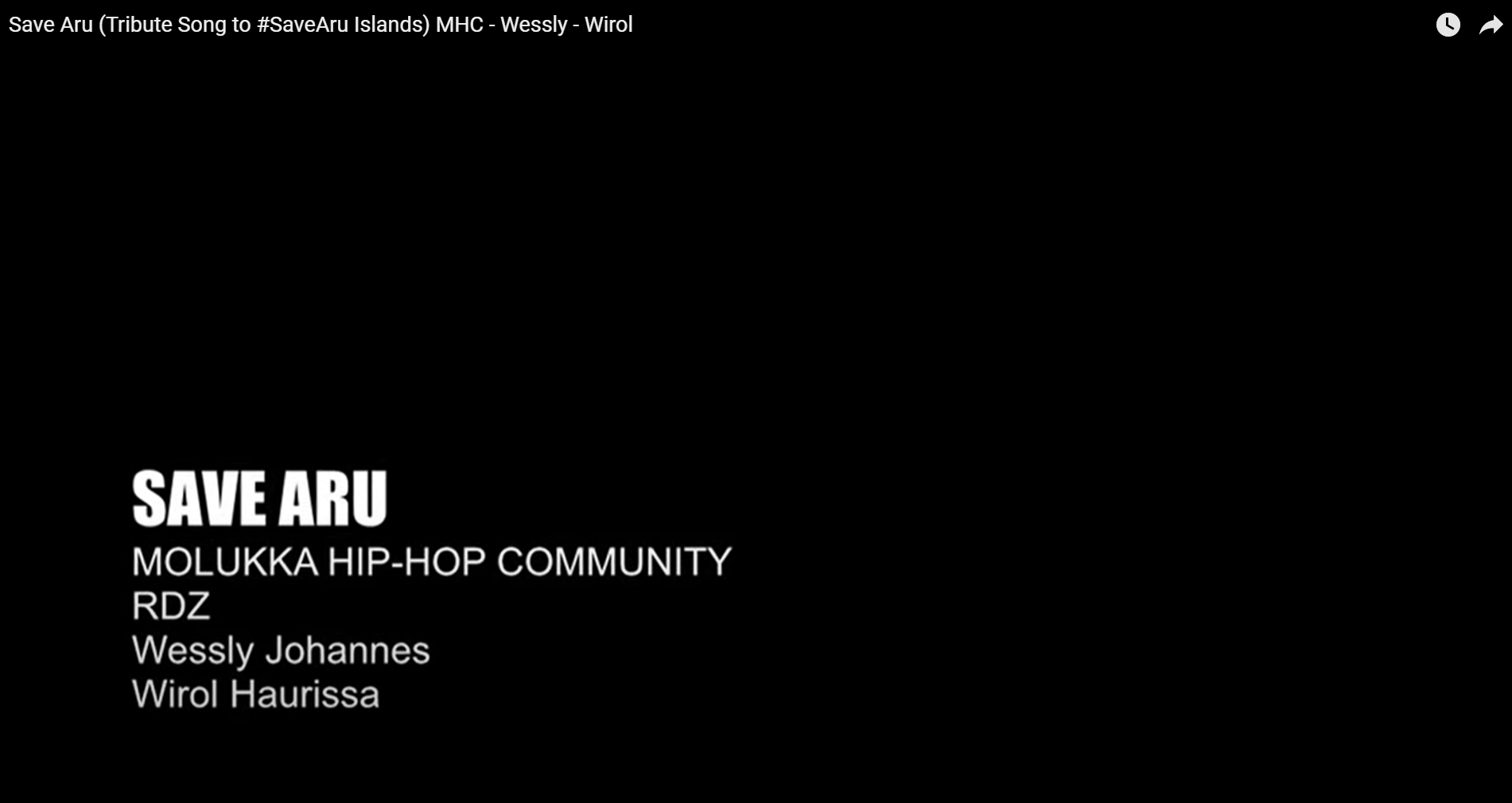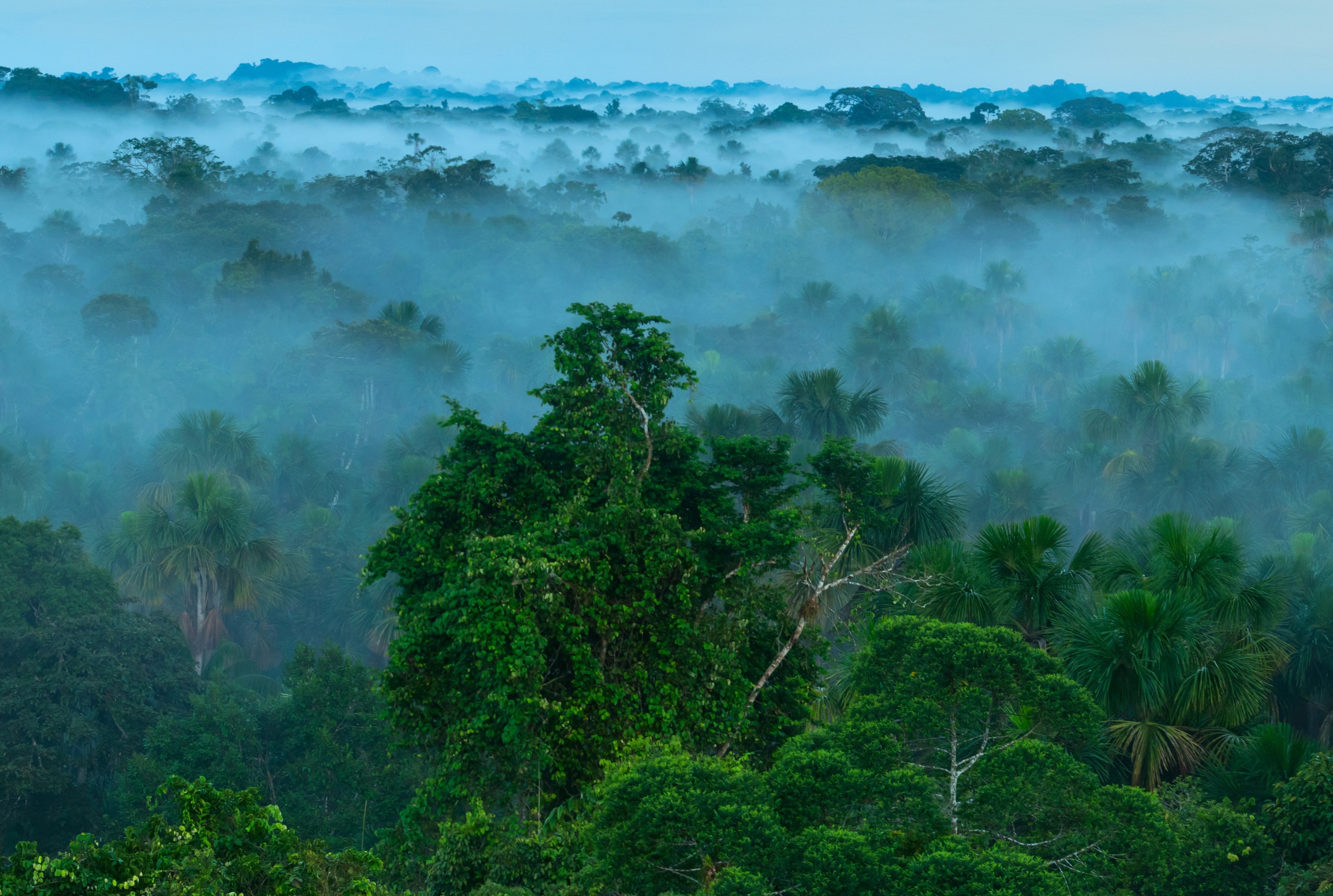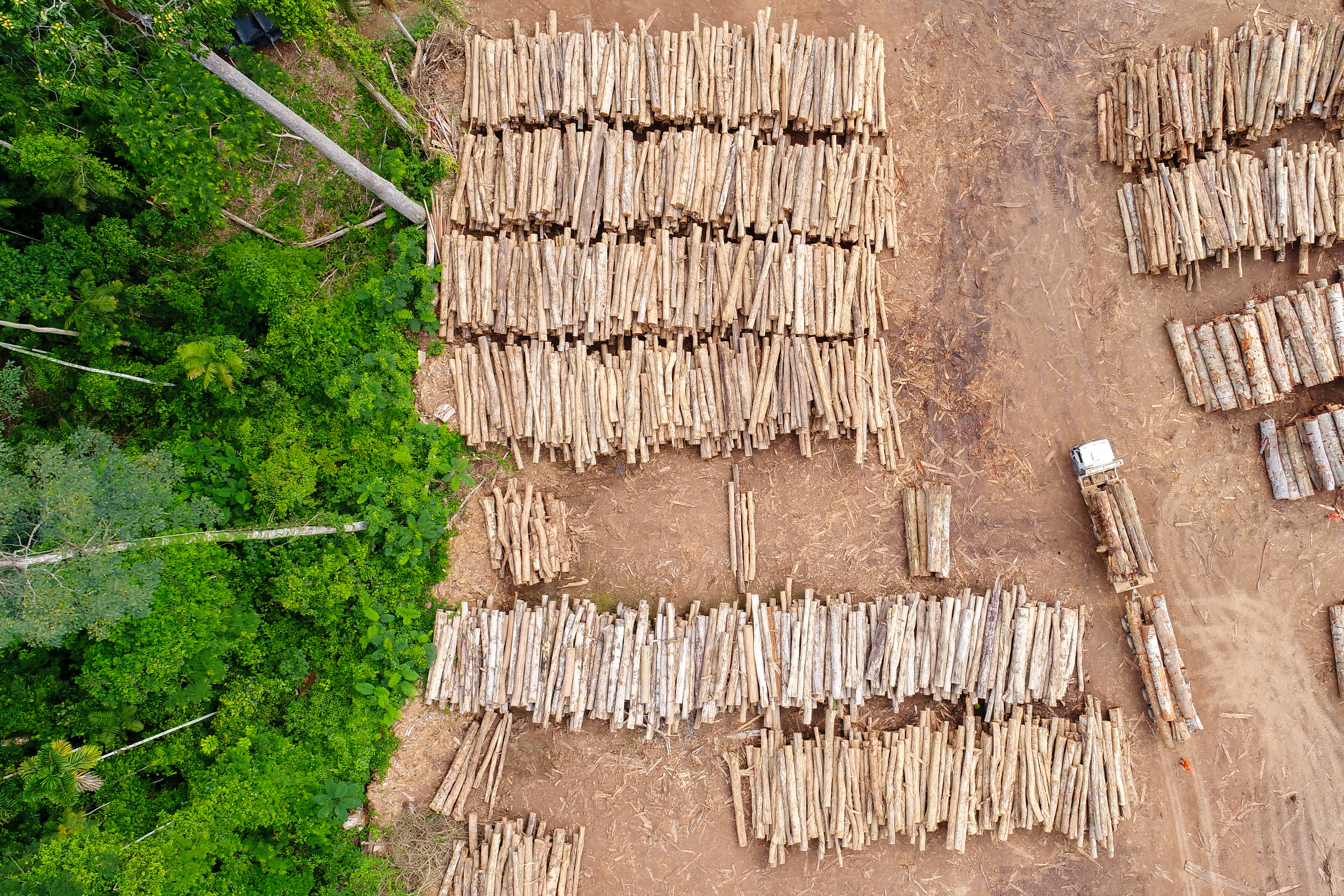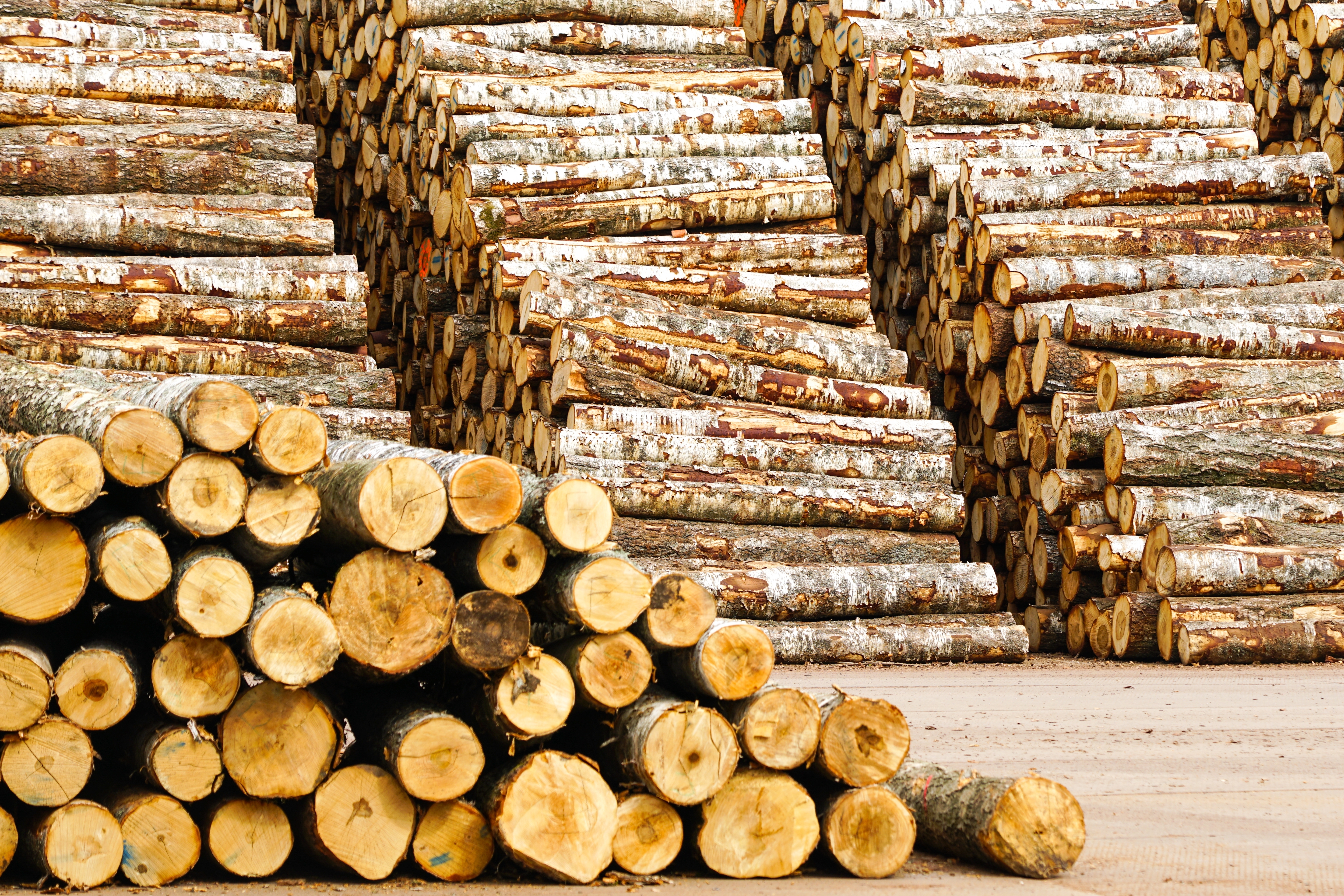- In the mid-1800s, the extraordinary biodiversity of the Aru Islands helped inspire the theory of evolution by natural selection.
- Several years ago, however, a corrupt politician granted a single company permission to convert most of the islands’ rainforests into a vast sugar plantation.
- The people of Aru fought back. Today, the story of their grassroots campaign resonates across the world as a growing global movement seeks to force governments to act on climate change.
(Baca dalam Bahasa Indonesia.)
This is a trailer for Saving Aru. Watch the full film and more from the Indonesia for Sale series here.
Part One: The movement begins
Late one rainy night in August 2013, a college student named Collin Leppuy arrived at the doorstep of Father Jacky Manuputty, a church minister in the coastal city of Ambon, Indonesia. He had come to ask for help; his homeland was under threat.
Collin, then 23, had grown up in the Aru Islands, a heavily forested archipelago in the eastern margins of the world’s largest island nation. He was studying social welfare policy at a university in Ambon, the capital of Maluku province. Collin had recently organized rallies in the city against a corrupt politician who had governed Aru for nearly a decade. Convicted of siphoning off millions of dollars in state funds, the politician had absconded before law enforcers finally caught up with him. Collin had felt proud of the outcome, but this gave way to a renewed sense of urgency when he discovered what else the politician had done before his arrest.
For decades, Aru had escaped the attention of the companies clearing Indonesia’s rainforests. But as the jungles of Java, Sumatra and Borneo dwindled, those in search of timber and agricultural land began to look east. Aru now lay in the sights of a company called the Menara Group. Collin had learned that before he was ousted from office, the politician had secretly approved a plan by Menara to plant sugarcane across nearly two-thirds of Aru. If it went ahead, the firm would reap billions of dollars by logging Aru’s forests and replacing them with what could be the world’s biggest sugar plantation. But it would destroy the existing livelihoods and food supplies of tens of thousands of people, including Collin’s friends and family. It would ruin the habitats of Aru’s unique wildlife, of animals like the ethereal birds-of-paradise, and the natural world from which the Aruese drew their identity.
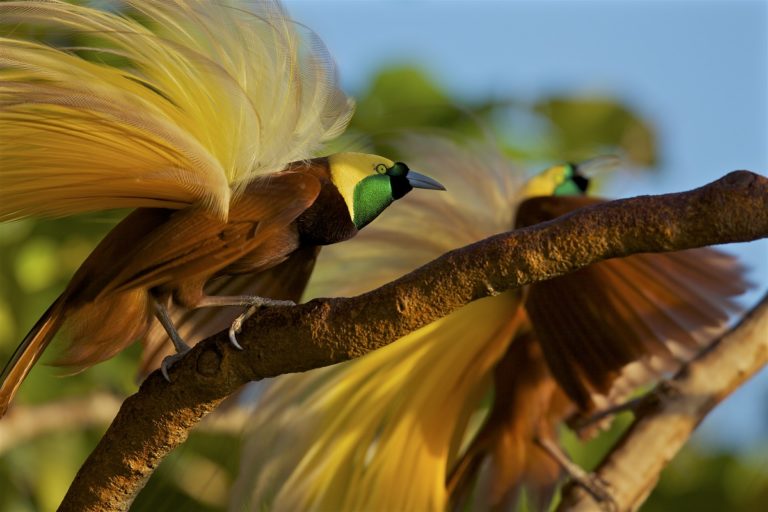
Male greater birds-of-paradise (Paradisaea apoda) display their plumage in the Aru Islands
Jacky welcomed Collin into his house and listened to his appeal for help. Then in his late 40s, with closely cropped, curly black hair, a thick moustache and a gentle but stern demeanour, Jacky held a senior position in the Protestant Church of Maluku, which had more than 700 parishes across the region. As a younger man, Jacky had been inspired by the ideas of liberation theology, a Christian movement that emerged in Latin America to aid the poor and oppressed, and by popular uprisings against authoritarianism. He had spent decades helping rural communities in eastern Indonesia fend off unsolicited advances from extractive companies. Now Collin wanted Jacky to do the same for the Aruese.
Jacky was wary. He knew how fraught things could get for indigenous groups who resisted government-backed projects. On his home island of Haruku, a short boat ride from Ambon, his own community had fractured when a mining firm tried to gain a foothold. Clashes between neighbouring villages for and against the project had turned violent. Jacky’s side had tried to sue the company, but the conflict reached a decisive end only when villagers burned the firm’s camp to the ground. Now, Jacky wondered if the Aruese would be strongly united in their opposition to the sugar plantation, or if he might be walking into a situation that could spiral out of control.
As the rain pattered down, Jacky and Collin formed a plan. They would invite Aruese students in Ambon to a candlelight vigil as an act of solidarity. Collin would gather his peers in a classroom at his university, and Jacky would lead them in prayer. Then they would all discuss how best to proceed.
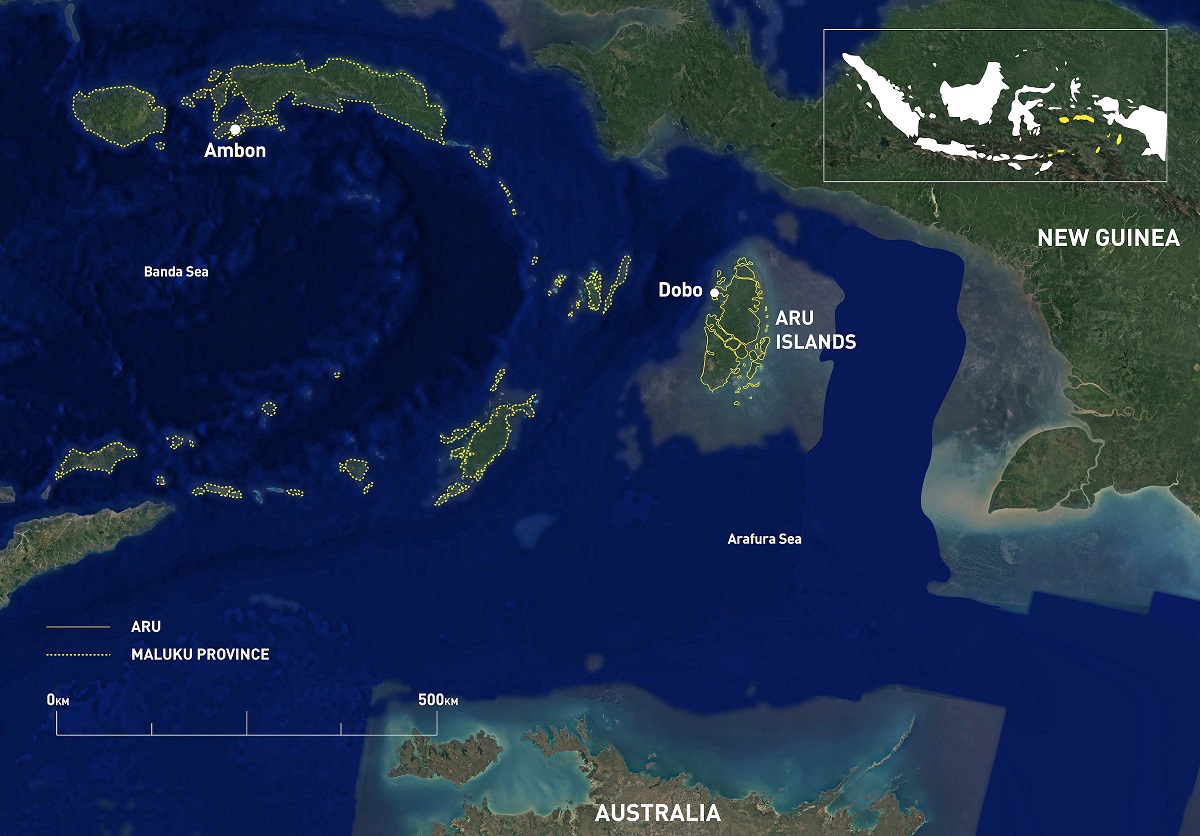
The Aru Islands’ total area is 8,570 square kilometers (3,310 square miles), about the size of Puerto Rico.
The following night, Collin arrived with a dozen students. During Jacky’s service, they asked if they could sing a folk song that told the origin myth of Aru’s people. Jacky listened as they murmured the lyrics, recounting a quarrel between two brothers over a golden spear with supernatural powers for catching fish. The brothers’ infighting prompted God to strike their island with an earthquake and tidal wave, splitting it in two and forcing its inhabitants to set sail for the archipelago known today as Aru.
“Don’t start this struggle if you’re not proud of your identity as Aruese,” he warned. “If you are not, then the company will come and pay you, and pick you off one by one.
“Sing it again,” he said. “More dynamic than you sing the national anthem.”
They did, this time with more verve.
At the end of the evening, they wrote two words on pieces of paper: SOS ARU.
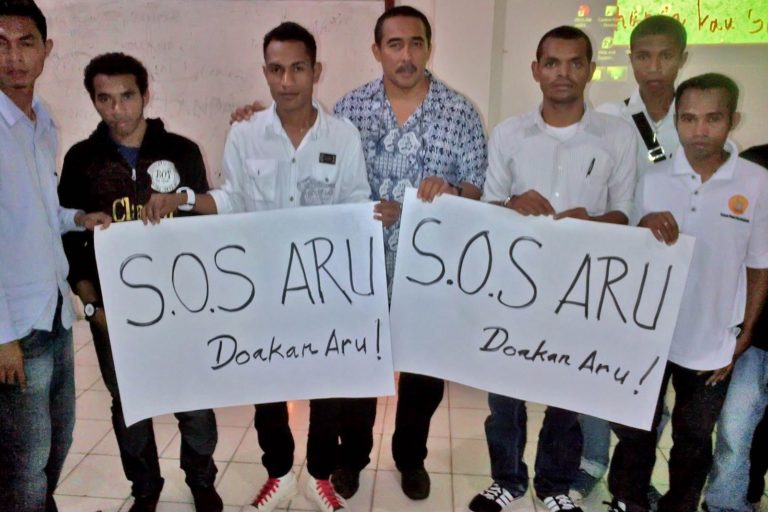
Jacky, center, stands with Collin, third from right, and the other students at the candlelight vigil in August 2013. The signs say, “Pray for Aru!”
Over the coming months this phrase, and others like it, would become a clarion call for a grassroots movement that reverberated from Aru to Ambon, to Jakarta, the capital of Indonesia, and far beyond.
It brought together indigenous men and women of all ages, a cast of outsiders who rallied to their cause, and supporters from around the globe. At stake were competing visions of development. The company and its political backers told the Aruese they were backward and poor, and that the only way out was to trust their fate to a faceless conglomerate. But the people of Aru took stock of the natural world that surrounded them, and they said no.
It would soon become clear they were fighting not just against a plantation, but for something more fundamental — to make government accountable to the people, in a country where business interests have widely co-opted the levers of state power. It was a battle whose outcome would decide the fate of one of the world’s last great tracts of rainforest, and of the people whose lives and culture were entwined with it. Today their struggle resonates across the planet, as a growing global movement seeks to confront the same binary choice between prosperity and the environment that the Aruese decided, to profound effect, was false.
But at first, it was just a dozen students, a priest and two words on paper.
“That’s the movement starting,” Jacky would later say. “In that room.”
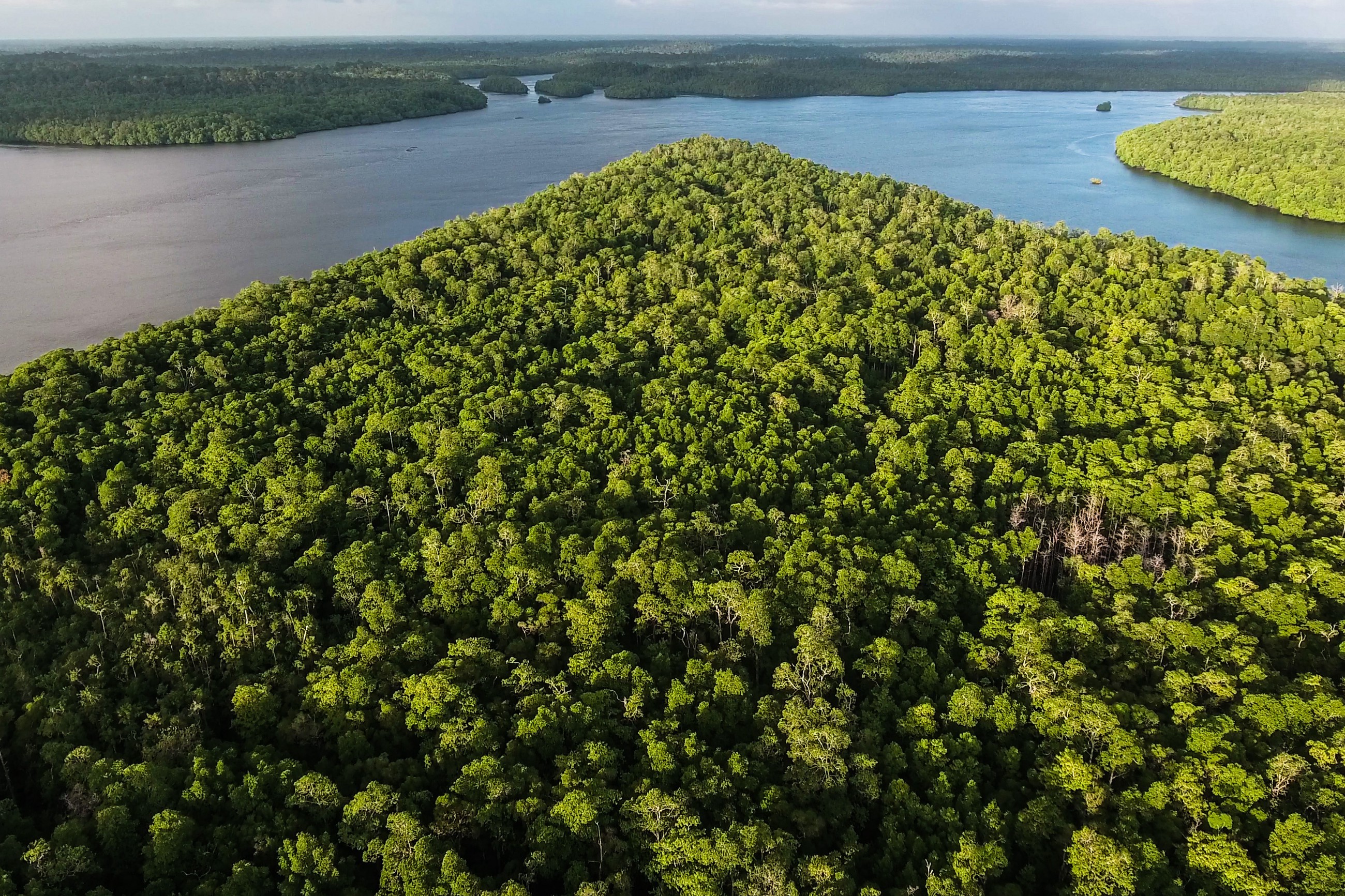
Part Two: ‘In the end, it comes down to power’
Thousands of years before the Menara Group arrived in Aru, the archipelago was part of a giant landmass that also encompassed Australia and New Guinea. This was before the oceans rose at the end of the last ice age, turning Aru from a series of porous hills on the edge of an ancient supercontinent into a clutch of islands in the western Pacific. This geological past has shaped Aru into a rare landscape, with rich forests underlain by karst rock, riddled with caves and underground springs. The islands, packed closely together, are divided east to west by three winding, saltwater channels opening out to the sea at either end. The coast is fringed by walls of coral, limestone cliffs and mangrove swamps.
Biologically, Aru is a world apart from the better-known islands to the west. It shows no traces of the big cats, primates and elephants that evolved on Java, Sumatra and Borneo, which were once attached to mainland Asia. Aru’s plant and animal life more closely resembles the biomes of southern New Guinea and northern Australia, with its own unique twist brought on by millennia of ecological isolation. Today Aru is home to kangaroos that live in trees and flightless cassowary birds that race through the undergrowth.
The pioneering naturalist Alfred Russel Wallace “reveled in the delights” of exploring Aru’s flora and fauna, describing it as “one of the most remarkable and most beautiful and least known in the world.” That has scarcely changed: the global scientific community’s knowledge of Aru’s biodiversity remains “surprisingly incomplete,” researchers Ken Aplin and Juliette Pasveer wrote in 2005: “During the last half-century, relatively few biologists have visited the islands and none for more than a few weeks.”
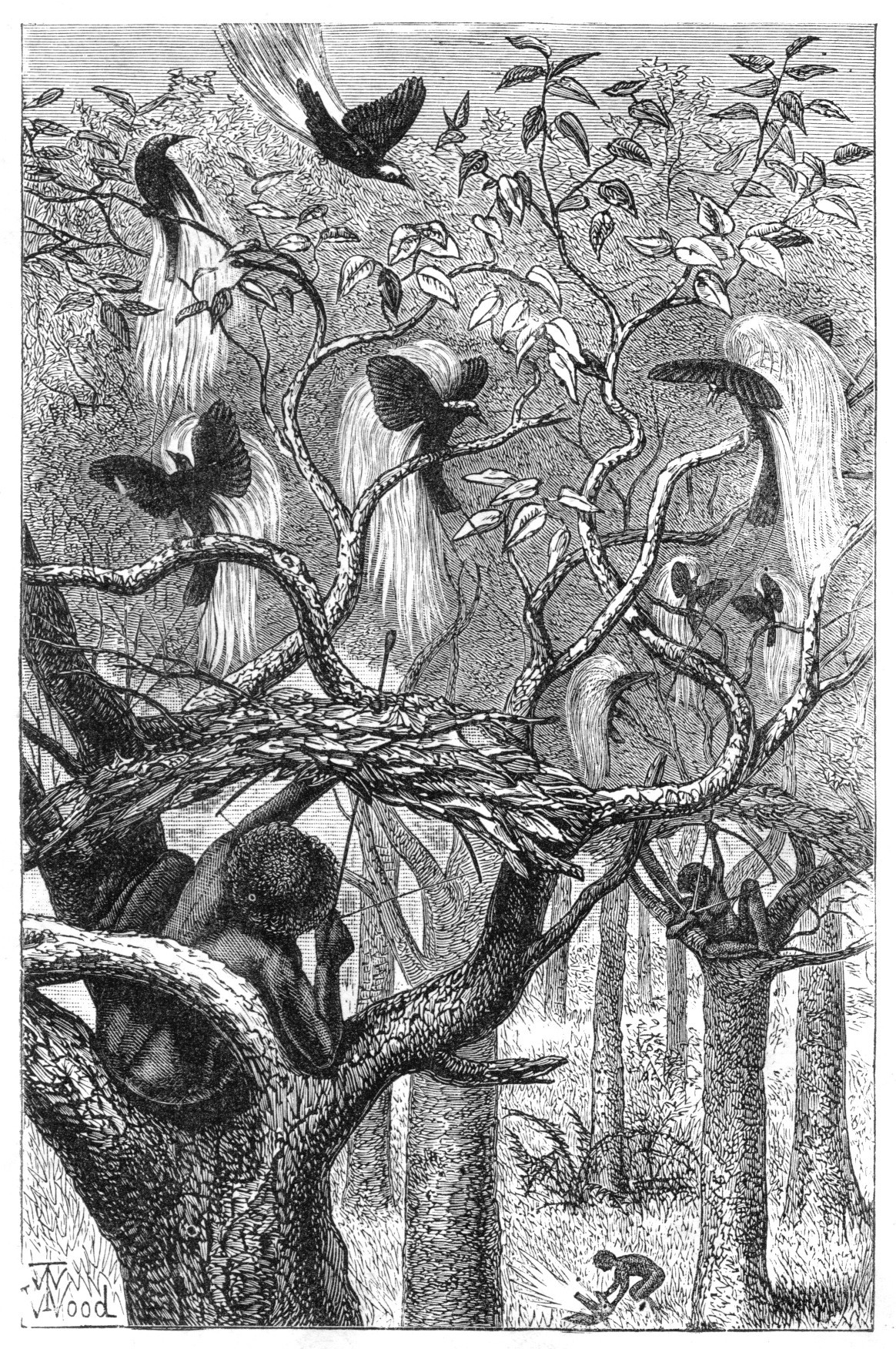
This drawing, by natural-history illustrator Thomas Wood, appeared in Wallace’s 1869 magnum opus, “The Malay Archipelago.” It was titled “Natives of Aru shooting the great bird of paradise.
In the mid-1800s, Wallace traveled for eight years through the archipelago that now forms Indonesia. It was Aru that dazzled him most. He wrote in his journal, “I think how many besides myself have longed to reach these almost fairy realms, and to see with their own eyes the many wonderful and beautiful things which I am daily encountering.” His six-month stay in Aru inspired his revolutionary ideas about how life evolved on Earth. He was co-credited with the theory of evolution by his more famous contemporary, Charles Darwin, who had a similar revelatory experience in the Galápagos Islands.
In 1857, when Wallace arrived in Aru’s main town of Dobo, he found a bustling port connected to the world by ancient trade routes that gave it a distinctly global feel. Fine pearls and tortoiseshell made their way to Europe, while delicacies such as shark fins, birds’ nests and sea cucumbers went to China. Aru also exported greater bird-of-paradise feathers, silky yellow plumes that adorned the crowns of rulers in distant lands, from Spain to Nepal. Dobo was peopled by Buginese and Chinese merchants sailing in on wooden ships; traders from elsewhere in the Moluccas, as the region was then known; and Aruese bringing out exotic goods from the interior. “I dare say there are now near five hundred people in [Dobo] of various races,” Wallace wrote, “all met in this remote corner of the East, as they express it, ‘to look for their fortune’; to get money any way they can.”
In the second half of the 20th century, the Indonesian government sought to settle the nomadic foragers living in Aru’s forests into permanent villages along rivers and coasts. Like indigenous peoples across the country, the Aruese were forced to convert to one of the six state-sanctioned religions; they mostly picked Christianity and, to a lesser extent, Islam. But while the government made some incursions into their lives — in the early 1990s, the navy angered villagers in southern Aru when it commandeered their lands for an air base — the Aruese were generally left alone. Numbering more than 60,000 people at the turn of the century, speaking 14 different indigenous languages and organised into clans spread across 117 villages, they governed themselves based on complex systems of traditional law. Even as they transitioned to a more settled lifestyle, they relied largely on nature, hunting deer, boar and wallabies and harvesting crabs, tree gum and other natural goods. They maintained a spiritual connection to the forest, believed to be inhabited by the souls of their ancestors.

A woman sells vegetables at the market in Dobo
Yet many Aruese yearned for the fruits of economic life they could only find away from their villages. While they had free access to marine and forest products, the trade in these commodities was generally controlled by Dobo merchants or foreign companies, cutting the Aruese out of most of the profits. Some locals migrated as wage labourers, working on Dobo construction projects, industrial fishing boats or plantations elsewhere in the country. Any cash they earned went a long way at home, where it could help build a house, pay school fees, or buy cell phones or boating equipment.
Despite a wealth of natural resources, Aru was one of the least developed parts of Indonesia. In the 1990s, the national government officially designated nearly all of its villages as “left behind,” marking them as particularly underdeveloped. Many Indonesians looked down on marginalised groups like the Aruese as primitive and uncivilised. These stereotypes, and the prejudices they imposed, gave rise among some of Aru’s people to a craving for development, even if that desire sometimes lacked a clear direction, and the ultimate goal was vaguely defined.
In 2005, as Indonesia was transitioning from dictatorship to democracy, a retired army colonel named Theddy Tengko became Aru’s first district chief, or bupati, putting him in charge of the entire archipelago. Born in Aru to parents of Chinese descent, Theddy, who also had a law degree, oversaw large budgets for health care, roads and schools. But toward the end of his first term, the 54-year-old was charged with corruption. Prosecutors alleged he had embezzled $4.7 million, nearly a tenth of the district’s annual budget. Despite his status as a graft suspect, Theddy stood for re-election, and in July 2010 he won a second term. His defeated rivals challenged the result in the Constitutional Court, accusing him of buying votes, expunging thousands of voters from the electoral register and adding hundreds more fictitious ones.
Collin Leppuy, the campus activist, recalled how Theddy would visit the market along the Dobo docks and hand out cash. Sometimes he would throw rupiah notes worth a few dollars into the sea and watch the crowd jump into the water. “He did that a few times,” Collin said. “Everyone would forget themselves.” He bristled at the memory. “It was all fun and games. But after I grew up, I remembered those days and realised we had been tricked.”
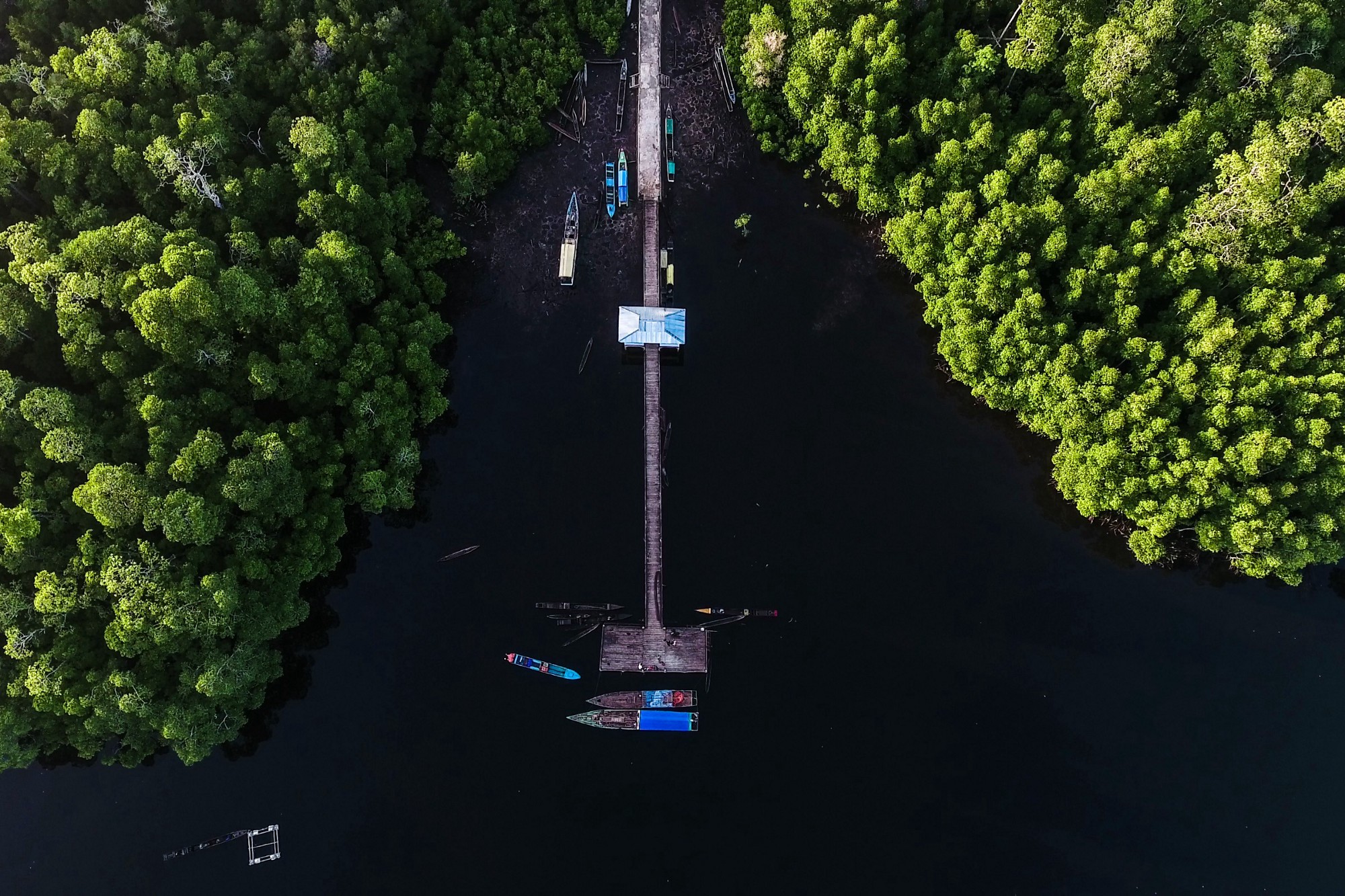
A dock outside a village in Aru. Boats are the main way to get around in the archipelago. Image courtesy of Forest Watch Indonesia
The endless chemical inputs required to grow such a vast stretch of sugarcane would seep into the rivers and sea. By Forest Watch Indonesia.
In the weeks after the vote, the court upheld Theddy’s election win, allowing him to resume his post as bupati while the corruption case went ahead. But as popular protests mounted against Theddy for keeping his grasp on power amid a graft scandal, he was involved in another scheme with far greater implications.
Just five days before the Aruese went to the polls, Theddy had secretly issued permits for a vast sugar plantation covering most of Aru. He then began to work on stripping nearly all of Aru’s forests of their conservation status, rezoning them for development to enable the project to proceed. The project wasn’t only a threat to the people of Aru. By 2010, Indonesia had risen to third in the global rankings of greenhouse gas emitters, behind only the U.S. and China, thanks largely to the destruction of its rainforests and carbon-rich peatlands for agriculture. Just two months before the Aru election, President Susilo Bambang Yudhoyono, who had made several high-profile commitments on the world stage to reduce emissions, had signed an agreement with Norway under which Indonesia would receive $1 billion to rein in forest clearing. But Theddy’s actions showed that other imperatives were at play away from the presidential palace in Jakarta. If the rainforests ceded to Menara were destroyed, it would release a volume of greenhouse gases equivalent to all international air travel in 2010.
Theddy had done all this without establishing a consultation process with local communities, as required by the 2009 Environmental Protection Act. This meant it would be years before his constituents were aware of the project. By then, it would be nearly too late to stop it.
It would be years before Theddy’s constituents were aware of the project. By then, it would be nearly too late to stop it.
Meanwhile, Theddy’s corruption case had stalled. In January 2011, Collin Leppuy and dozens of other students burned tires in front of the prosecutor’s office in Ambon. They vowed to demonstrate every day until the bupati was arrested. Two months later, the interior minister announced Theddy’s suspension from office due to the outstanding graft charges, but he remained in office in Dobo with the support of loyal officials. In April 2012, the Supreme Court found him guilty of corruption, but his lawyers kept him out of prison through legal manoeuvres that pitted his political clout against the judicial system. Soon, the interior ministry reinstated him as bupati, even as prosecutors named him a fugitive from justice.
“We can debate the legality of this forever,” said a member of Theddy’s legal team, Yusril Ihza Mahendra. “In the end, it comes down to power.”
A manhunt ensued. In December 2012, prosecutors tracked Theddy to a hotel in Jakarta, arrested him and brought him to the city’s main airport to be flown back to Maluku. But before they could board the plane, a mob of some 50 people surrounded the law enforcers and forced them to let Theddy go. A spokesman for the prosecutor’s office later described the incident as “anarchic” and “thuggish.”
A more violent scene unfolded in May 2013. For a month, hundreds of Aruese of all ages, fed up with Theddy’s antics, had camped out in front of the prosecutor’s office in Dobo, setting up a general kitchen and places to sleep. But when a pair of local law enforcers were surveilling Theddy, his men assaulted them in the yard in front of the bupati’s office, leaving them hospitalised. One required seven stitches in the back of his head.
After that, the latitude Theddy enjoyed in the rule of law finally reached its limits. On May 29, 2013, he touched down at Rar Gwamar Airport in Dobo and was met by prosecutors escorted by military and police. A video shows Theddy striding down the tarmac with his bodyguards as the soldiers approach him. He stops and listens, and resists as they drag and shove him onto a waiting plane, which then takes off for Ambon. From there he was transferred to a prison for corruption convicts on the island of Java. A year later, he died there of a heart attack after playing a round of doubles tennis.
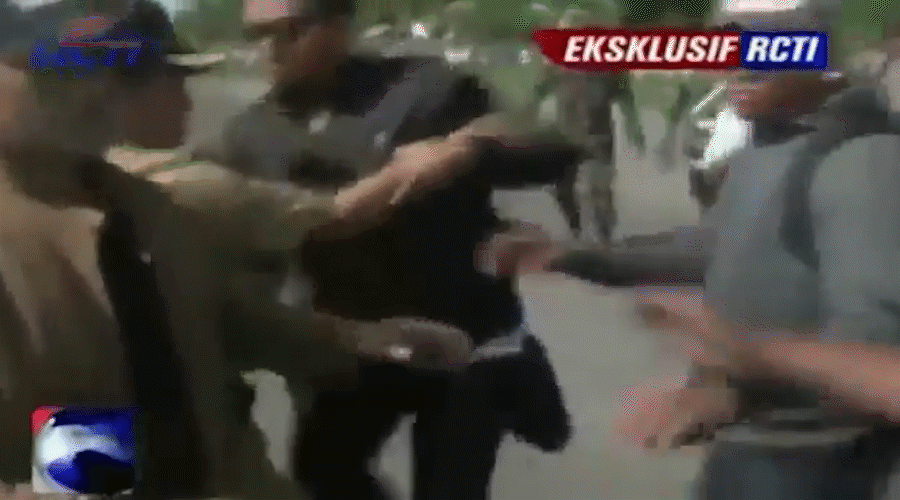
Theddy’s eventual incarceration marked an important victory for those who had called for justice. But they had little time to celebrate. By the time of his arrest, news of the sugar project had begun to trickle out. As early as 2011, a district government official addressing the annual congress of the Protestant Church of Maluku, held that year in Dobo, had mentioned it in a speech. The official was light on specifics, but he claimed the plantation would support 250,000 workers — three times Aru’s entire population. Meanwhile, people in remote villages had begun to encounter the company’s surveyors taking soil samples and measuring the diameters of trees. Among the few details to emerge was that the entire project had been granted to just one company, the Menara Group.
One of the first people to catch wind of the scheme was Costansius Kolatfeka, a Malukan who ran an environmental foundation in Ambon. In 2012, he decided to travel to Aru to see how people felt about it. He found that, except for a few Aruese who had met the surveyors or heard rumors in Dobo, no one knew about the plantation. For almost everyone, the first they heard of it was from him. “They were shocked, just blown away,” he recalled. “They couldn’t believe their own government had allowed this company to enter Aru.” Returning to Ambon, Costansius tried to spread the word, focusing on Aruese students on college campuses. Among those whose attention he captured was Collin Leppuy. A few months after Theddy’s arrest, Collin approached Jacky Manuputty for help.
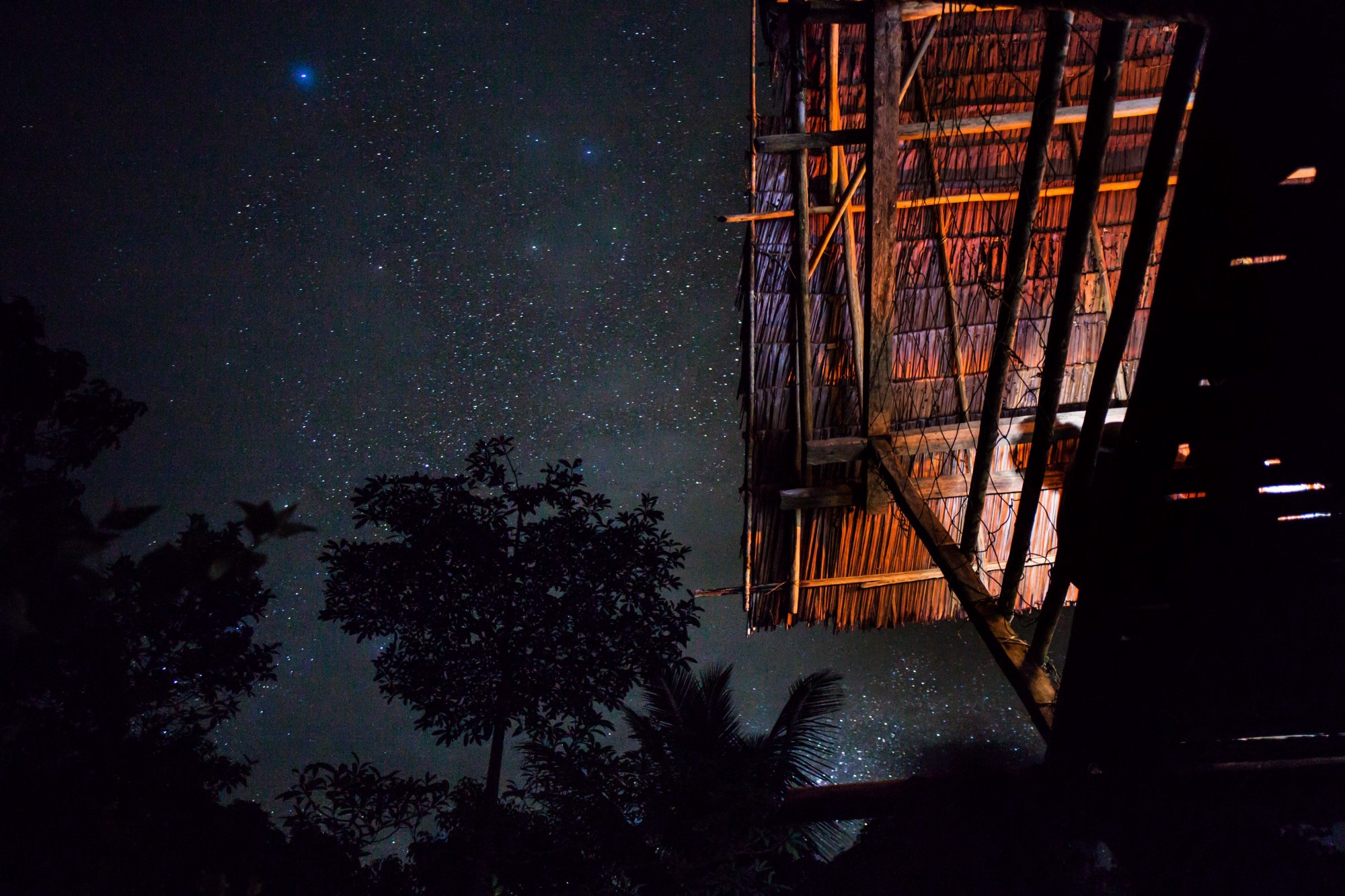
A starry night in Lorang, a village in central Aru
At the Ambon candlelight vigil, in August 2013, Jacky urged the Aruese students to rally their friends and family back home. Details remained scarce, but the activists knew the agribusiness development plan was far bigger than anything Maluku had ever seen. “When the company came, it was like a great darkness fell over us,” Colin said later. “And our way to light up this darkness was to use candles. The candles were a symbol of our intent to enlighten the people of Aru.”
Still, many in Aru were ambivalent. Some even dared hope the project would be a good thing, bringing cash and jobs. But those who had opposed Theddy saw it not as a harbinger of progress but as an extension of his corrupt regime. If plantations elsewhere in Indonesia were any guide, the best jobs with the company would go to outsiders seen as more skilled, while the rest would go to an army of landless labourers brought in from outside. Meanwhile, the forest would be destroyed. “The people of Aru depend on nature,” said Samuel Irmuply, one of the anti-Theddy student protesters. “If our environment is conquered by this giant company, where would we live?”
“When the company came, it was like a great darkness fell over us. The candles were a symbol of our intent to enlighten the people of Aru.”
Within a month of the vigil, the Aruese who had rallied against Theddy had shifted their attention toward the Menara Group. They wanted the government to cancel the project, but they were racing against the clock. By this time, Menara, with permits from Theddy’s district administration in hand, was working to secure the final approvals needed from the provincial and national governments, in Ambon and Jakarta. But like everything that went before, this process was hidden from view.
“For years we fought against Theddy, and then we realised we had to fight this big corporation,” Collin would later say. “Only after we brought him down could we take them on.”
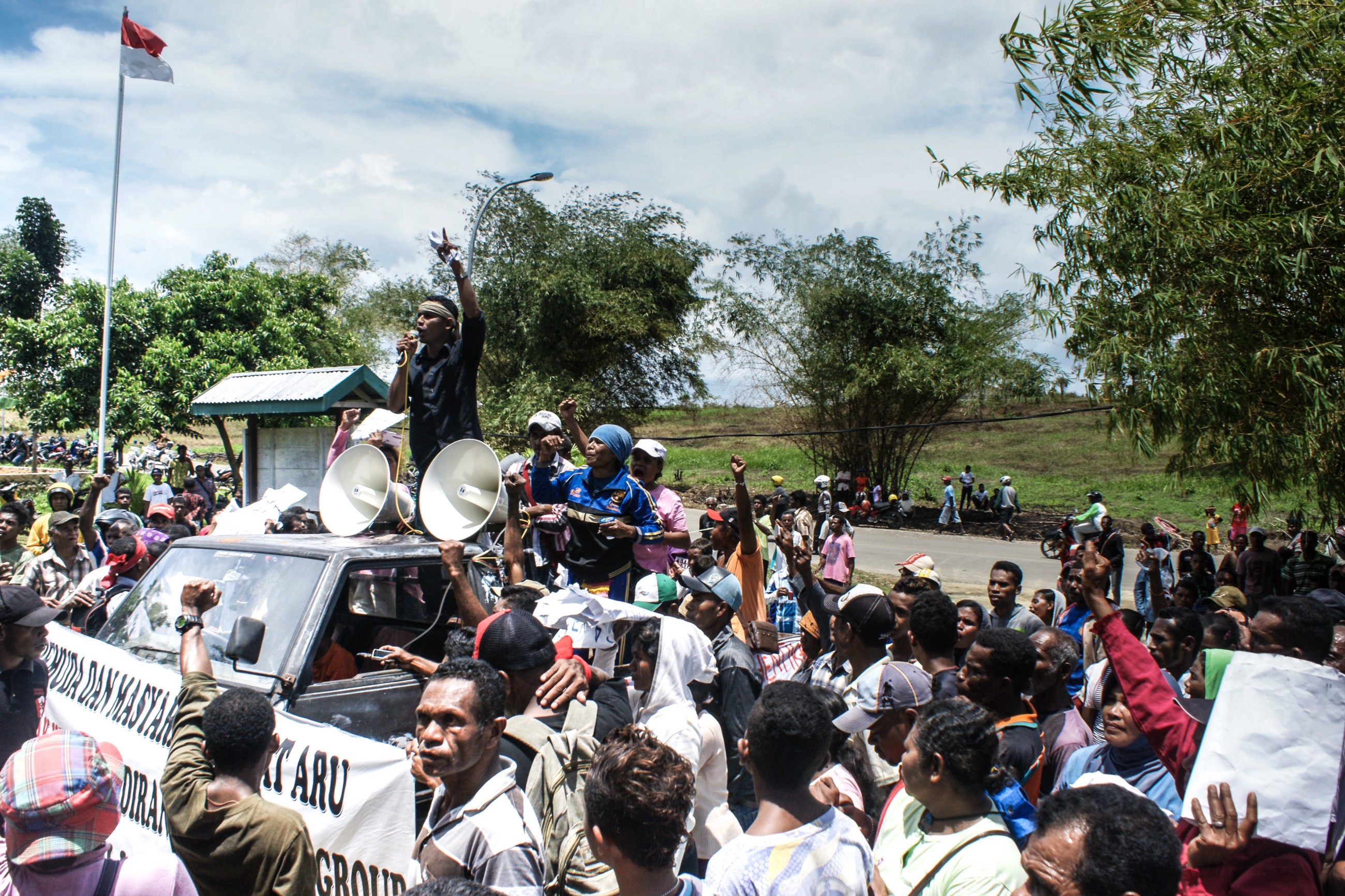
Part Three: ‘The provocateur is coming’
By September 2013, a month after the candlelight vigil, Jacky Manuputty had committed to helping the Aruese. Any hesitation had dissipated early that month when he received a delegation of Aruese elders at his office in Ambon. Things in Dobo were heating up, they reported. In late August, more than a thousand indigenous people had flooded the streets, carrying homemade signs bearing impassioned slogans: “the youth of Aru reject Menara” and “we still want to see the birds-of-paradise sing and dance.” Massing outside low-slung government buildings, protesters had shouted their demands through megaphones at bureaucrats flanked by police. Still, the Menara Group’s surveyors continued to explore Aru’s forests, accompanied by young men from Dobo whom they had paid to be their guides. But the media was barely covering it, the elders lamented. No one seemed to care about their struggle.
Jacky wasn’t surprised at their difficulty attracting attention. Indonesia was rife with conflicts between rural communities and corporations. The nation’s biggest media outlets, mainly owned by billionaires with fortunes partly based on exploiting natural resources, tended to ignore such stories. Local journalists were under-resourced, and none had taken a serious interest in Aru. Yet Jacky knew that if the Aruese were going to compel the government to cancel the project, they needed to get their message out. To help them, the pastor had to recruit a team with experience. He knew just where to turn.
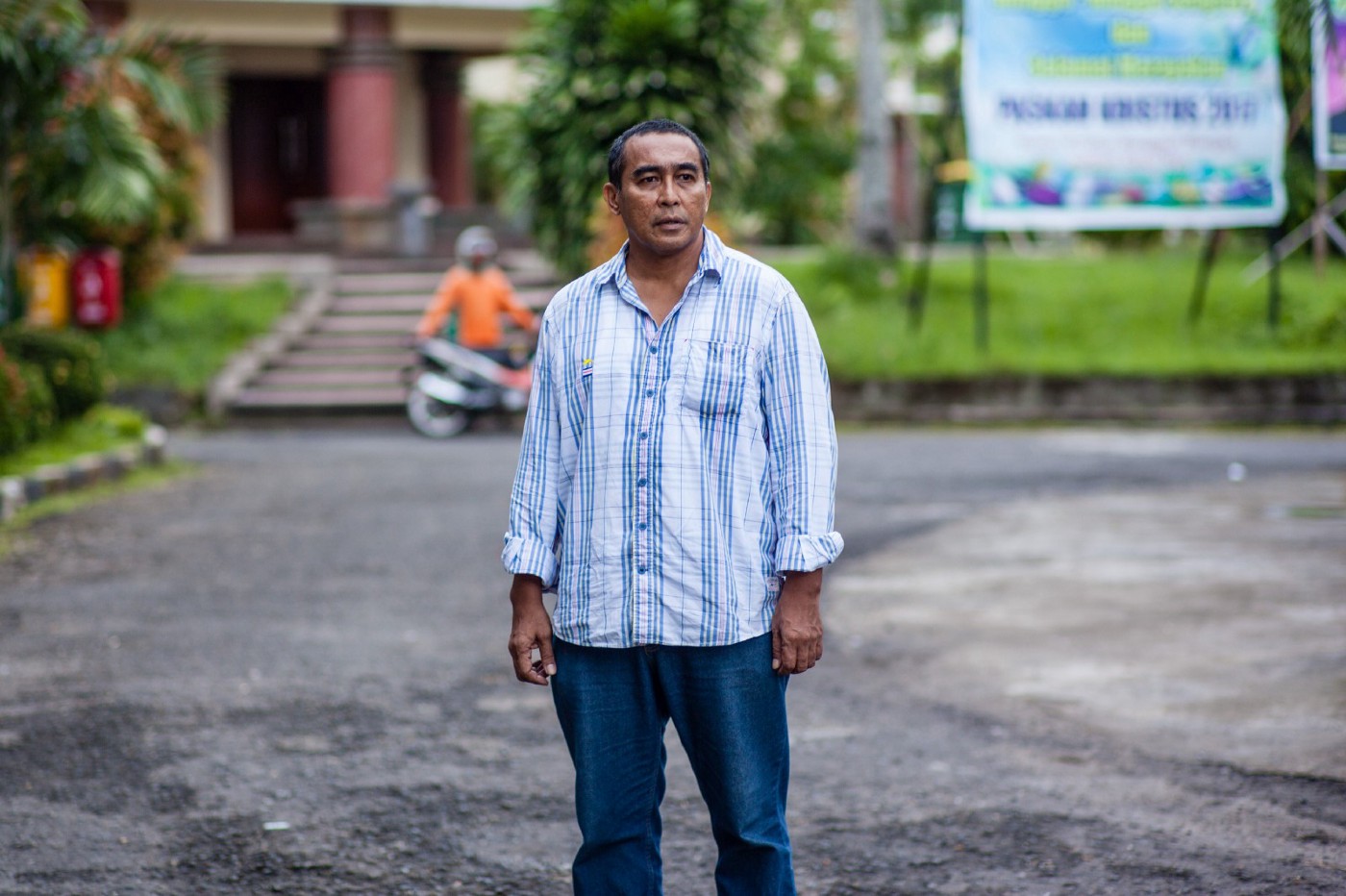
Jacky Manuputty at the headquarters of the Protestant Church of Maluku in Ambon
One of Jacky’s defining experiences as a community organiser had come in the wake of the ethno-religious violence that convulsed Maluku following the collapse of President Suharto’s dictatorship in 1998. Pitting Christians against Muslims, the conflict left at least 5,000 people dead and an estimated 700,000 displaced. As tensions cooled, Jacky became deeply involved in peace-building. In Ambon, he helped establish interfaith youth groups focused on creative pursuits like poetry, literature, photography and dance. “If we approached them with religious discourse, it wouldn’t have worked, because people were still traumatised by the role religion had played in the conflict,” Jacky said. “We had to use other mediums.” One group he set up with a local imam, Peace Provocateurs, used SMS text blasts to debunk potentially dangerous rumours. The groups were formed to heal relations between the faiths. Now, Jacky meant to harness them to save Aru.
Jacky sought out influential young people like Habib Almaskaty, an understated yet passionate 28-year-old who had founded a group of local bloggers. As a boy, Habib, a Muslim, had been forced to stay with family elsewhere in Maluku when violence took hold in the provincial capital. He went on to study computer science at a university in Java before returning to Ambon, around 2007, to work at an internet cafe. He started blogging about his home. Maluku was a region of ancient cultures on volcanic islands ringed by coral reefs. But whenever Habib typed “Ambon” or “Maluku” into a search engine, the autocomplete would bring up terms like “tragedy” and “violence.” “I started writing about the nicer things in Ambon,” he said. “That was one of the reasons I wanted to blog, because I thought Ambon had potential.”
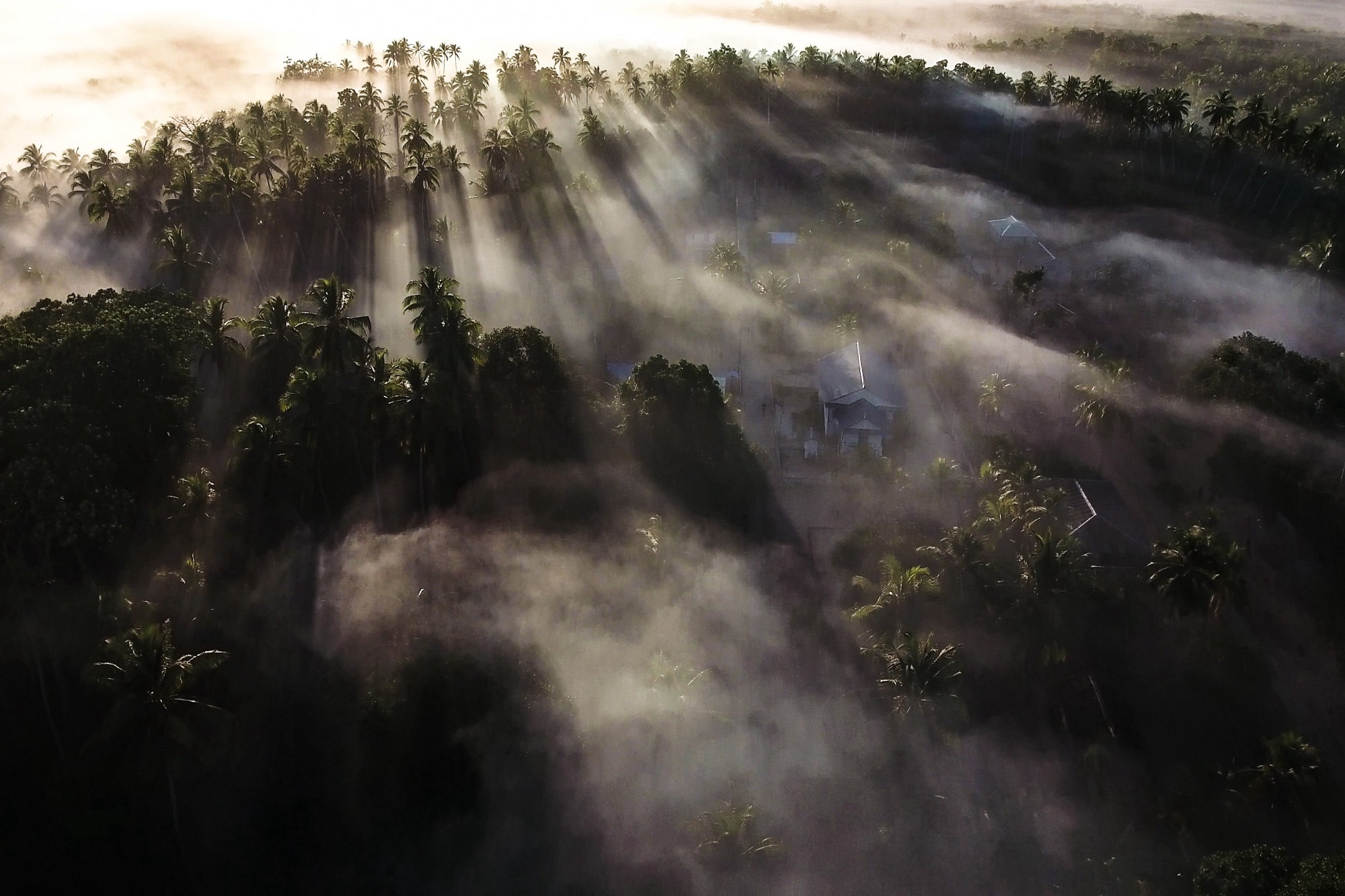
A village nestled among coconut palms on a misty morning in Aru. The sugar project threatened to destroy the existing livelihoods and food supplies of tens of thousands of people
Jacky made Habib head of the campaign’s social media team. He also recruited some of the young man’s childhood friends: a pair of Christians named Weslly Johannes, of the Maluku Literature Workshop, and Pierre Ajawaila, founder of a wiki-type website about Maluku. Other key figures included Revelino Barry of the Molukka Hip-hop Community, Linda Holle, a staff member at the Maluku office of the National Commission on Human Rights, and Djuliyati Toisuta, a founder of Maluku Baronda, which sought to promote tourism in the province. This core group became the backbone of the “online campaign,” whose activities would amplify the work of the activists in Aru. They set up a website, Facebook and Twitter pages, and settled on a hashtag for social media: #SaveAru.
Habib wanted to make Aru a household name among Indonesians. He knew it was a tall order. “Malukans themselves see Aru as a ‘backward’ place,” he said. “They don’t pay it much attention.” He set his sights on the nation’s capital, one of the world’s most active cities on Twitter and Facebook. “If you can get people in Jakarta talking about it on social media, it has a feedback effect, and people in Maluku will see.”
“Did these companies really exist, or were they just fictitious companies formed to carve up this huge area of land?”
Meanwhile, Jacky and some of his more seasoned colleagues turned their focus to a different question: Just who and what was the Menara Group? To find answers, Jacky enlisted Yohanes Balubun, the head of the Maluku chapter of the Indigenous Peoples Alliance of the Archipelago, or AMAN, the nation’s biggest advocacy group for indigenous rights. A member of the Ohoi El community of Maluku’s Kei Islands and trained as a lawyer, Yohanes brought to the table a sharp legal mind. Jacky also recruited a 23-year-old Aruese journalist named Maichel Koipuy, who lived in Ambon, to start digging.
Searching the internet yielded some insights. A 2012 article on the website of Malaysia’s The Star newspaper identified Menara’s president and CEO as a man named Chairul Anhar. It reported on Chairul’s claim, made at a press conference during an Islamic business forum in Malaysia, that Menara held the rights to 5,000 square kilometres of land for a sugar plantation in eastern Indonesia, nearly equivalent to the area licensed out in Aru. Chairul had expressed hope that his firm could supply Malaysia’s Felda Global Ventures, one of the world’s largest agribusinesses, with sugar. Menara, he said, was also involved in property, trading and IT, and would soon go public on the Jakarta Stock Exchange.
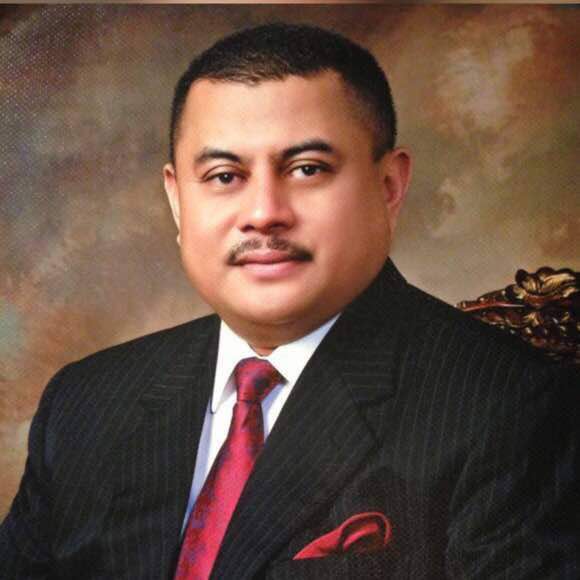
Chairul Anhar
The article, and a small number of others like it, generated the perception of a sprawling, diverse conglomerate. Even its name, menara, meaning “tower” in Indonesian, conveyed the idea of an imposing firm. But for a company claiming to be one of Indonesia’s largest landowners, surprisingly little information was available publicly. It didn’t even have a website. In fact, Jacky’s team could find no evidence Menara had ever been involved in plantations.
Working their connections inside the government, Jacky’s team got their hands on company documents laying out the plans. The documents showed the project was split into 28 blocks, each between two and four times the size of Manhattan. Each block had been allocated, via a permit from Theddy, to one of 28 different companies, each of which had a different person listed as the director. One of these people was Chairul Anhar. Other names led to people working for obscure finance firms in Jakarta, according to their social media profiles, or who had left little to no trace online. Underneath the lid of what was being presented as a single firm was a confusing array of legal entities, managed on paper by more than two dozen different individuals.
“We wanted to check: Did these companies really exist, or were they just fictitious companies formed to carve up this huge area of land?” Maichel said. The elaborate structure seemed like “camouflage,” he added, possibly a ruse to circumvent a legal requirement. None of the 28 land concessions was bigger than 200 square kilometres. But together they amounted to 4,845 square kilometres, more than three times what a single firm — like Menara — was allowed to manage under Indonesian law.

The 28 companies were registered to 25 different addresses in Jakarta. But when Jacky’s team sent friends in the capital to scope out the locations, they found anonymous storefronts or no building at all. They could find only one physical location associated with Menara that was actually in use: an office on the 25th floor of the Graha CIMB Niaga building in the city’s central business district. While many of Indonesia’s biggest natural-resource conglomerates were owned through complex corporate structures that made their precise contours difficult to discern, Menara was a different beast entirely: there was barely anything of substance to pin down.
Jacky’s team discovered one striking fact: Theddy had allowed Menara to skip a critical stage of the permit process, a criminal offence for the bupati with a maximum sentence of three years’ imprisonment. By law, Menara needed to formally assess how the plantation would affect the people and environment of Aru, before the district government could grant its licenses. The company should have consulted every village touched by the project, incorporating their views in an environmental impact assessment (EIA) that would then be reviewed by a panel including academics and community representatives. If Theddy had observed the law, the people of Aru could have raised objections as early as 2010.
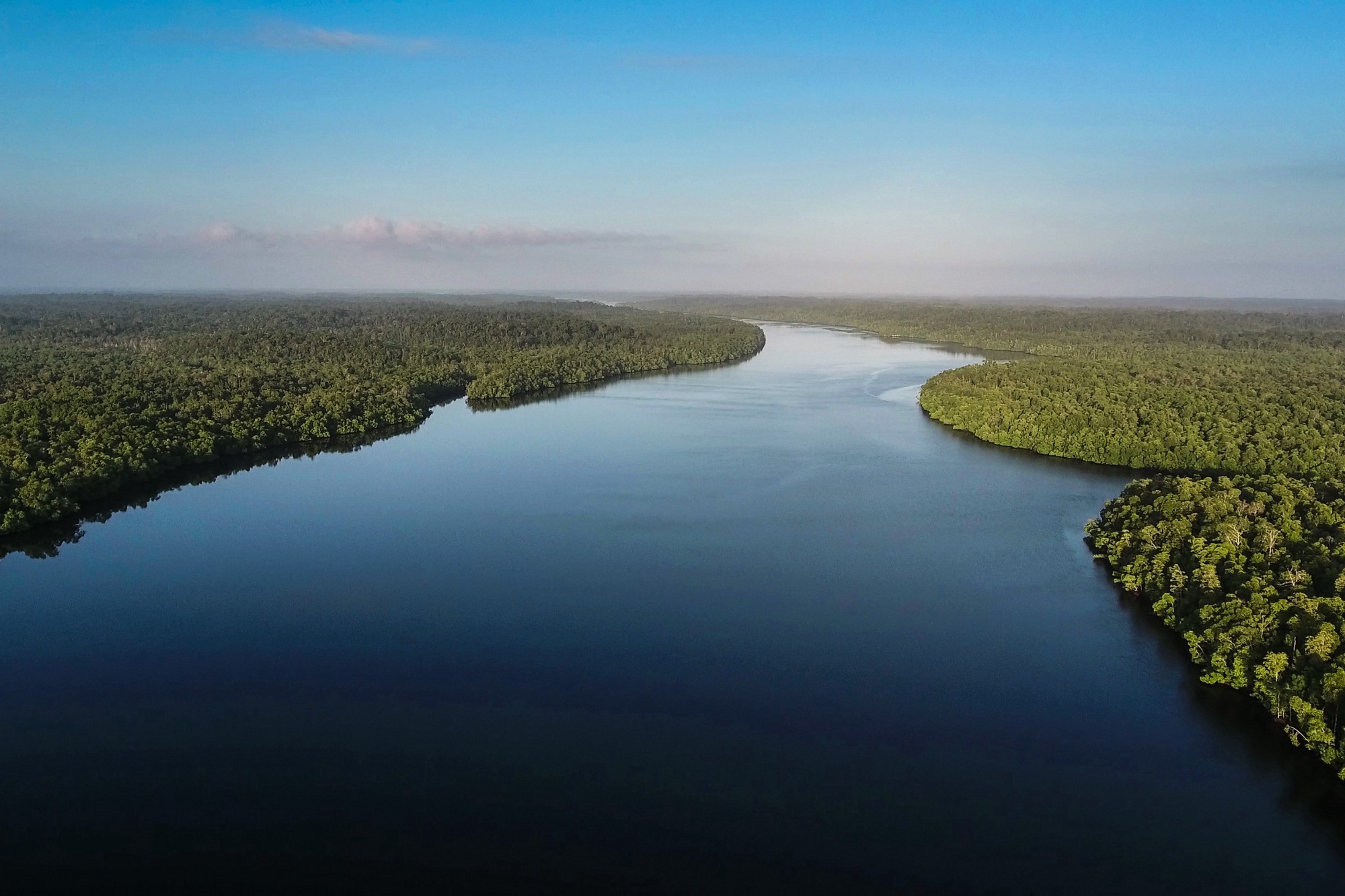
The Aruese were already in a legally fragile position. Indonesia’s 1945 Constitution originally recognised indigenous rights, the unwritten laws of communities governed by “custom.” But since then a succession of state laws had overridden those rights, handing control of indigenous lands and forests to the government. Almost the entirety of Aru was the property of the state, allowing officials to place huge tracts of land under corporate control and depriving the people of a veto. In May 2013, the same month as Theddy’s arrest, the Constitutional Court struck down the state’s claim to indigenous peoples’ forests, providing a glimmer of hope to millions of rural citizens that the government’s ability to cede these lands to companies like Menara would be taken away. But for now, as officials dragged their feet in implementing the decision, it remained just that — a hope.
In theory, Theddy’s licensing irregularities should have provided a clear opening to challenge the project in court. But Jacky knew that holding Menara and its enablers to account through the judicial system would not be a given. Theddy’s saga was just the latest example of how easily the law could be manipulated. But the activists still believed they could exploit the legally questionable nature of the project. If they could draw enough attention to their cause, enforcement agencies might take a hard look at the obvious improprieties that had already occurred, making it politically untenable for other parties to sign off on the permits Menara still needed.
Habib and his friends were eager to start campaigning. To stir emotions about the cause, they put out a call for poems and songs. Among the first to respond was Ambon journalist Rudi Fofid, a spritely fifty-something who had worked for the Suara Maluku news site. He submitted a poem titled “Aru, Draw Your Bow!” which he posted to Facebook:
Release an arrow into the chest of the thieves who set foot in Rar Gwamar Airport
Stand guard over Yos Sudarso Port, put an arrow in the eye of the thieves who step off the ships
Someone from Aru asked in the comments if he could distribute copies of the poem at the port in Dobo, where they could be taken by boat to villages in the interior. But the poem also ended up in the hands of the police and military. Local authorities labeled Rudi a “provocateur,” he said — an outside agitator with no business meddling in their affairs.
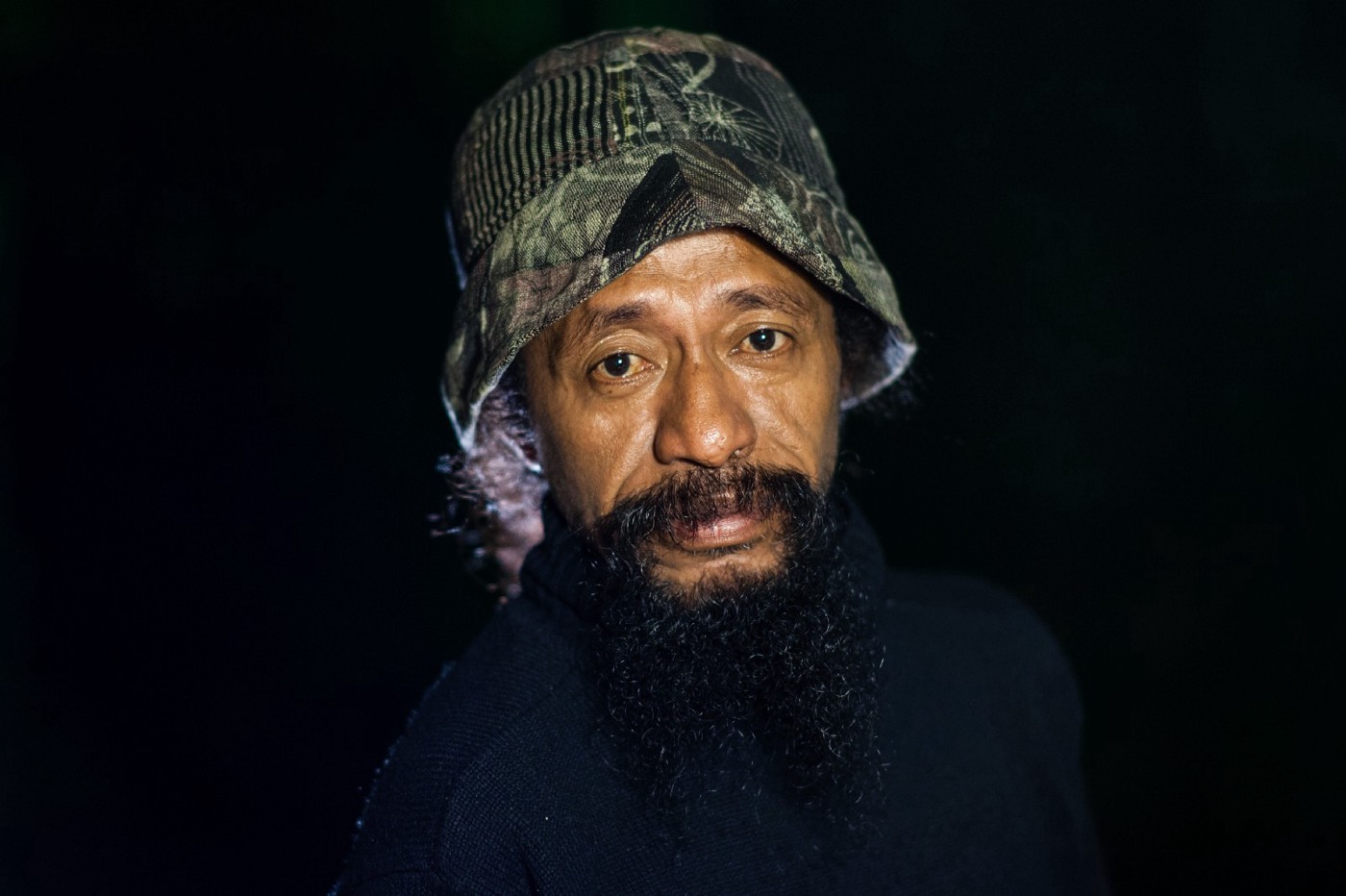
Rudi Fofid
If they were to find out what was really happening, the Ambon activists would need to get to Aru. In September 2013, Rudi and Maichel Koipuy, the young journalist, set out for the archipelago. With no money for plane tickets, they rode a ferry that meandered across the ocean for two days.
“Just you wait,” Rudi thought to himself as he crossed the Banda Sea, “the provocateur is coming.”
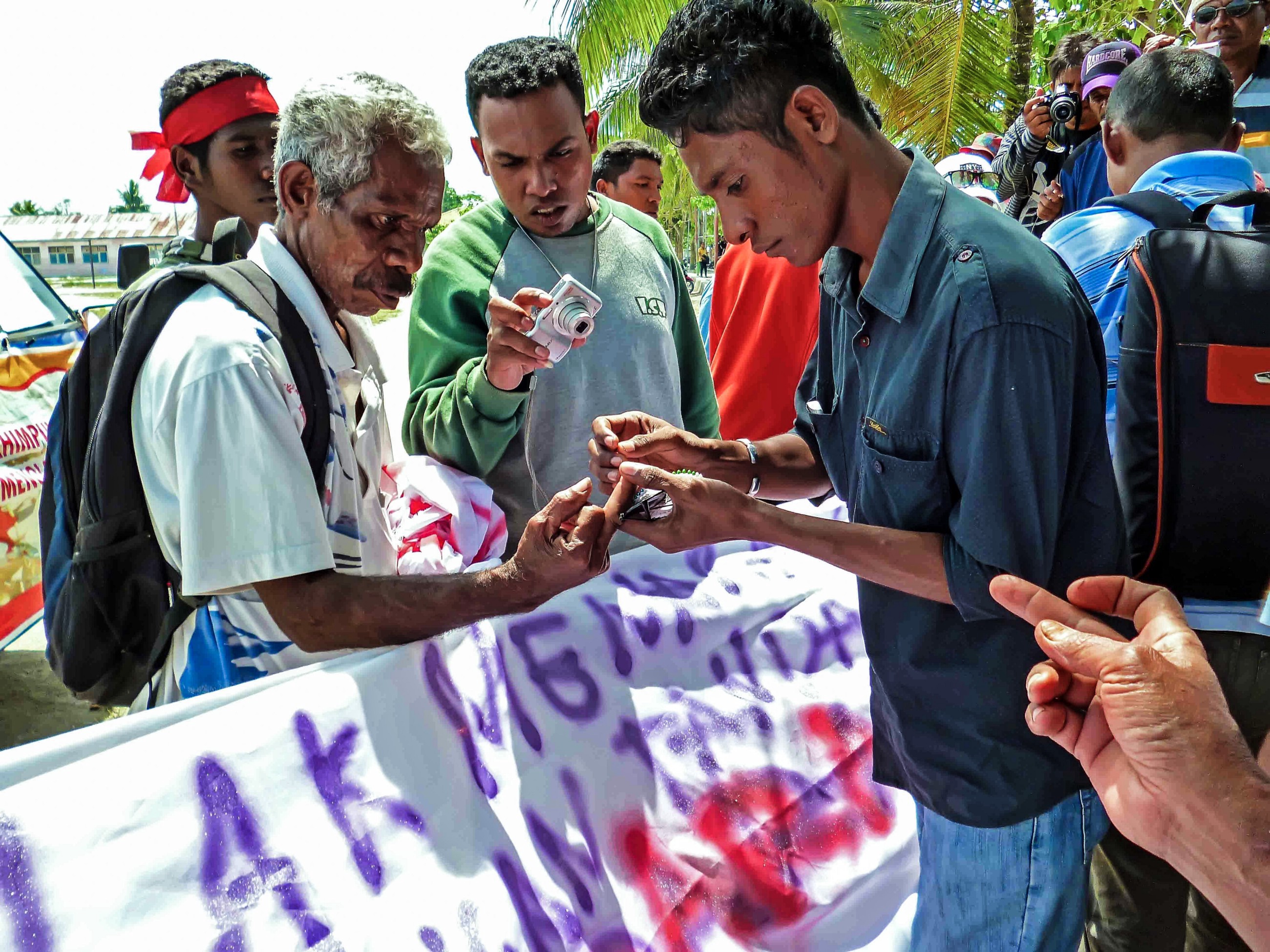
Part Four: First blood
Rudi and Maichel arrived in Dobo just as demonstrations against the Menara Group were intensifying. Previously, members of Aru’s district parliament had claimed to be unaware of the project, sparing them from the ire of protesters. But now, leaked photos revealed that the legislators had visited Menara’s office in Jakarta multiple times. The pictures showed them with Chairul Anhar, the CEO, who grinned as he shook their hands and offered goodie bags. It turned out that Aru’s parliament had approved a zoning change for the entire archipelago, in 2012, eliminating forest protections that threatened to impede the plantation. Far from being ignorant of Menara’s plans, the legislators had apparently known of its intentions for years.
On Sept. 12, 2013, a few days before the journalists’ arrival, the Aruese held another huge march, filling the streets of Dobo. On the steps of the parliament building, they performed a solemn ritual, placing a sasi, or customary prohibition, in front of its main entrance. The sasi took the form of a standing wooden frame with a woman’s shawl hung from it. Politicians across Maluku knew to respect the sasi; the following year, a mayor in Rudi’s native Kei islands was forced to run the city from a hotel after citizens put a sasi on his office.
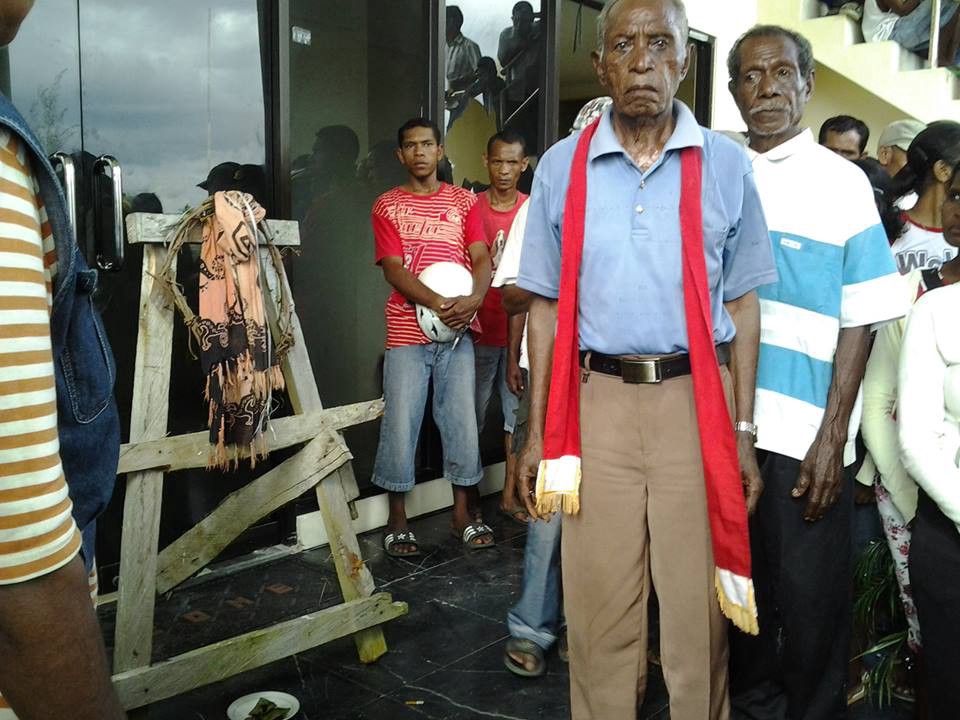
Protesters with the sasi, or customary prohibition, in front of the main entrance to the parliament building in Dobo
The women’s sasi was the strongest kind; no official proceeding could take place within the legislature so long as it remained in place. Defacing it would be tantamount to an act of war, according to a vociferous middle-aged woman named Anatje Siarukin. “If you tear it down, it means you are stripping us naked, the women of Aru, from the birth mothers to the ones with the gray hair,” she said. “This is the cloth we use to cover ourselves. Whoever dares violate it invites bloodshed.”
From the outset, the women of Aru had played a central role in the demonstrations. “They took to the streets, they brought their pots and pans and they cooked in front of the government offices as an act of protest,” said Mercy Barends, a provincial legislator who had run against Theddy for bupati. They spent what little money they had to feed the other protesters and joined marches in Dobo. Anatje offered up her family home as a gathering place for the local activists. “We knew that if the Menara Group came, future generations would suffer,” she said. “We agreed we had to make a stand.”
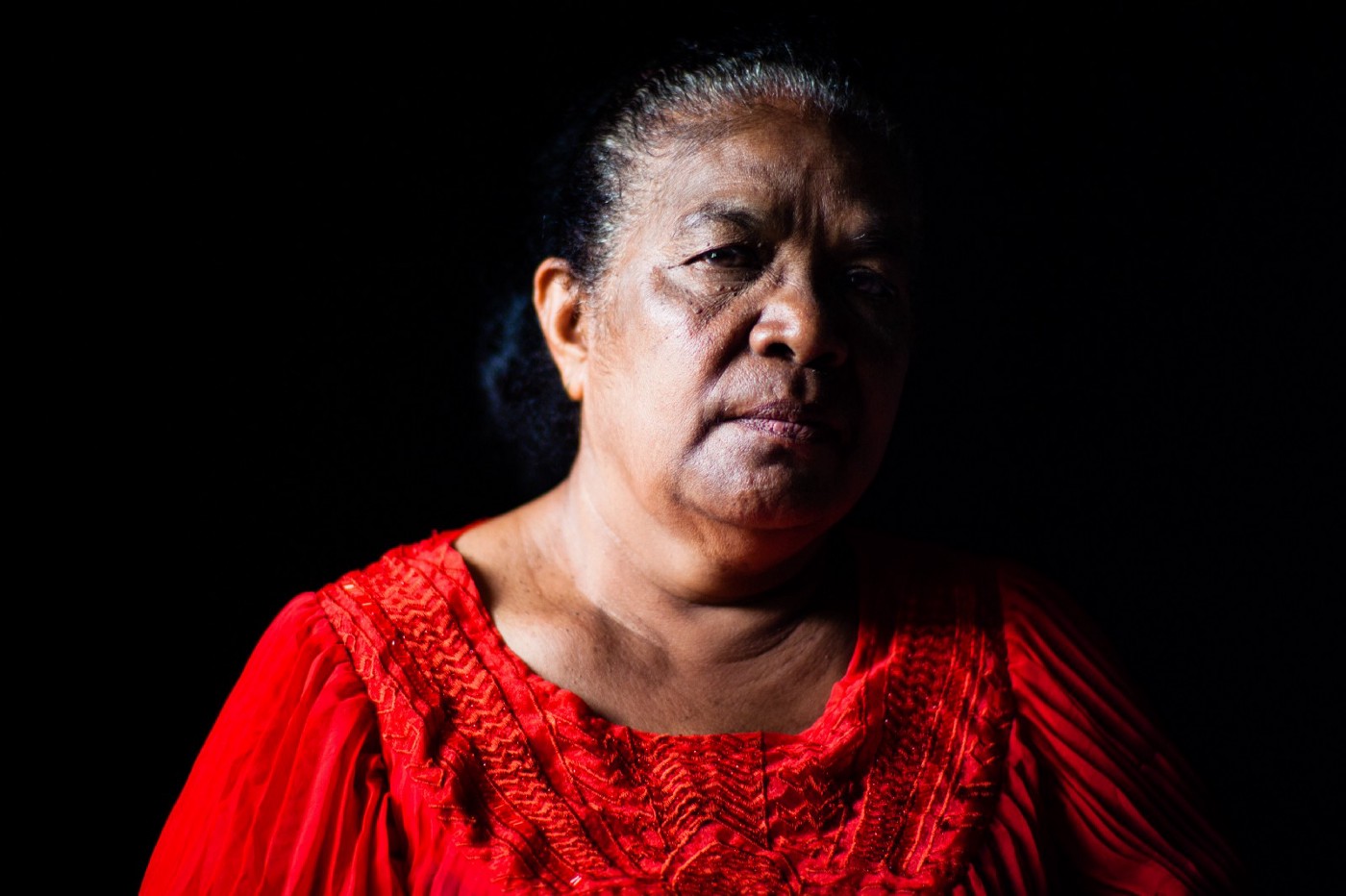
Anatje Siarukin
Rudi and Maichel were welcomed by the Aruese who had agitated for Theddy’s arrest before redirecting their protests toward Menara. They included people of all ages, everyone from students and civil servants to grandmothers who sold vegetables at the market along the docks. The journalists were whisked from Yos Sudarso Port to a small wood-plank house serving as the movement’s headquarters. Perched over a swamp filled with water hyacinths, the house, still under construction, had no door, furniture, windows or ceiling. Rudi noticed a copy of his poem tacked to a bulletin board by the entry as he and Maichel sat in a circle on the floor with about 20 Aruese. In turn their hosts extended thanks to the visitors from Ambon, until Rudi cut them off. “That’s enough thank yous,” he told them. “Time is short — we’re in this together.”
But the Aruese continued to thank them profusely. “I have to express my gratitude, because we’re alone,” said one young man. “No one has come here to join us.”
Despite their brave front in the streets, Rudi sensed a lack of confidence. “They felt small,” he said. But it was crucial the Aruese believed they could win. If they lost faith, their movement could break apart. “The problems always start when people become divided,” Rudi said, speaking from his own experience of agrarian conflict in Maluku. “We couldn’t have people fighting among themselves. The focus had to remain on preventing the Menara Group from entering. They had to remain cohesive.”
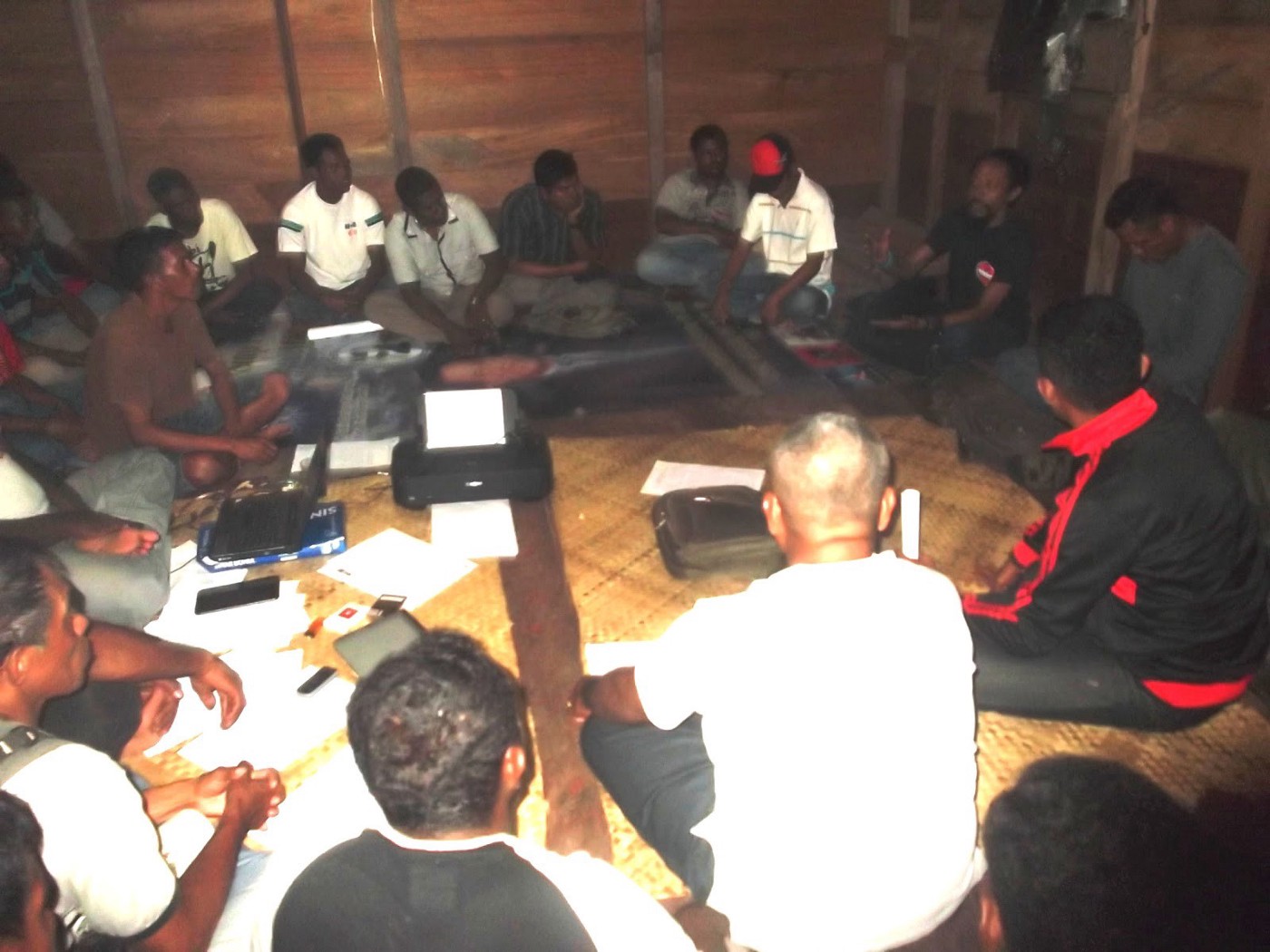
Rudi, right, sits with local activists at the wood-plank house in Dobo in 2013
Over the next two weeks, Rudi and Maichel met a diverse cast at the “Hyacinth Post,” as Rudi named the headquarters without a ceiling. Fueled by gritty coffee and sago crackers, they sat with elders like Constansa Labue, a white-haired woman of 63 who chewed areca nuts and recounted facing off against anti-riot police during a protest against Theddy. “I’m not afraid of bullets,” she told the visitors. Maichel’s father, Samuel Koipuy, dropped by to recount creation myths featuring iconic birds and other animals. Their culture was inextricably linked with the fauna of Aru; almost every clan had an animal totem, such as a shark or a whale, related to the unique circumstances of how their ancestors were said to have settled in the archipelago.
A journalist based in Dobo, Latif Madilis, regaled them with tales of reporting from villages accessible only by boat. Born in the Kei Islands to parents of Aruese descent, the 30-year-old had worked in Jakarta before he tired of urban life and landed a job at a Dobo newspaper, despite no prior journalism experience. The paper was such a bootstrap operation that its issues were run off a desktop printer. Latif hoped to move into TV journalism and had saved for two years to buy a professional camera. The internet in Dobo was so slow that he had to ask airplane passengers to carry his data files to Ambon, where they could be uploaded and sent to editors in Jakarta.
Rudi and Maichel were particularly impressed with Mika Ganobal, a civil servant who had become the lead coordinator of the Dobo protesters. Many government employees had been reluctant to decry the project for fear of losing their jobs, but Mika was different. The then 35-year-old worked as a bureaucrat in a coastal village in central Aru, to which he commuted by boat from his home in Dobo. Though normally reserved, he had a combative streak that emerged during the demonstrations, when he would climb on the roof of a truck and rally the crowd with a megaphone.
If some Aruese felt ambivalent or confused about the plantation, Mika remained convinced it would be a catastrophe. A graduate of an Ambon university, he had learned how other rural areas had been sacrificed to powerful corporations, with big profits flowing to businesspeople and officials while most community members ended up as poor labourers. “We knew we couldn’t let that happen here,” he said.
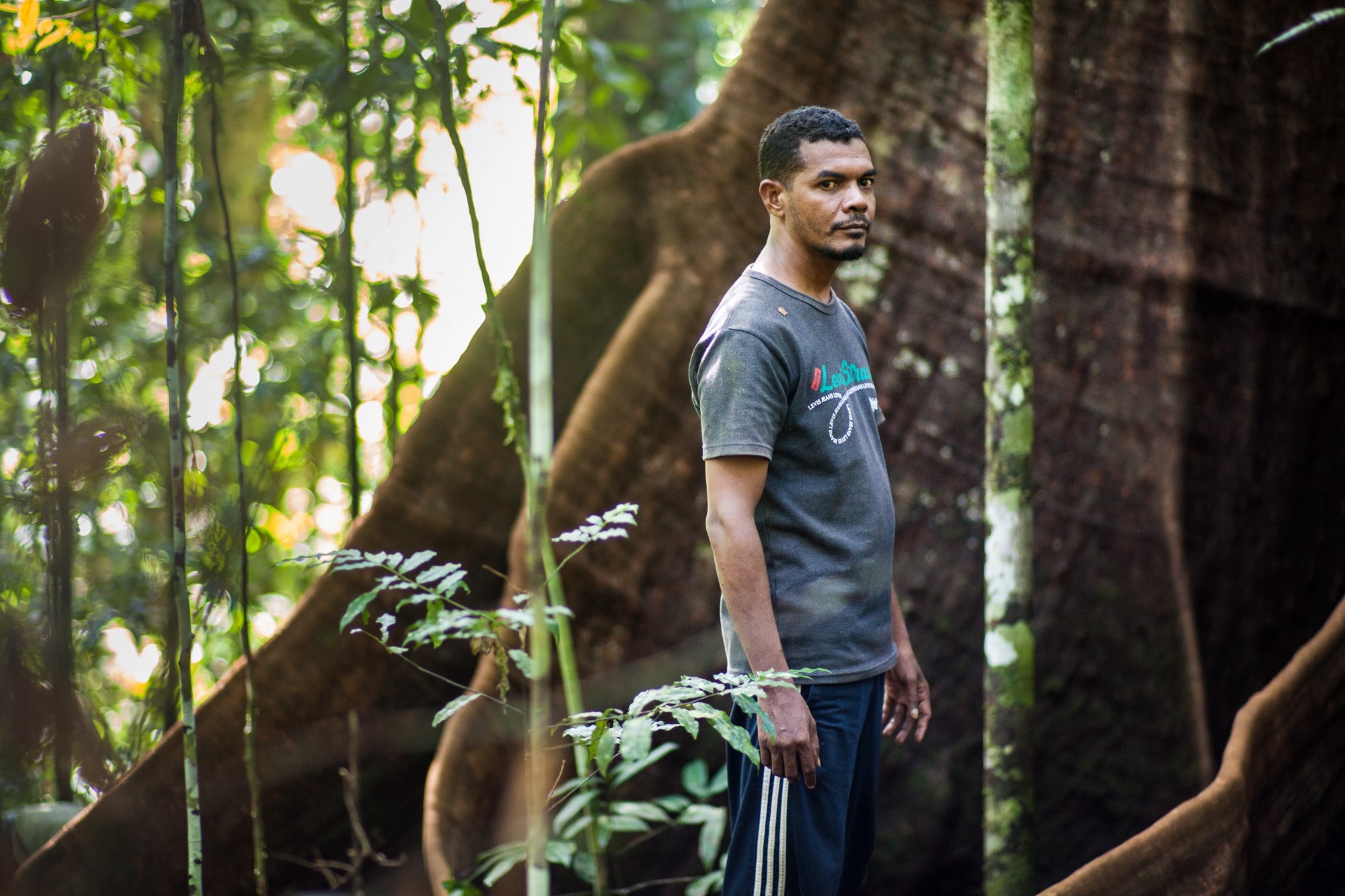
Mika Ganobal
Rudi wrote about these initial encounters for Maluku Online, a news site in Ambon. But he and Maichel were thinking bigger. If they could get the Aruese themselves to transmit compelling information to Ambon, Habib Almaskaty could then broadcast to a far wider audience. But this was easier said than done. Most of Aru’s villages lacked phone service. Internet connectivity was limited to Dobo, where narrow bandwidth meant it took time just to send an email.
To surmount this problem, the activists went low-tech. Handwritten messages could be carried between Dobo and the interior by boat. In Dobo, select people would be responsible for communicating with the Ambon team, typically via SMS text messages, the cheapest option. If a voice call was necessary, the caller in Dobo would place a missed call to the recipient in Ambon, who would immediately call back, thereby placing the phone charges where they could best be afforded. “We built an information chain,” Habib said.
Rudi and Maichel asked the Aruese to relay any news of the David vs. Goliath battle as it unfolded: What was the company doing? How were the people resisting? How was the government responding? The pair gave local activists a crash course in citizen journalism, advising them to stick to the facts. “Not what you think, but what you see,” Rudi said. Photos and videos were the most reliable way to make a splash online, but even a single sentence sent via SMS could be developed into a social media post. These fragments could be built into a narrative of abuse of power and indigenous resistance that might spark a public backlash and pressure officials.
As Rudi and Maichel provided counsel in Dobo, Habib’s team achieved its first success online. Tapping their networks from Indonesia to the U.S. and Europe, where Jacky had extensive contacts, the campaigners challenged people to post photos of themselves displaying a placard with #SaveAru written on it. A trickle of photos grew into a steady stream from places like the Netherlands, home to a large Malukan diaspora; universities such as Harvard and Oxford; and the Javan cities of Jakarta, Yogyakarta and Surabaya, home to large student populations.
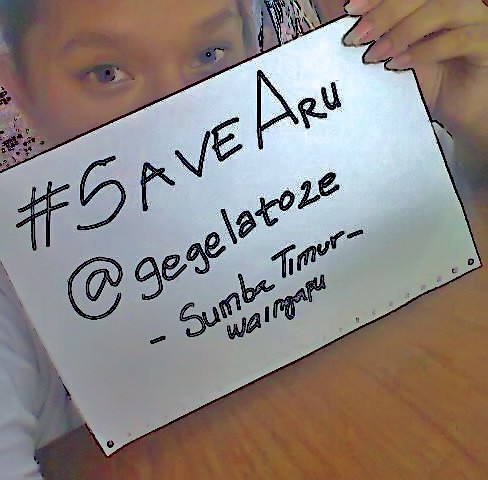
The Ambon campaigners also produced their own images. One of the most widely circulated was an infographic showing an outline of Aru in green, with an area equivalent to Menara’s land concessions superimposed in red. The image — more red than green — was effective because “you didn’t have to read anything [to understand],” Rudi said. “You just needed to look at it to know it had to be protected.”
In Ambon, campaigners posted to YouTube a rap about Aru by the Molukka Hip-hop Community. The music video was prefaced with a quote from Mahatma Gandhi and interspersed with footage of the Dobo protests. In late September 2013, the @SaveAruIslands Twitter account posted its first tweets: a call for poetry submissions, a report that Menara was moving heavy equipment into Aru, an announcement that AMAN, the indigenous rights advocacy group, would visit Aru.
In just a few short weeks, word of the movement had spread beyond Maluku. Young people in Ambon were making political art, while Aruese continued to demonstrate in Dobo. The campaign had started well. But Jacky knew that if they were going to stop Menara, they would need to do more than post online. The real power lay in the hands of the state, and there the movement’s prospects looked grim.
The unelected, acting bupati of Aru, Abraham Gainau, was a confidante of Theddy’s who had spoken out in favour of the project. “The people crave a change of life,” he had told journalists. The previous Maluku governor, a retired military general named Karel Ralahalu, had formally recommended that the minister of forestry sign off on the project. The minister, Zulkifli Hasan, had already issued a string of decrees indicating his intent to approve the final permits for 19 of the 28 blocks in the plantation. If he signed those permits, it would remove the last obstacle to Menara unleashing its bulldozers.
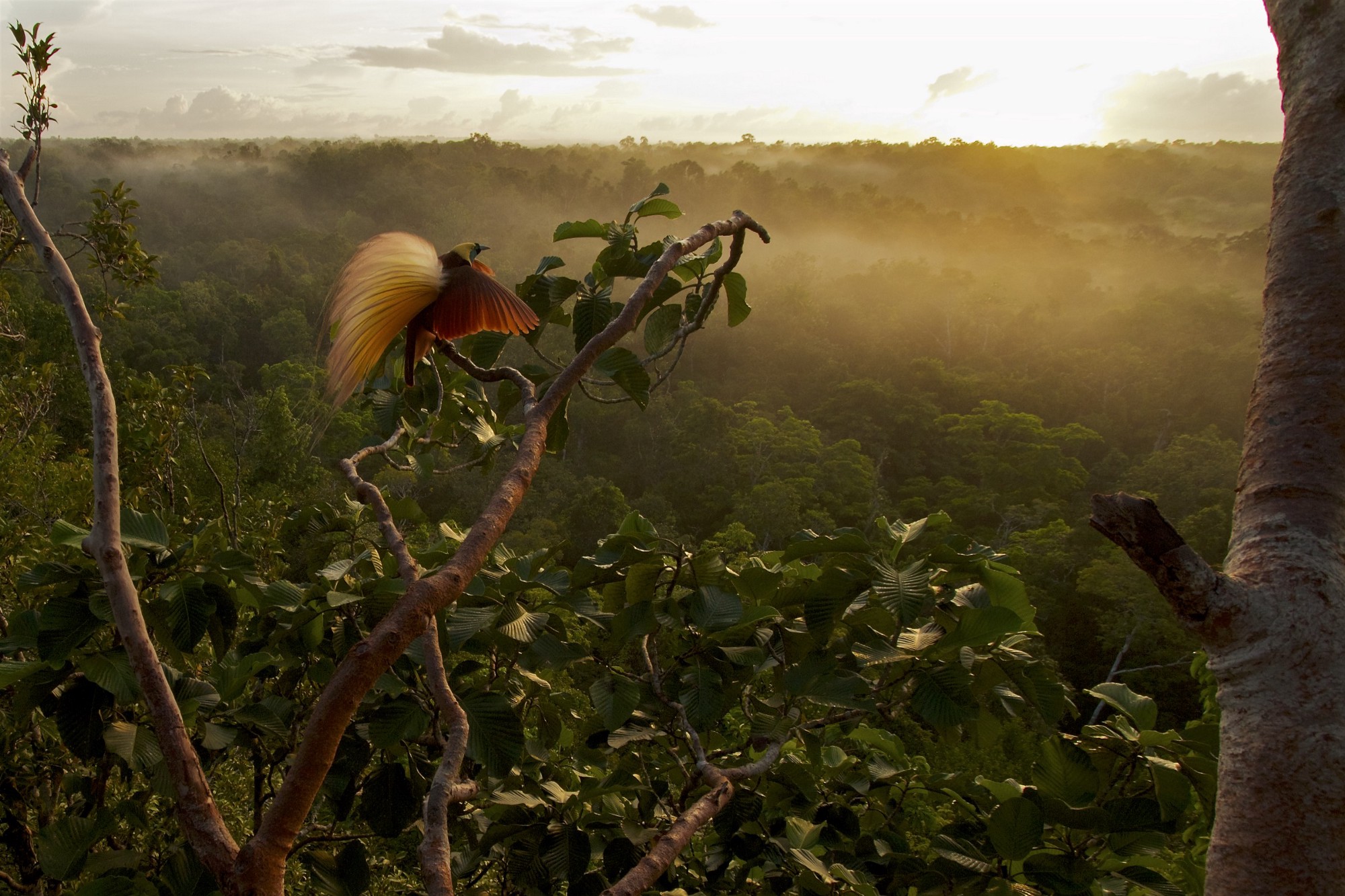
This photo by Tim Laman became an iconic image of the Save Aru campaign. He captured this image as part of his work in the Aru Islands with Cornell Lab of Ornithology Scientist Edwin Scholes and their Birds of Paradise Project
The government could not immediately be turned against the project, but perhaps other institutions could. If Jacky could harness the groundswell of online support and concentrate it on the main public institutions in Maluku, they in turn might pressure officials to halt the project. He began lobbying the Protestant Church of Maluku, trying to convince its governing body to declare its opposition to the plantation. At the same time, he started working on Pattimura University, the largest in Ambon.
Jacky knew that Pattimura’s academics often accepted contract work from companies, carrying out surveys or EIAs. It would greatly benefit the movement if the academics could instead provide impartial, critical analysis of the risks posed by the plantation, and help the public understand the tradeoffs it would entail. Jacky asked Agustinus Kastanya, a senior professor in Pattimura’s forestry department, to organise a faculty meeting. The pastor intended to galvanise the academics by appealing to a powerful emotion: shame.
At the meeting, Jacky brought more than 50 academics up to speed on what the Aruese were fighting for, some 700 kilometres across the Banda Sea. Then he launched an attack on their pride. First, he displayed photos of students and professors from around the world holding up #SaveAru placards, even bringing in a giant tarpaulin banner, several meters tall and wide, in which dozens of photos had been combined into one composite image. Then he switched on a projector to reveal that the meeting was being live-tweeted, with messages of support coming in real time.
Jacky implored his audience: How can it be, that these people, not even from Maluku, support the Aruese, while the faculty of Maluku’s biggest university do nothing to curb the natural and human disaster brewing in their own backyard?
“It was like punching them in the face,” Jacky said.
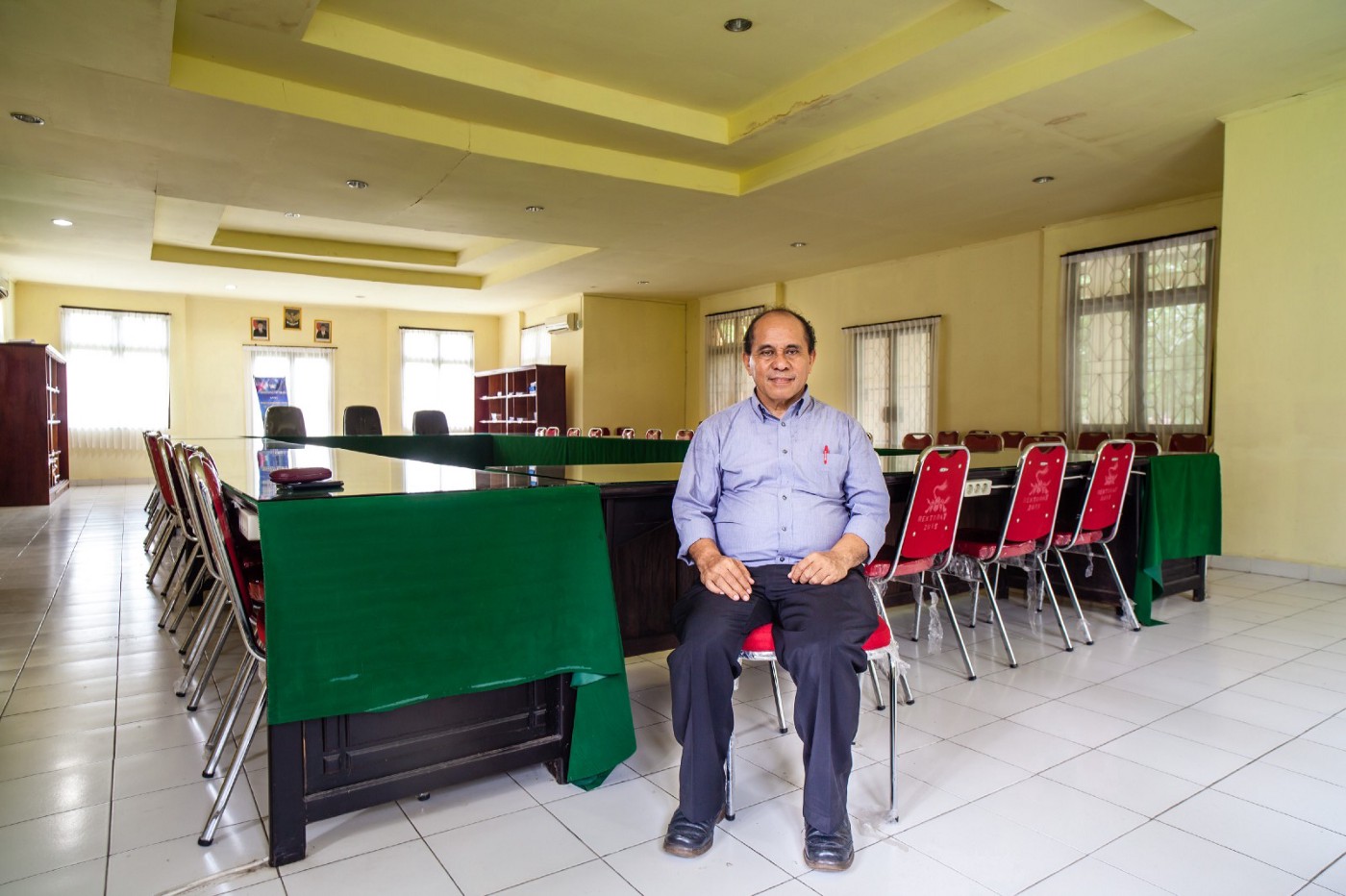
Agustinus Kastanya poses for a photo in the room where the meeting with Jacky took place
As Jacky spoke, he kept an eye on Abraham Tulalessy, an agriculture professor seated at the head table. For Abraham, Menara’s project was far from news. Though the company had got some way through the permit process without completing an EIA, it had since tried to fix this problem, belatedly hiring consultants to carry out the assessment. Abraham was a member of the commission that would analyse the results and decide whether the province should sign off on the project. He and a few dozen other commission members — academics and representatives of the business community and civil society — had been wrestling with the question for months.
The process, as Abraham saw it, had become dangerously tainted; Theddy Tengko had mired it in a fog of illegality by signing permits that should have been preceded by an EIA. And now, the assessment Menara’s consultants had produced was, in his view, a hack job. The project would affect the majority of the more than 80,000 people living across Aru. But the contractors had failed to properly consult them, visiting only a handful of Aru’s 117 villages. The EIA acknowledged the project would have huge negative implications for people and the environment, yet somehow contrived to conclude that these were outweighed by ill-defined economic gains, such as “chances to work and business opportunities.”
Some academics on the commission had already raised concerns. At a July 2012 meeting, one professor had pointed out that Menara had no track record running plantations, and raised suspicion that the firm was just after Aru’s timber. Another had said it had no clear plan for managing water pollution. But in the end, whatever opposition there was had been expressed in a closed forum. Now, Jacky’s gambit presented the academics with the option to either publicly support the Save Aru movement or stay quiet and be seen as stooges for the firm.
Jacky’s gambit presented the academics with the option to either publicly support the growing socio-environmental movement or stay quiet and be seen as stooges for the firm.
Abraham was typically outspoken on environmental issues, but there was no record he had ever raised concerns about Menara. Now, as he sat at the front of the room, other academics began to denounce the project. One stood up and said the biological sovereignty of Maluku was under threat. Another declared they should consider taking legal action. A third said that if the academics had integrity, they would stand together against the Menara Group.
In the end, Abraham joined 53 academics in signing a statement demanding the project’s cancellation: “We, the undersigned, REJECT the exploitation of Aruese lands by the Menara Group and/or other investors,” it stated. The academics pledged to throw the weight of their authority behind the Save Aru campaign. They would scrutinise the legality of the permits and examine the social and environmental fallout if the project was to go ahead.
Jacky had scored a coup. With a phalanx of academics behind it, the movement now had a scientific and legal backing that was rare for local communities facing down state-backed projects in Indonesia.
“We could raise hell on social media. The real war was in Aru.”
After the meeting, Costansius Kolatfeka, the environmental activist who had learned of the project early on, boarded a flight to Dobo, with the tarpaulin #SaveAru banner stowed in his luggage. A few days later, the Aruese paraded it like a flag as they marched through the town, calling for the project’s cancellation. The moment encapsulated how the activists’ rudimentary “information chain” had evolved from a one-way channel into a feedback loop, capable of not only delivering news from Aru to the outside world, but of sending a powerful message of support back the other way. “The real war was in Aru,” Rudi Fofid said. “We could raise hell on social media, but if the people lost heart, it would have been no use at all.”
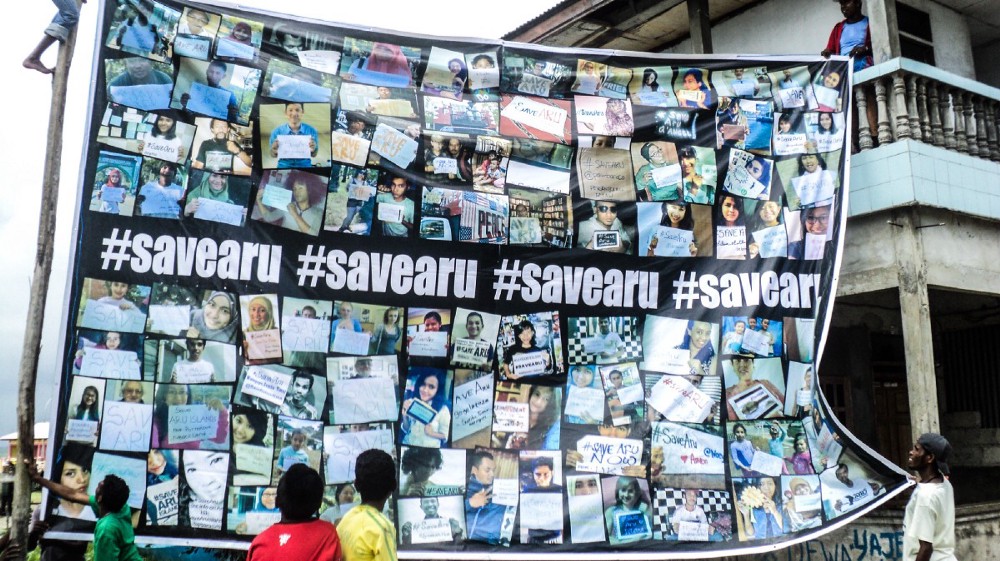
Locals admire the banner in Dobo
At Yos Sudarso Field, a park in Dobo named for an Indonesian military hero, the Aruese unfurled a large white cloth, pricked the tips of their fingers and signed their names in blood. The act was intended as a message for President Susilo Bambang Yudhoyono, then entering his 10th and final year in office. The Aruese were prepared to defend their lands whatever the stakes.
“That was our pact,” Anatje Siarukin said. “We were ready to die if the Menara Group came here.”

Part Five: An attack on science
After the meeting at Pattimura, Abraham Tulalessy became one of the movement’s fiercest advocates, joining protests and speaking out in the press. He was quick to take issue with Menara’s EIA. It had the appearance of comprehensiveness; the assessors had collected a raft of data that made for a weighty document. But it dealt with relatively inconsequential issues, like noise levels, while studiously ignoring the reality that the project would enact a wholesale transformation of life in the archipelago. “The forest would be destroyed, the habitats erased, the animals driven to extinction. The groundwater would drop, the people would suffer,” Abraham said. “But they didn’t look at that. They didn’t understand.”
Many of Abraham’s colleagues shared his view. Agustinus Kastanya, the professor who organised the faculty meeting, and who sat on the National Forestry Council, an advisory body to the forestry ministry, said the plantation would be “very dangerous” for Aru. Abraham Khouw, a marine biologist at Pattimura who also sat on the EIA commission, said Menara lacked respect for science. “There are so many incredible species in Maluku, and we don’t even know 10 percent of them,” he said. “As an academic, I tell it like it is. I’m concerned with science. But sometimes politics is stronger.”
Though Tulalessy and Khouw opposed the project, the decision over whether to approve it would not be theirs alone. It would come down to a majority vote of the commission’s several dozen members, who included not just academics but bureaucrats and representatives of the business community and civil society. Even with some members expressing sympathy for the cause, securing a “no” vote still seemed like a long shot.
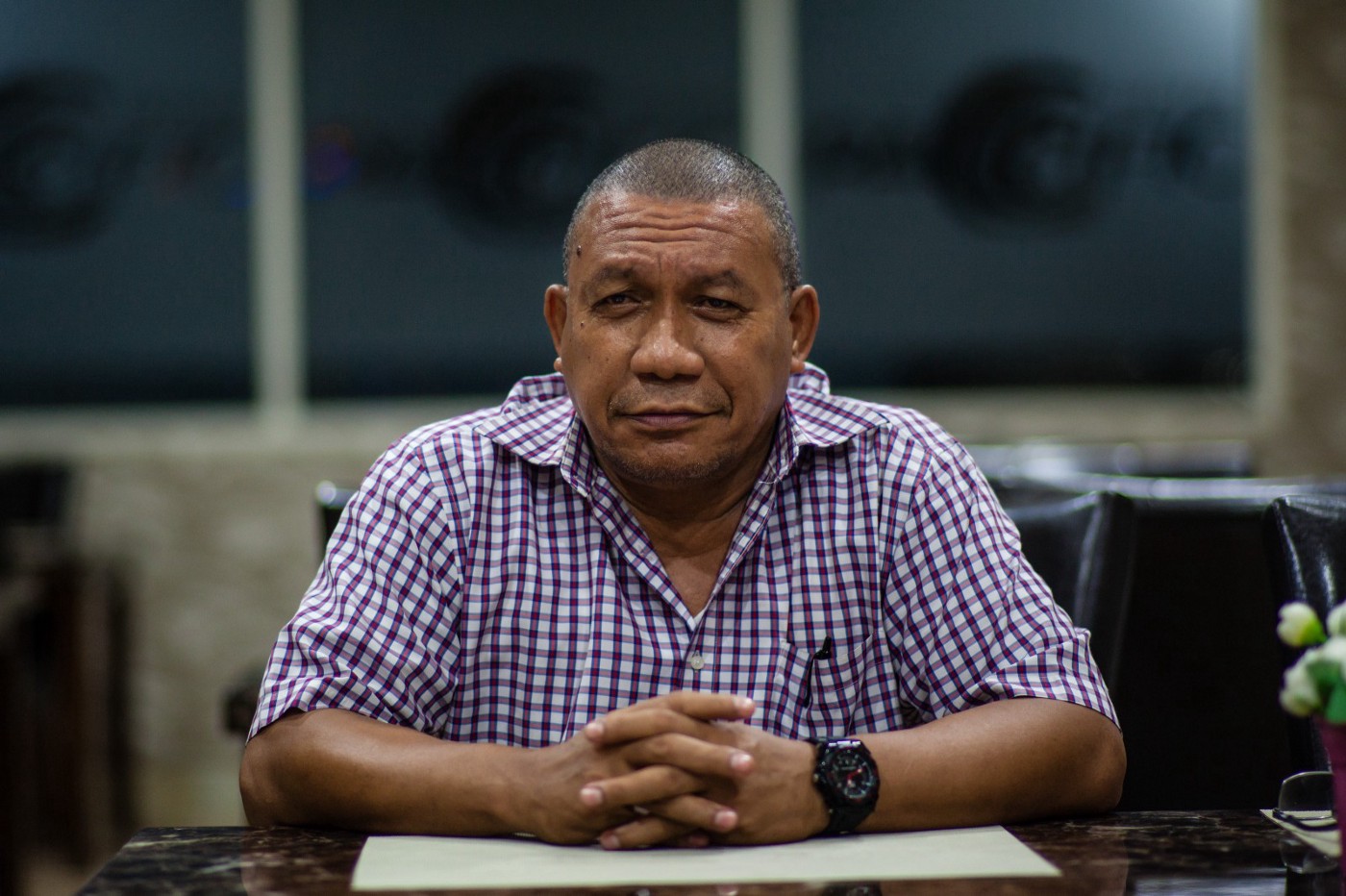
Abraham Tulalessy
Meanwhile, many Aruese, especially those in the hinterlands, still knew next to nothing about the project. The company, to the extent that it had interacted with villagers, principally through its survey team, had promoted its own version of how the project would change their lives. They pledged to build infrastructure and fund scholarships for locals to attend foreign universities. “Their promises were too grandiose,” said a disbelieving Mika Ganobal, the resistance coordinator in Dobo. “Maybe they’ll build a few things, but if they take our forest we’ll never get it back.”
Mika recognised the people of Aru had a right to know what was really coming. If they decided they still wanted to take their chances, so be it. But he believed that if the vacuum of reliable information was replaced with fact, a greater number of people would rally to the cause. After signing their names in blood in Dobo, the protestors resolved to fan out across the archipelago and get the word out themselves.
In all his years of organising, Jacky had never seen anything like what the Dobo activists were about to attempt. Some of Aru’s 117 villages were far inland, accessible only by river. Others lay on tiny islands. Fuel was expensive, so people typically got around on small passenger boats with outboard engines, which could take days to reach final destinations. The waters could be perilous. But they had no choice: physically traveling to these villages was the only way to properly inform them.
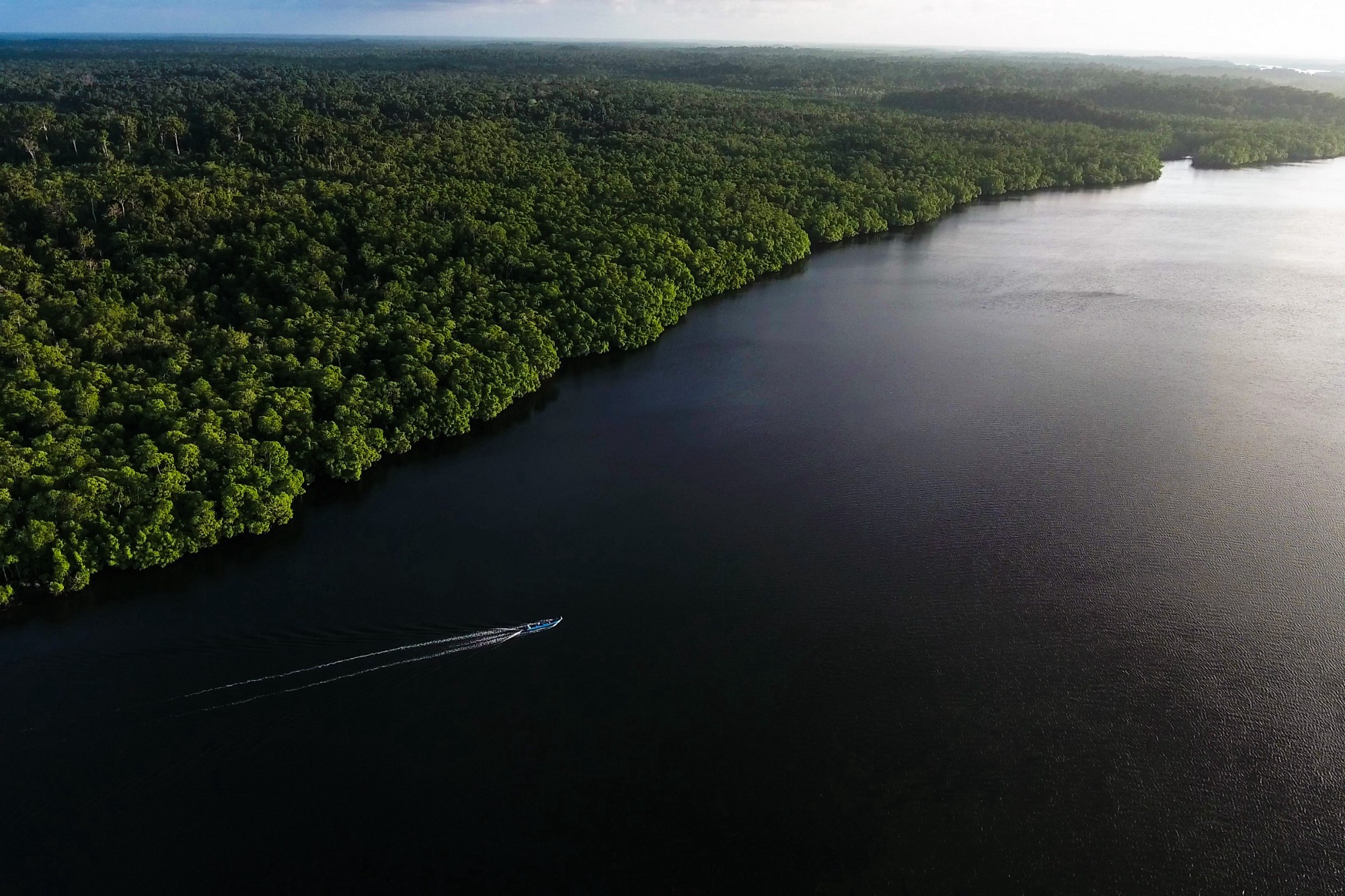
A motorboat cuts through one of Aru’s saltwater channels
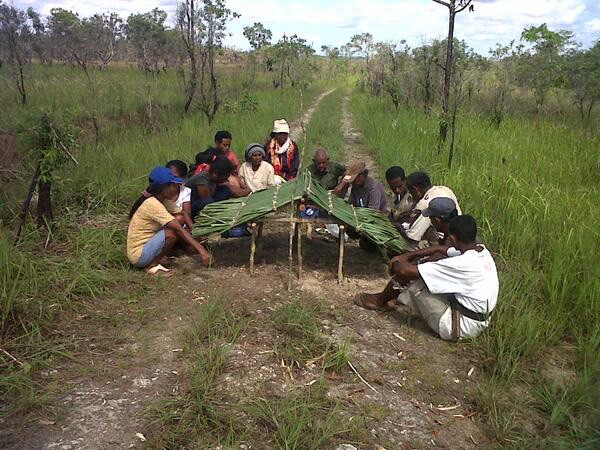
The sasi in Jelia
A select group of volunteers undertook a more arduous expedition, an extended journey through Aru’s hinterlands to reach more remote communities. The challenge was to explain the ecology of Aru, and how its fragile ecosystems would be wrecked by the plantation. Costansius Kolatfeka, the activist who had delivered the tarpaulin banner to Dobo, offered to stay on and serve as an expert-in-residence for the campaigners. He would remain in Aru for three months, traveling between Dobo and the interior with the volunteers.
Villagers quickly grasped what life without the forest would mean. The forest acts as a thermal insulator, Costansius explained; if it was destroyed, Aru would become a much hotter place. Like a giant sponge, the forest soaks up rainwater and maintains groundwater supplies; without it, Aru would dry up and become prone to catastrophic flooding. Forests prevent erosion, holding the soil in place with their roots; without the mangroves, much of which fell within Menara’s permits, large swaths of coastline would wash away.
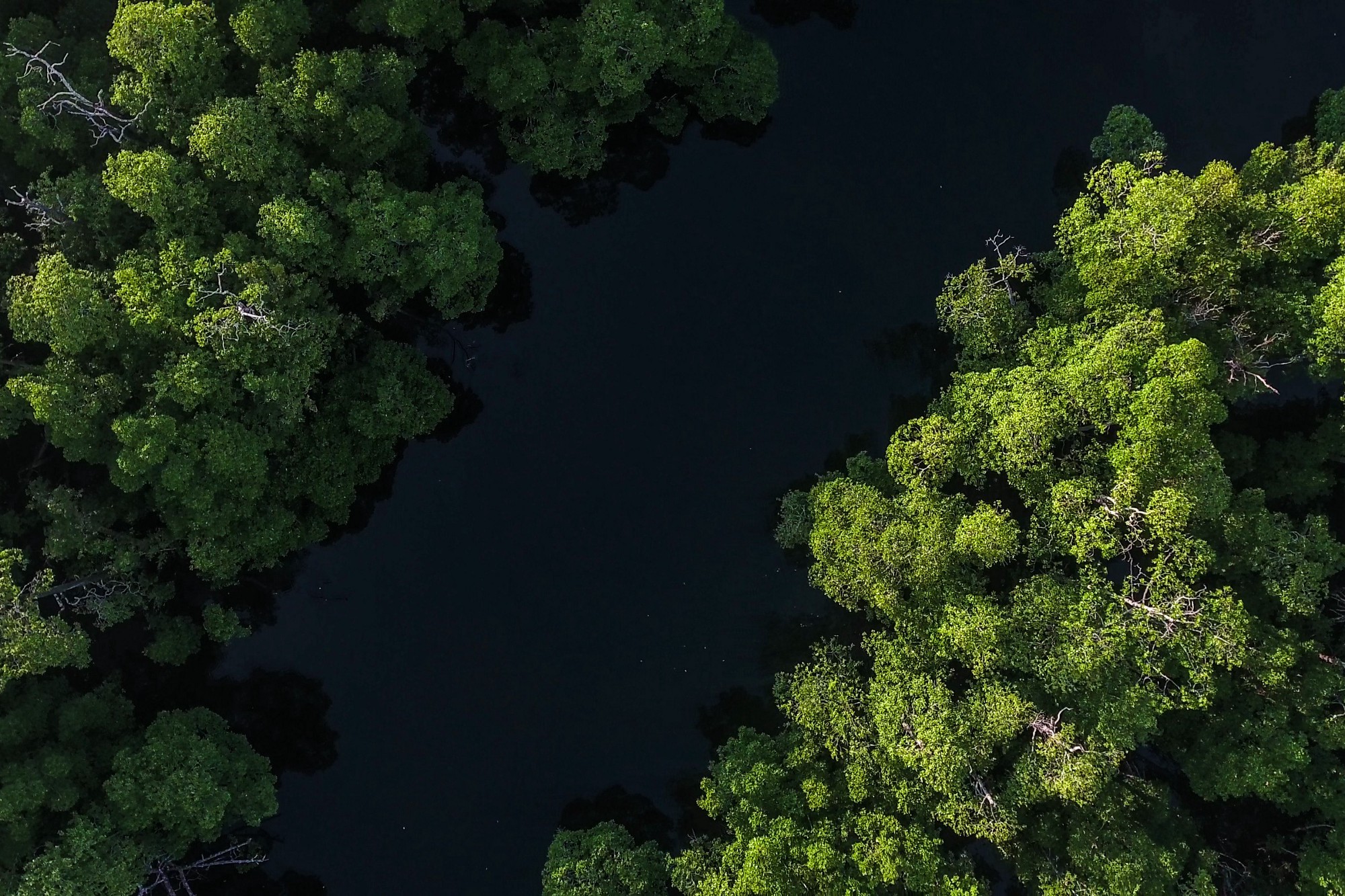
Aru’s forests provide critical ecosystem services on which tens of thousands of human lives depend
Costansius also provided a crash course in the functioning of a mega-plantation. The endless chemical inputs required to grow such a vast stretch of sugarcane, likely to be sprayed by helicopter, would seep into the rivers and sea, feeding algal blooms and creating oceanic dead zones. The marine resources people had relied on for centuries would be obliterated. If the Aruese wanted to improve their lot by bringing in outside investors, Costansius argued, they would be better off developing Aru’s fisheries, some of the richest in Indonesia. But clear-cutting the forest would result in disaster.
One volunteer was Simon Kamsy, a 50-year-old Aruese who worked on mangrove conservation in the archipelago. He made an impassioned case against the project, arguing that irrespective of the weak legal status of their land tenure, it was the right of Aru’s people, not the politicians in Ambon and Jakarta, to decide the fate of their homeland. “Our ancestors were here before Indonesia was a nation,” he told them. “If we let this company take everything from us, we’ll be nothing more than bystanders in our own land.” The animals that inhabited Aru, he argued, were unlike anything else in the world. “If they go extinct, there will be nothing left of our Aruese identity.”
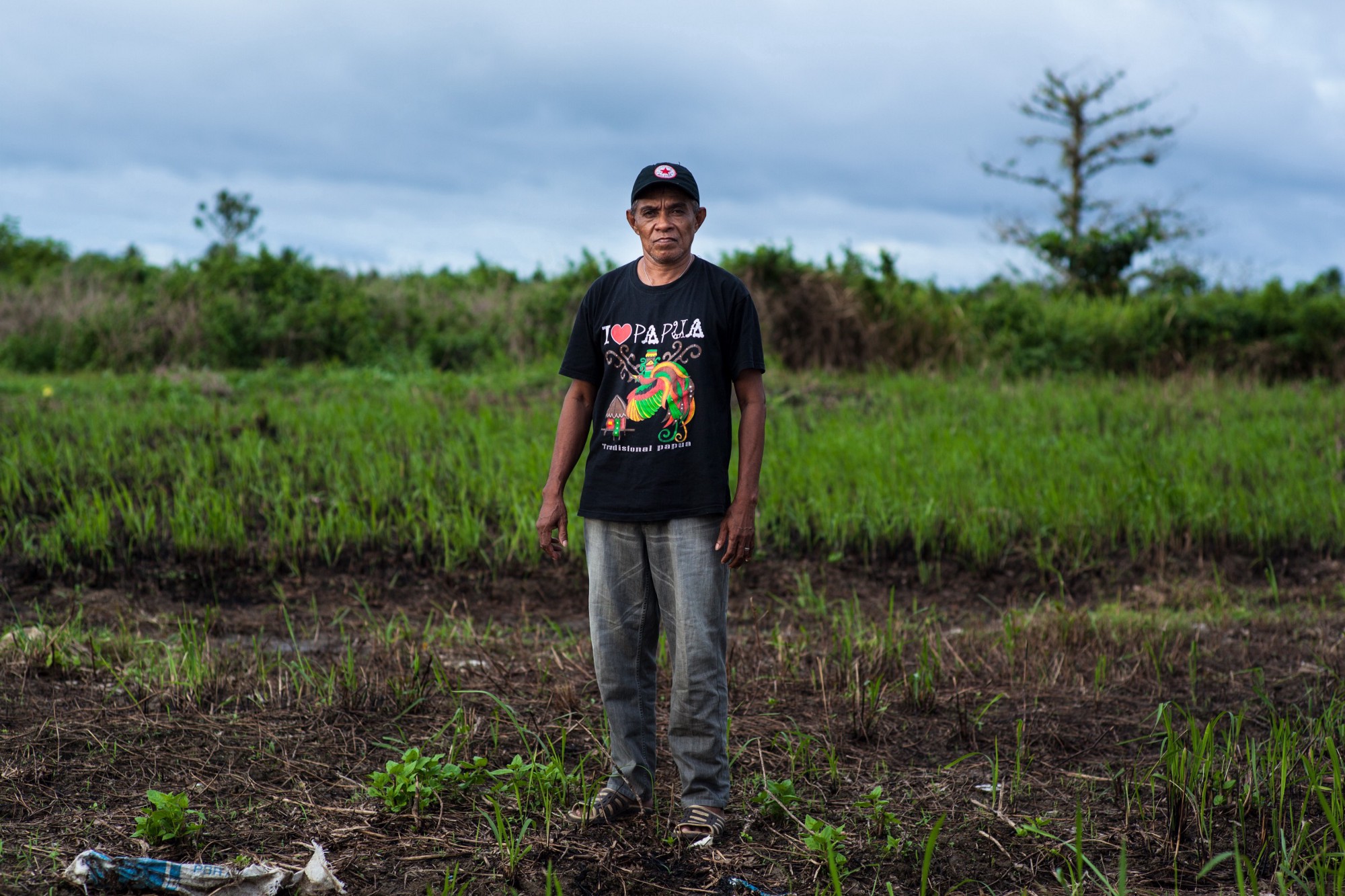
Simon Kamsy in Dobo. He met Mika through his younger brother, a pastor
To fire up the villagers, the activists screened films like “The Burning Season,” the story of martyred Brazilian rubber tapper Chico Mendes’ fight against and eventual assassination at the hands of Amazon ranchers. One villager later told a visiting anthropologist from a Dutch university that the film had opened his eyes to what lay in wait if the company got what it wanted. Previously, the only information his community had received about the plantation had come in the form of a visit from Menara’s surveyors. The company men had been evasive about their aims, saying only that they wanted to improve the people’s lives. The villagers had warily assisted them, but now they stood firmly against the project.
And yet, all the opposition the activists stirred up would mean little if they couldn’t prove it existed. The activists carried stacks of prepared rejection letters and invited everyone who opposed the plantation to sign. They took photos and videos of people writing their names to counter allegations that the signatures had been fabricated or forced. “They’d have accused us of spreading falsehoods,” Mika said. Simon added, “We couldn’t bring everyone [to protest in Dobo]. Those letters showed where we stood.” The letters were also important for the campaigners in Ambon to prove they weren’t “provocateurs” acting without the consent of the Aruese. “It showed we weren’t acting on our own agenda, but because of the people’s wishes,” Jacky said. But above all, the letters could be used as documentary evidence to pressure officials who might approve the project.
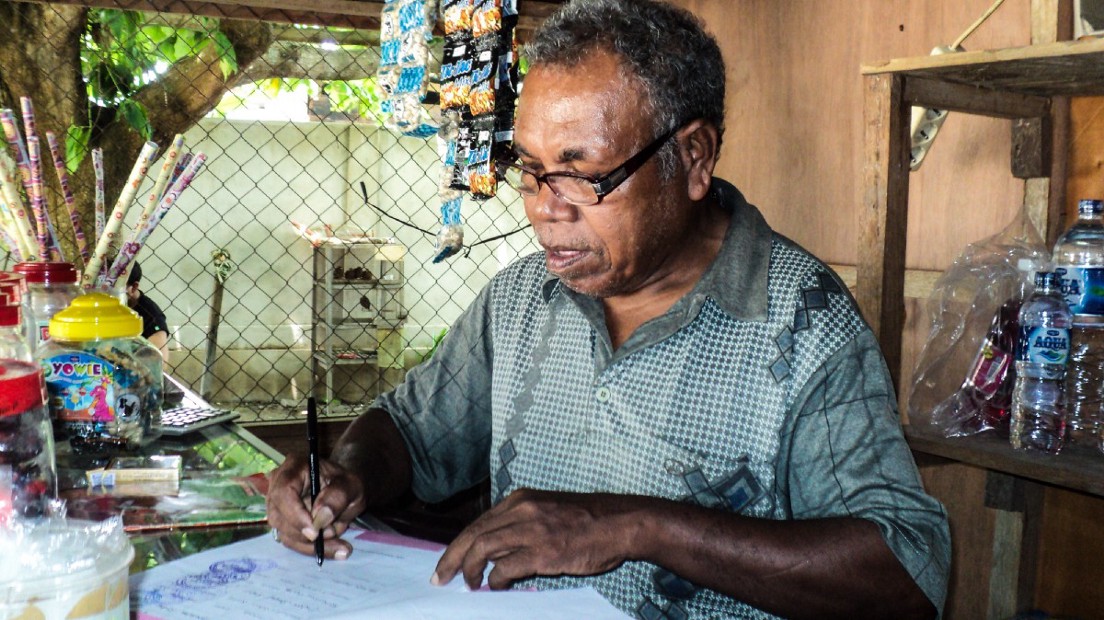
A volunteer from the interior of Aru
As the activists fanned out across Aru, the campaign reached a fever pitch in Ambon. Protesters massed outside a session of the EIA commission, and some provincial legislators began to criticise the project in the local press. Mercy Barends, the deputy speaker, became particularly outspoken. “The land of Aru is crying tonight!” she shouted during a speech at a street concert put on by the campaign in Ambon, wiping tears from her eyes. “We can’t be silent. If we sell the land of Aru, we sell our very existence.”
In mid-October 2013, Mercy helped convene a series of hearings at the provincial parliament, where representatives from both the Save Aru movement and the Menara Group made their case. Testifying on behalf of the activists were academics including Abraham Tulalessy and Abraham Khouw. During one hearing, Khouw threatened to resign his seat on the EIA commission if Maluku’s governor backed the project. “If that’s how it’s going to be, what’s the point of even having a commission?” he declared.
At one hearing, the company’s representatives insisted they had the interests of the Aruese at heart, saying they would use “environmentally friendly technology” to develop the plantation — a claim dismissed by the academics. Aru, the company argued, was an important “link in the world sugar chain” — an idea Mercy labeled as “ridiculous.”
Other than Mercy, the movement seemed to have few allies in parliament. Some legislators accused them of being puppets for a rival agribusiness hoping to secure plantation rights in Aru. On one occasion demonstrators showed up voicing support for the project. Mercy believed Menara had flown them in from Aru. “They got the money from the Menara Group and then they came to my office and said ‘I’m sorry, Ibu Mercy,’” she would later recall. “It was crazy.” Before one hearing in which Khouw was set to talk, a company executive asked if they could speak in private. In a side room, according to Khouw, the executive offered to pay him tens of millions of rupiah, the equivalent of many months’ wages, to back the project. He had the cash right there with him in a plastic bag. The professor turned it down. (The Menara Group did not respond to multiple requests for comment for this article.)
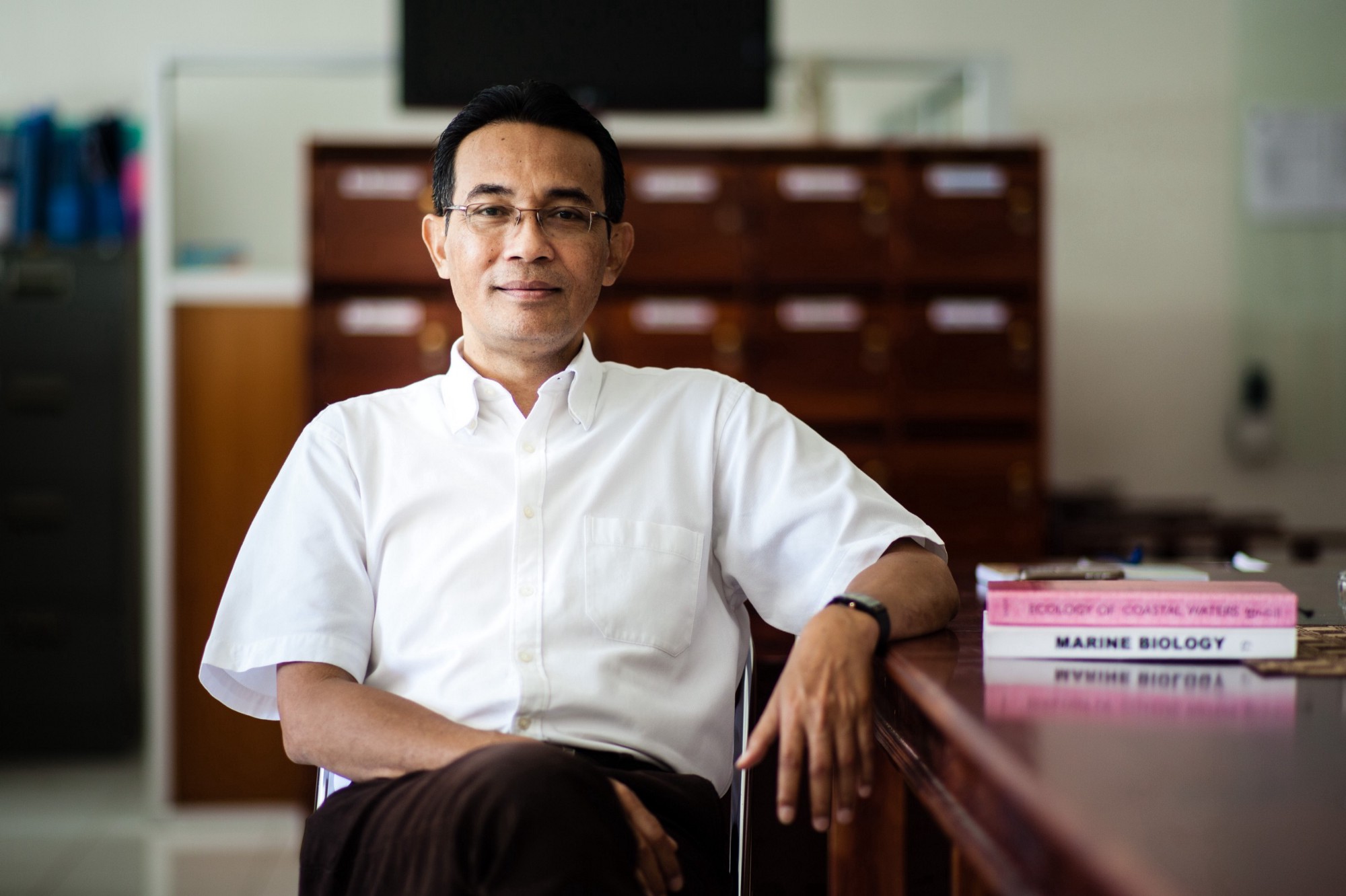
Abraham Khouw at Pattimura University
Despite the evidence that the project had been marred by illegalities, and the extensive hearings, the EIA commission ultimately voted to approve the plantation. This cleared the way for Menara to seek the final permits it needed, from the forestry minister in Jakarta. But it did little to dampen the growing scandal over the improprieties, now increasingly public, that threatened to tar anyone involved with pushing it through.
“We could all end up in prison,” Tulalessy, one of the few dissenting voices on the commission, told a journalist in frustration. Later he recalled how other members had recognised problems with the project but felt reluctant to speak out. “They knew [what the impact would be],” he said. “But they thought it was pointless to stand in the way, that it would proceed no matter what. It looked like a done deal.”
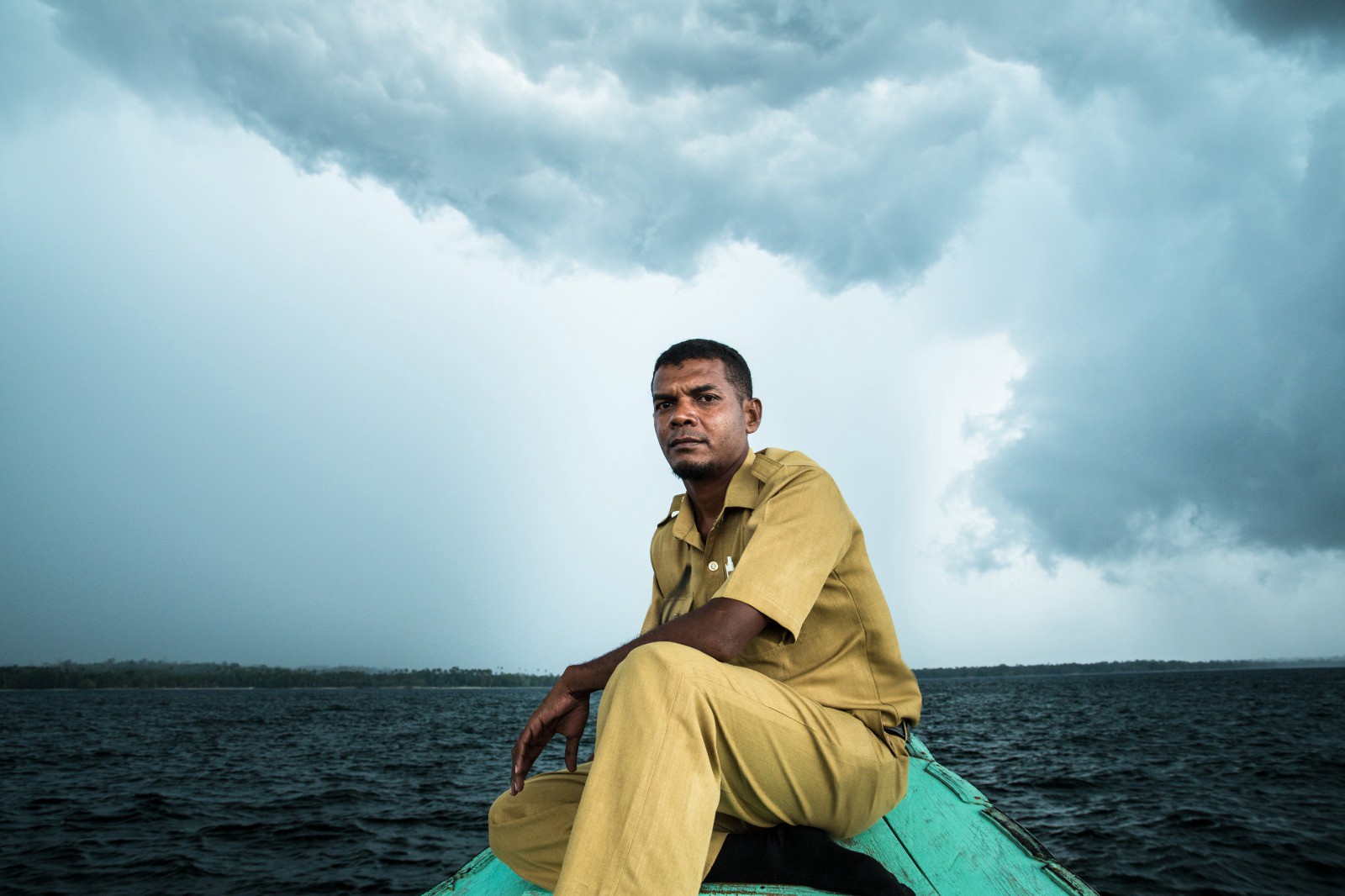
Mika Ganobal in his civil servant uniform
Part Six: ‘Behind the scenes, we were hurting’
In late October 2013, Glenn Fredly walked onto the set of a Jakarta talk show wearing a baseball cap with “Save Aru” emblazoned on the front. Fredly, a famous R&B singer-songwriter with roots in Ambon, cracked some jokes with the host, TV personality Sarah Sechan. For comedic effect, Sechan donned a wig with pigtails to resemble the girl in one of his music videos.
As the audience laughed, she asked him what else he was up to. “I’m busy with the Save Aru campaign,” he said. Sechan looked concerned as Fredly explained that Aru’s rainforests, home to birds-of-paradise and other rare animals, were slated to be cleared. “If it’s all cut down, where will they go?” she asked rhetorically. “What about the endangered species?” The pop star plugged an online petition asking the government to cancel the project.

The Save Aru campaign now had a celebrity face. Fredly’s appearance on Sarah Sechan was one of the first signs the movement was making inroads in the nation’s capital, where the final battle over the permits would be fought.
Some Aruese had already visited Jakarta. Facilitated by Mercy Barends, they met with government officials from multiple agencies, explaining the scale of the threat they faced and their belief that the process had been tainted at every step of the way. They also sat down with some of the nation’s biggest environmental NGOs, including AMAN, the indigenous rights advocacy group, and Forest Watch Indonesia. Both groups had international funding and professional staffers with experience in advocacy and investigations, and they promised to help amplify the campaign. But Jacky knew to handle their involvement with care.
Until now, the movement had been driven by Aruese and other Malukans, who operated on a shoestring budget and gave their time without expecting compensation. In one of the nation’s least developed provinces, this was no small feat. Young people in Ambon had raised money by selling T-shirts, holding bake sales and collecting donations, which they used to print signs, buy a camera for the Dobo activists and pay the hosting fee for their website. Simon Kamsy, Costansius Kolatkefa and others who traveled among Aru’s villages did so by passenger boat, and they were generally given free rides. Maintaining this “volunteer spirit,” as Jacky called it, would be critical to the movement’s success. Though they welcomed the backing of the Jakarta organisations, the key would be to balance the NGOs’ support with the participatory role of the community.
“In many environmental advocacy movements, the community is represented by NGOs,” Jacky said. “This creates a situation where the people are very fragile. When pressure is inevitably brought to bear on the community, they can be split apart from below.”
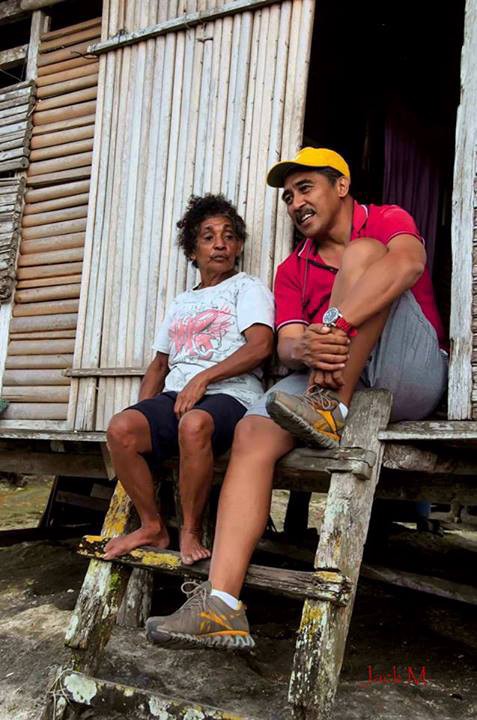
Jacky posted this photo to Facebook after traveling to Aru in 2013
As 2013 drew to a close, Jacky’s theory would be tested. Even as the activists shifted their focus to Jakarta, they were facing a violent backlash at home. “You could see our campaign on social media,” said Maichel Koipuy, the Aruese journalist. “But behind the scenes, our movement was hurting.”
Samuel Irmuply, the student protester and son of Anatje Siarukin, said he was attacked and beaten in Dobo by a group of Aruese who had sided with Menara. In retaliation, another group of Aruese set fire to acting bupati Abraham Gainau’s house, accusing him of protecting the initial attackers. The latter group was then “arrested and brutally beaten by the police,” the Save Aru campaign alleged on Twitter. Death threats appeared on the activists’ phones. “We were terrorised,” Samuel said.
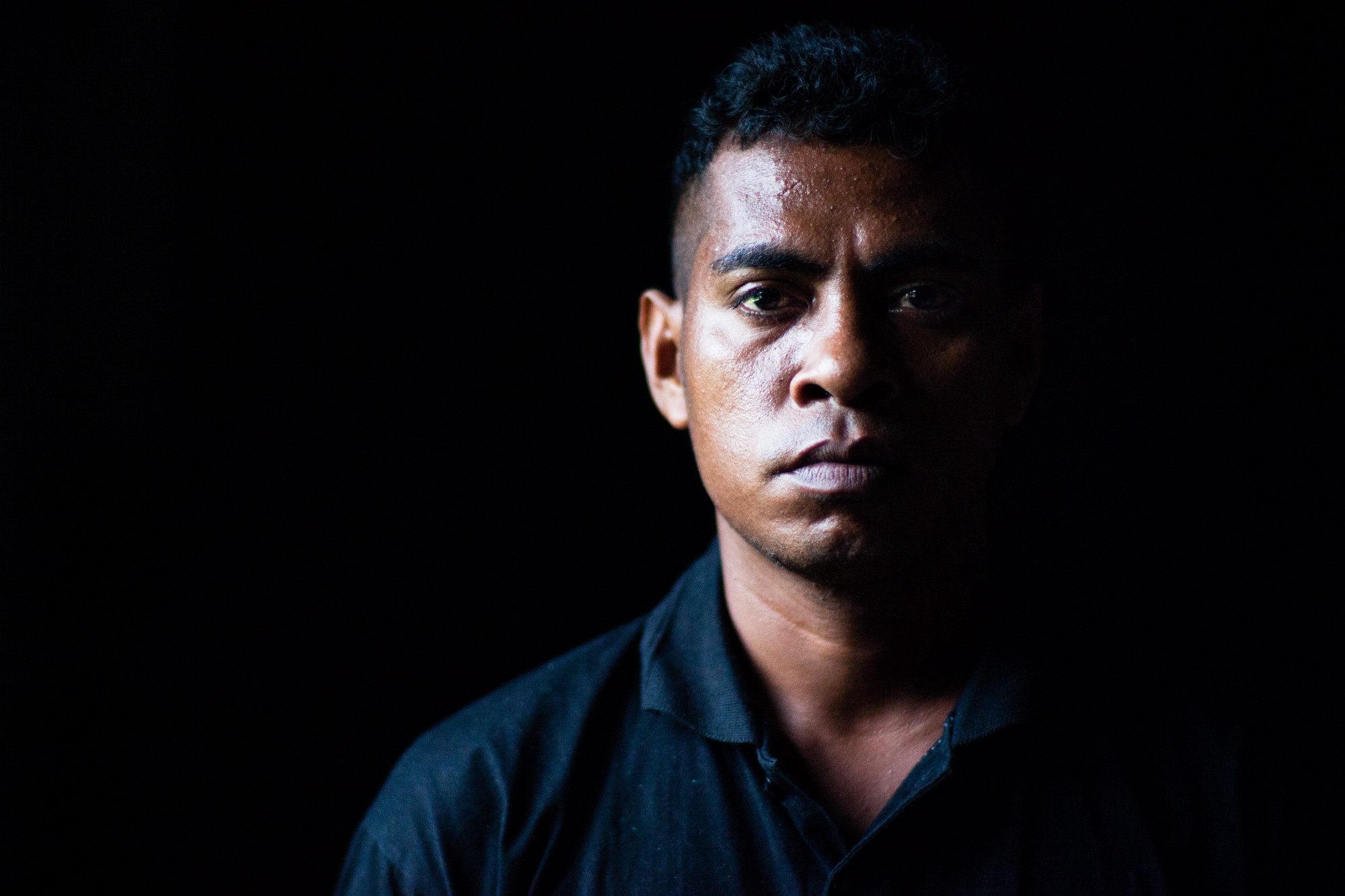
Samuel Irmuply
Mika Ganobal received word that a mob was planning to burn his house down. The attackers, it was said, were being directed by a senior district government official. That night, Ananias Djonler, who had also run against Theddy for bupati, spent the entire night with Mika and his wife, now pregnant, to help them guard their home. Ananias, then in his early 40s, had a jabu relationship, a special form of kinship, with the official. He thought that if he stayed with Mika, the official might hesitate to send the mob. “You are not allowed to marry each other, or make war with each other,” Ananias said, describing the elements of jabu. “Or kill each other. It’s one piece of local wisdom you are grateful to have.”
The violence, and the role of state forces, was not without precedent. The National Commission on Human Rights, known as Komnas HAM, had been monitoring thousands of land conflicts across the country and would later note the role of the military and police in helping companies forcibly take land from indigenous groups. It matched a picture seen across the globe, from Southeast Asia to Africa and Latin America, where political and corporate interests conspired with often deadly consequences for marginalised rural communities. An analysis by the NGO Global Witness found that 95 people around the world were killed defending their land and forests from corporations in 2013.
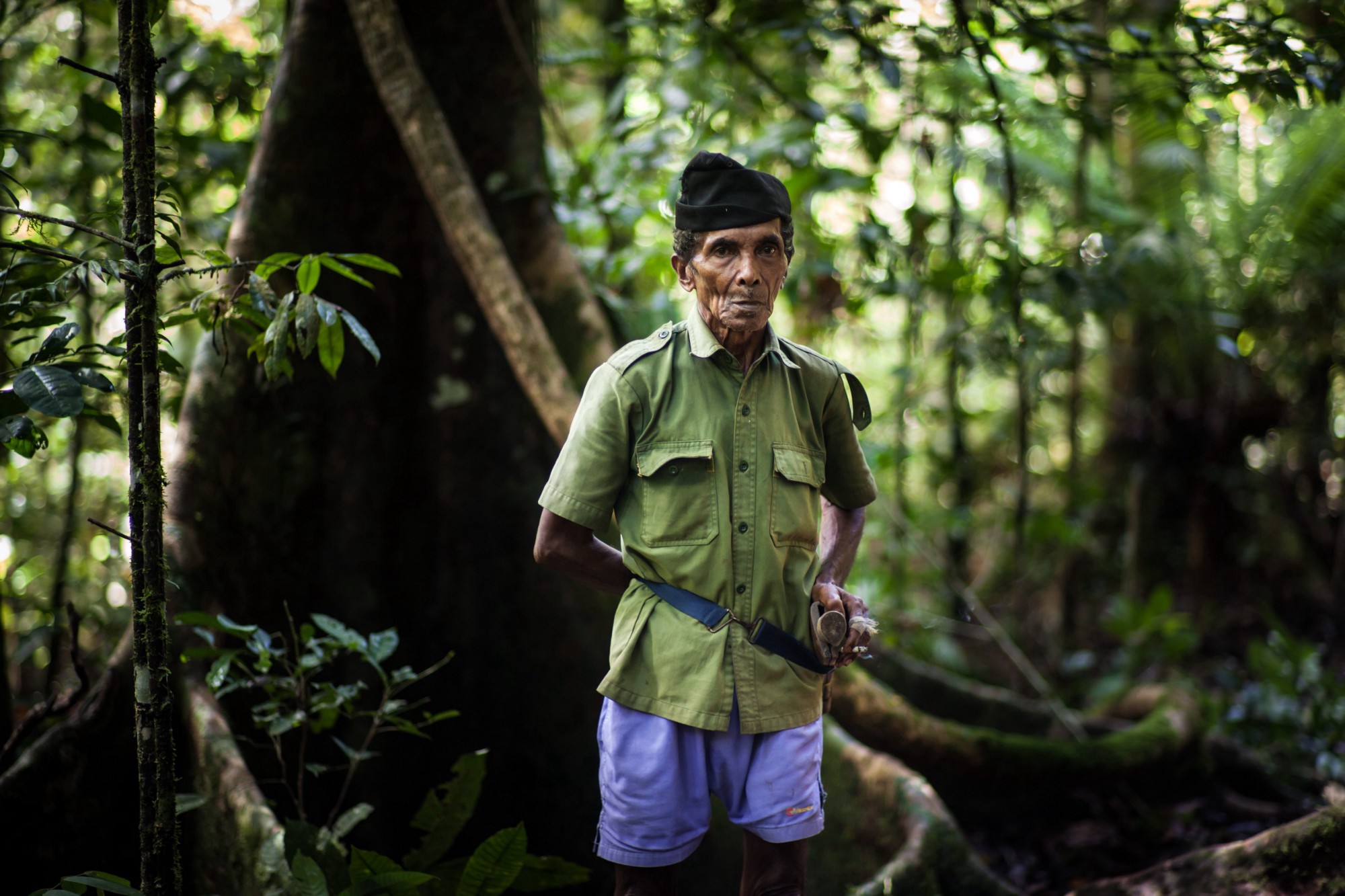
Mika’s father, Josephus Ganobal, in the forest near his home in Lorang
In the wake of the Constitutional Court ruling on indigenous lands, Komnas HAM would convene a series of hearings across Indonesia, examining dozens of cases to understand the harm being inflicted on communities in the name of development. In early December 2013, Komnas HAM set off for Aru, to delve into the growing storm surrounding the sugar plantation as part of its preliminary research.
Around the same time, dozens of Aruese elders convened in Dobo to establish an Aru chapter of AMAN, the organisation that had led the legal challenge in the Constitutional Court. But the police tried to disperse the meeting on the grounds that they didn’t have a permit. Yohanes Balubun, the head of AMAN’s office in Ambon, who had traveled to Dobo for the event, was dragged off to the police station. The events illustrated, with a dark irony, the need for Komnas HAM’s inquiry. When its findings were released in 2016, they would catalogue the displacement, violence and intimidation to which indigenous communities living in forests annexed by the state had been subjected. For now, it was up to the activists to draw attention to the oppression they were facing.
But even the motives of those who sought to do so were called into question. Jacky and others in Ambon were cast as outsiders interfering in local affairs. “The people who are shouting on behalf of the Aruese aren’t even from Aru,” Siprianus Alatubir, an Aruese who had helped Menara’s surveyors navigate the islands, told a journalist in Ambon. “I don’t think there are any landowners who object to this investment because the sugar plantation is strategic for the economic development of Aru and Maluku as a whole,” he added.
“Not every struggle can be won. But even in defeat, history will remember your struggle, that we bet on humanity, on the environment.”
Some called the integrity of the Dobo activists into question, claiming they had been put up to it by a rival company to Menara. “This allegation continues to be built up with the aim of fomenting antipathy and at the same time dividing the movement resisting the Menara Group,” Rudi Fofid wrote in an article titled “David and Goliath in the Aru Islands,” published with Maluku Online in mid-December 2013. “The people of Aru should be very careful of this politics of divide and conquer.”
In a region so recently torn apart by violence, division could be deeply dangerous. Jacky had emphasised unity not only as a precondition for winning the campaign, but also because he knew how dark things could turn. Yet things began to fray, with Menara’s presence threatening to inflame existing tensions between communities that had lain dormant. In southern Aru, two neighbouring villages, Feruni and Marafenfen, had each claimed the same stretch of land for generations, but the dispute had never turned serious. But then some Feruni residents brought Menara’s surveyors into the disputed area, prompting villagers from Marafenfen to threaten them with bows and arrows.
Jacky tried to encourage the campaigners, urging them to hold the line. “I told them not every struggle can be won,” he said. “But even in defeat, history will remember your struggle, that we bet on humanity, on the environment. We know that history will prove who is right and who is wrong.”
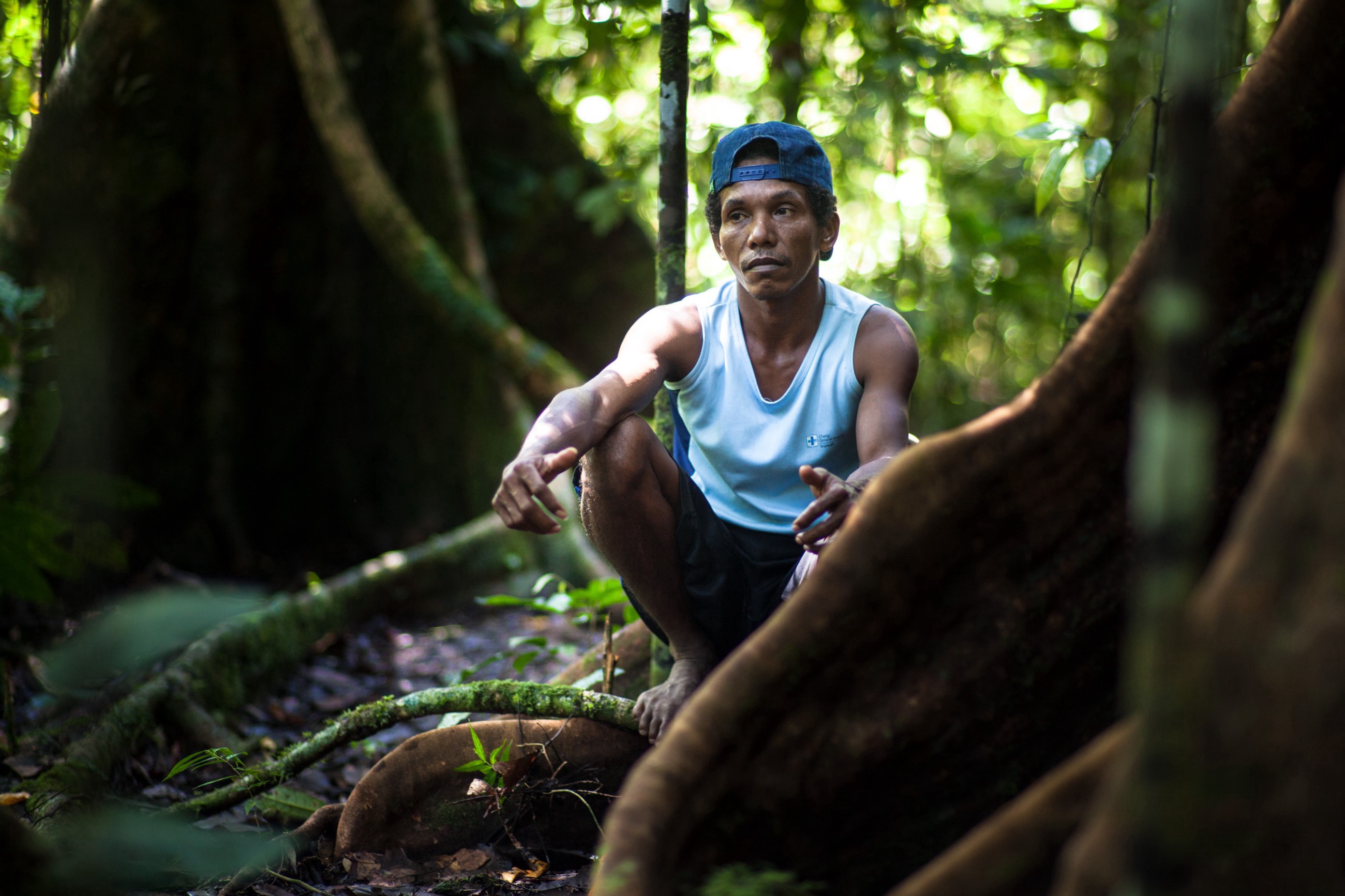
Frans Djat, brother of Mika Ganobal
Part Seven: ‘Beggars with golden bowls’
One morning in February 2014, an Aruese server carried coffee and snacks into a meeting room at the naval compound in southern Aru. Seated around the table was the acting governor of Maluku, Saut Situmorang; Aru’s top-ranking police official, Muhammad Roem Ohoirat; the commander of a naval base in nearby Papua province; and a number of district government officials and soldiers. Joining them was Chairul Anhar, the Menara president and CEO, with several of his staff.
As they talked, the server surreptitiously snapped photos with his phone.
For months, Maichel Koipuy, the young journalist, had been working to establish moles inside every major political institution in Aru. By the time of the meeting, he had a network of prying eyes that could inform him of events across Aru. Even the man who drove people into town from Rar Gwamar Airport in Dobo was reporting on the comings and goings of officials and businessmen.
News of the naval base meeting found its way to Maichel via villagers living in the area who worked on site. Leaks had regularly fed the campaign; it was how they’d obtained copies of Menara’s permits and how they discovered that members of the district parliament had met with Menara in Jakarta. Before long, the photos from the server were in Maichel’s hands too.
The substance of the meeting was soon fleshed out by another mole who had been at the table. Acting governor Saut had assured Chairul that his firm would be given the green light to operate by April, beginning with the construction of a sugar factory. Aru, he had said, was “just a stretch of reeds” that corporate investors should have a chance to develop.
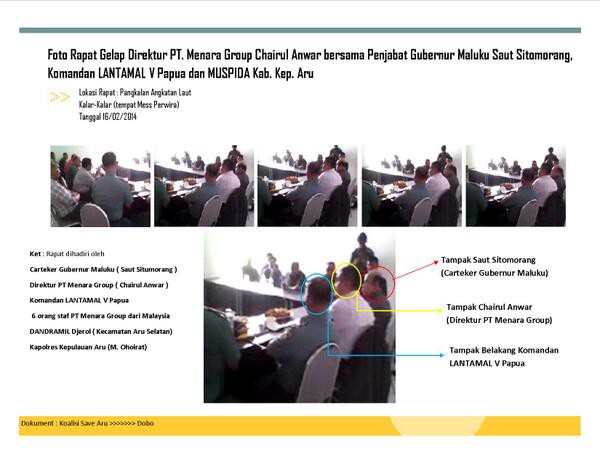
An image put out by the campaign showing the photos taken by the server, identifying the people in the meeting
Next, the “information chain” kicked into high gear. The activists put out a flurry of social media posts about the meeting. The following day, Kabar Timur, one of Maluku’s biggest newspapers, published an article on its website reporting that Saut had taken a chartered plane to the naval airfield in Marafenfen before continuing on to Kalar-Kalar by speedboat. The “dark meeting,” it reported, had lasted for more than five hours.
The news was electrifying for a growing audience who knew decisions were being made behind closed doors, but who had rarely received insight into the cozy relationship between Menara and the state. The next day, Kabar Timur splashed the story across the front page of its print edition, along with a withering caricature of Saut carrying sugarcane for the company. The article noted that the date given to Menara to start operating — in April — coincided with parliamentary elections, giving security forces an excuse to crack down on dissent.
Within days, news of the meeting was making waves across the province.
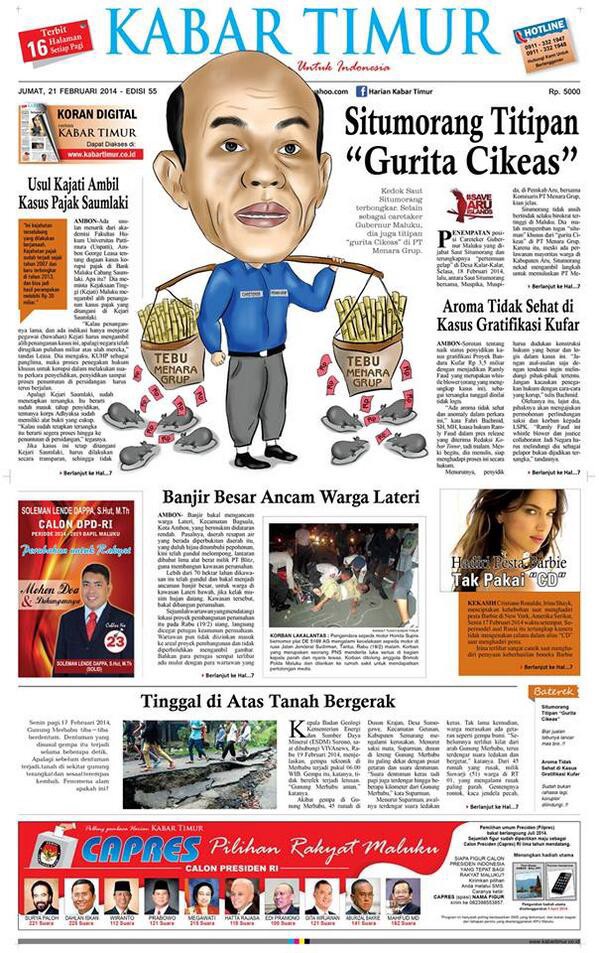
The caricature of Saut carrying sugarcane for the Menara Group
The revelation was a blow to any credibility Saut may have had as a neutral arbiter of the conflict in Aru. Journalists in Ambon, finally hooked on the story, called on him to answer for his presence at the naval base. He repeated the trope that Maluku was very poor and needed private investment, and said that if Menara didn’t start operations he would revoke its permits and give them to a firm that would.
Attention on the case began to build in Jakarta. Investigators from Forest Watch Indonesia had spent much of February meeting with activists in Aru and gathering data. In early March, the group released its findings, earning more media coverage that highlighted the suspect nature of the permit process.
Meanwhile, Jacky had managed to win over the Protestant Church of Maluku, using a similar strategy as he had at Pattimura University. Ahead of the 10th Assembly of the World Council of Churches, held in Busan, South Korea, in late 2013, he arranged for several Jakarta pastors to display Save Aru banners. “It really shocked the Indonesian delegation,” Jacky said. Later, when his own church held a conference in Maluku, he emphasised in a presentation that the campaign had already been highlighted on the world stage. “Again, it’s about identity,” he said. “How can you let other people talk about your future, and you don’t say anything?” After that, the church’s governing body formed a special committee for Aru, instructing parish leaders across the archipelago to support the campaign. Pastors entered the forest to perform “church sasis,” wearing both their black clergy robes and red headbands, a symbol in Maluku that one is ready for battle.
In Dobo, the powerful women’s sasi was finally removed from the district parliament after its members pledged to oppose the plantation. Shirtless old men wearing red headbands looked on as politicians drank a potent beverage called sopi as part of an accompanying ritual of support. One woman became entranced as she channeled the voice of an ancestor commanding the people to take a vow against the Menara Group.
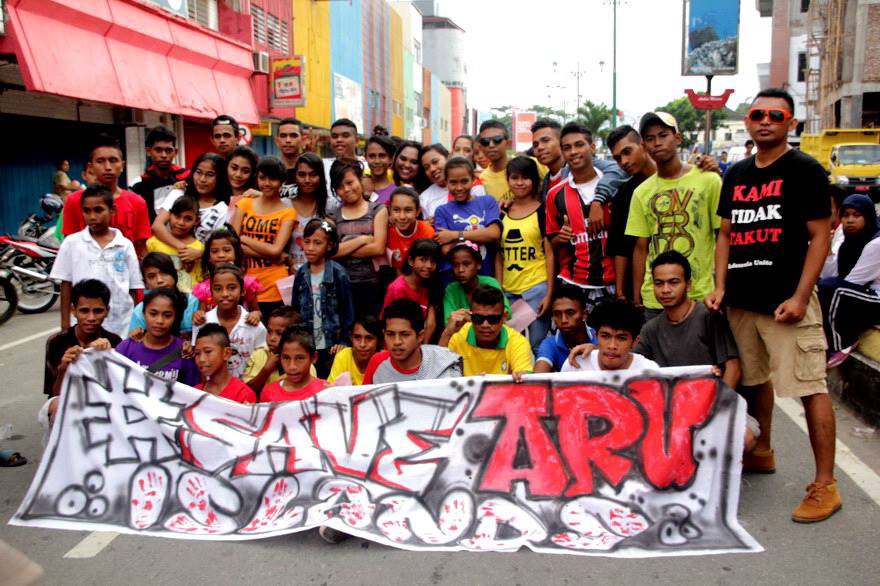
It was becoming increasingly difficult for the project’s proponents to dismiss the campaign as a minority movement that didn’t reflect the will of the people. By now, the effort to warn villagers in the interior had been going on for months. The activists had secured signed statements of rejection from 90 of Aru’s 117 villages, either by visiting communities or meeting with their representatives in Dobo. With public awareness of the groundswell of opposition rising, any officials who moved the project forward could face difficult questions about their motives. But Menara was not ready to give up the PR battle.
In mid-March 2014, the Aru district government invited dozens of village leaders from across the archipelago to a meeting at an auditorium in Dobo. Its stated purpose was prosaic, to publicise a new law governing village bureaucracy. But it also had another purpose. Mika learned that several Menara Group executives would be there. The activists feared that the attendance record, bearing the signatures of prominent community members, combined with the fact Menara had presented its plans, could be used to create the illusion that the people had been properly consulted, or even that they had approved of the project. Though the chance to meaningfully consult the Aruese had long since passed, creating the impression that at least some of them supported the plantation was increasingly pressing for the firm, as control over public perception slipped further and further from its grasp.
At the meeting, Menara executives sat at a table at the front of the room, facing an audience of village leaders in plastic chairs. In the first row of the audience, in an unsubtle display of hierarchy, district government officials, members of the security forces, and more Menara executives reclined on a line of plush couches and chairs. Among them was Dessy Mulvidas, Chairul Anhar’s right-hand man. A 49-year-old with spectacles, he looked on silently and smoked cigarettes as his colleagues at the front of the room — Hafiz Arief, balding, with a paunch, and Khatib, with a thin moustache and colourful batik shirt — extolled the benefits of the project in a PowerPoint presentation. Dessy and Hafiz were among those who had lent their names to the proliferation of corporate entities used for the project.
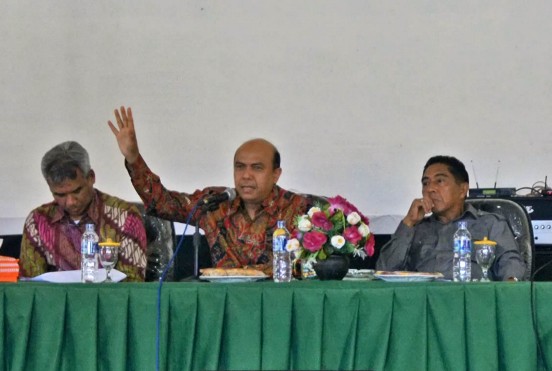
Hafiz Arief, center, and Khatib, left, address the room
Also in the audience, waiting quietly, were Simon Kamsy, the mangrove conservationist, Dolfince Gaelagoe, a retired teacher from Marafenfen, and other activists who had slipped into the auditorium. When the time came for the audience to speak, Simon soon took the microphone. He had come prepared: in his bag was a book of signatures from Aru’s people declaring their opposition to Menara’s plans. As he marched up to the table at the front of the room, he felt a wave of courage. “I wasn’t afraid, because I was fighting for my ancestral rights, for the rights of all of us,” he recalled. “If I died right then and there, the creator could judge my life.”
Simon removed the massive stack of papers from his bag. “Take it,” he told the executives. “These are letters from the people of Aru, rejecting your company’s operations in the Aru Islands.”
The moderator tried to impose order, calling on others to speak. But one by one, the village leaders stood to reject the plantation. “We can’t accept this project,” one of them explained. “Because then if we go back to our village, the villagers will kill us.”
Then one of the executives at the front of the room spoke. “We won’t force our way into Aru,” he told them. “But people of Aru, don’t let yourselves become like beggars with golden bowls.”
The audience roared. “The Aruese aren’t beggars — you’re the beggar!” Dolfince yelled. “Kicked out, come back, kicked out, come back — that’s begging! The people of Aru have never been beggars. We’re happy here.” As pandemonium reigned, the meeting was shut down without a resolution. The activists believed they had stymied an attempt by Menara to paper over one of the project’s most damning improprieties. The next day, a group of villagers massed outside the hotel in Dobo where the executives were staying, shouting that they weren’t welcome in Aru.
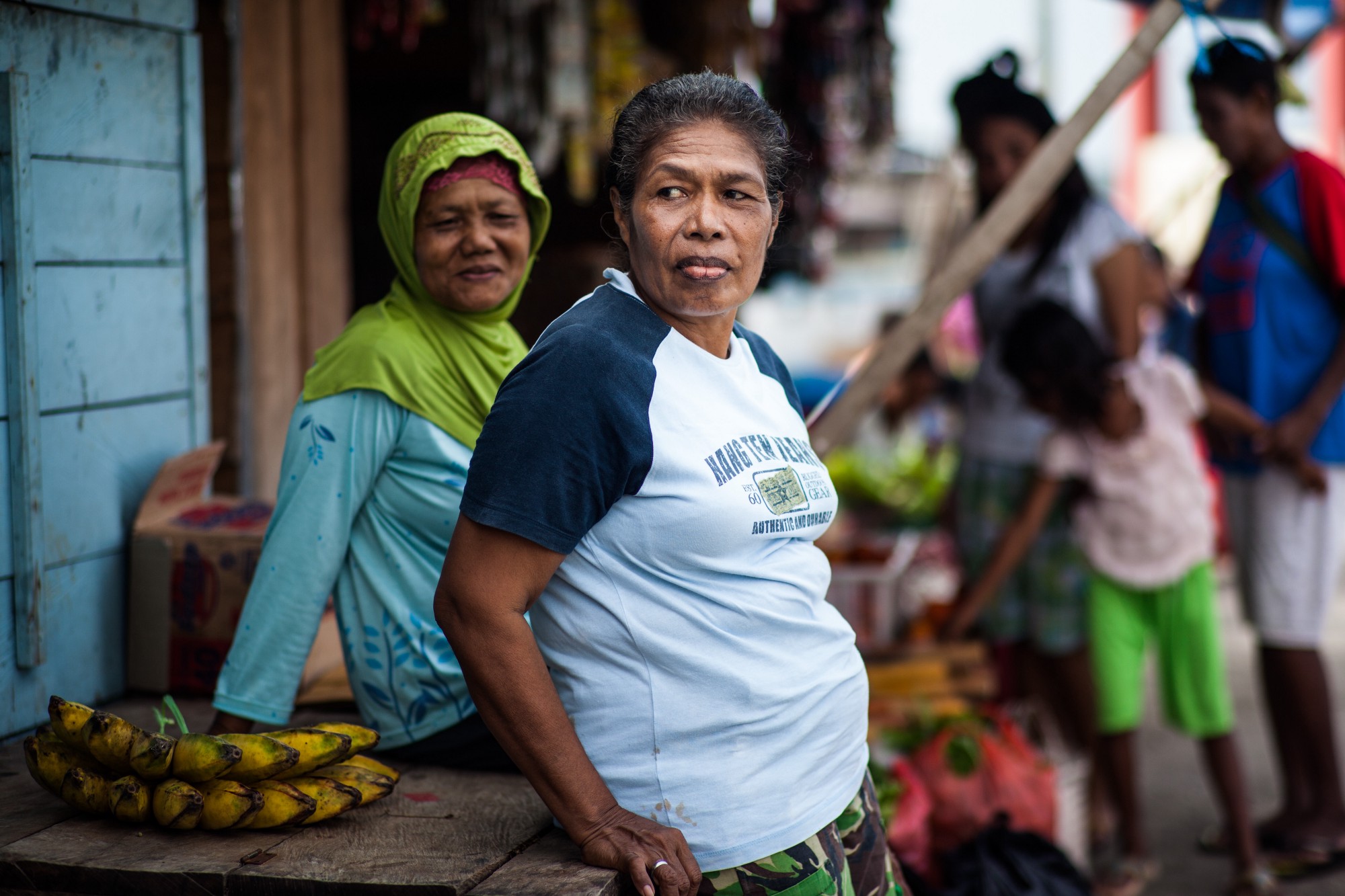
Mia Darakay, an Aruese woman who participated in the Save Aru movement, at the market in Dobo
A week later, Forest Watch and AMAN organised a “die-in,” with protesters lying on the ground playing dead, in the centre of Jakarta. Together with Mercy Barends, the advocacy groups were working their connections in the capital to press for the project’s cancellation. Before long, it was on the radar of the national anti-corruption agency and an influential presidential task force known as the UKP4. “We in the Presidential Work Unit have been tasked with investigating further,” one of its members was anonymously quoted as saying. “For this reason, I want to find some unbiased opinion about this problem. Especially as it has now attracted international attention.”
Meanwhile, in a sprawling building in the centre of Jakarta, Zulkifli Hasan, the minister of forestry, was nearing the end of his time in office. In a few months, he would be shuffled out of his political position in the wake of a presidential election, in which a reform-minded upstart named Joko Widodo was the frontrunner. The ministry had been plagued by corruption scandals for decades, presiding as it did over the vastly valuable resource of Indonesia’s rainforests, and under Zulkifli’s stewardship it had been little different. In the next few months he would sign off on a bonanza of permits that consigned thousands of square kilometres of forest to destruction.
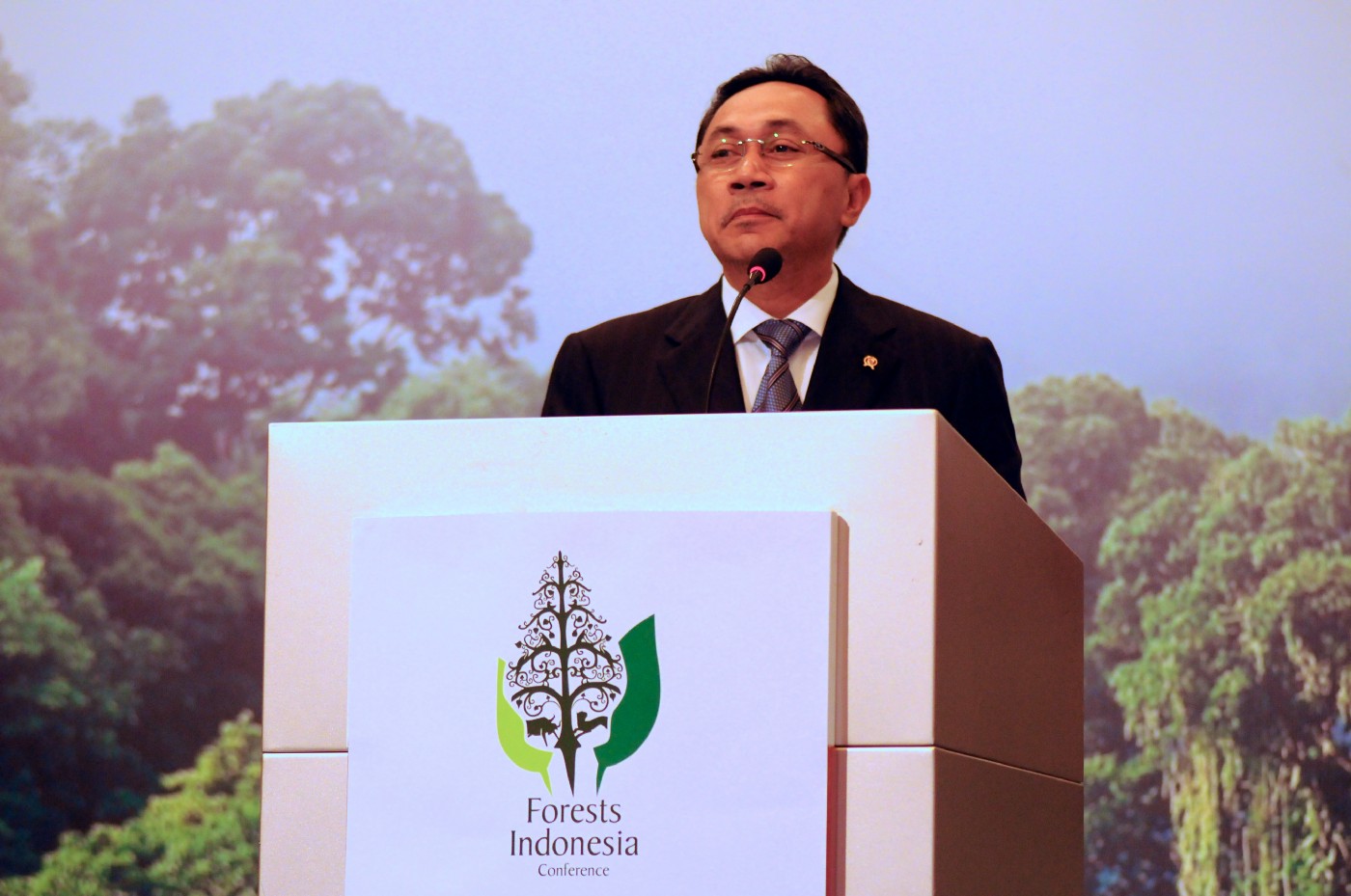
Now, the permits for Menara sat on his desk. But the storm was growing. In Aru, it was impossible for anyone to credibly claim widespread public support for the project; the company and politicians could barely sneeze without news getting onto the Save Aru social media feeds. The movement was gaining higher-profile supporters; at a major international climate event in Ambon, Costansius Kolatfeka made a speech opposing the project, with the backing of a former environment minister, Emil Salim, who had lent his weight to the movement. An online petition started by Glenn Fredly had gained nearly 15,000 signatures calling on Zulkifli to cancel the project. In Jakarta, the activists were getting into the room with anti-graft investigators who held the authority to wiretap phones.
“It kept building and building and building, until finally it wasn’t just the Aruese who were talking about this land grab,” Mercy Barends said. “People from other countries, people in Jakarta, everyone was talking about Save Aru.”
“It kept building and building and building, until finally it wasn’t just the Aruese who were talking about this land grab. Everyone was talking about Save Aru.”
As pressure mounted, Zulkifli instructed his staff to review the EIA that had by now been eviscerated by the academics in Ambon. On April 11, eight months after Collin arrived at Jacky’s doorstep, the minister made his announcement. Speaking to reporters on the sidelines of a press conference in Jakarta, he said the ministry had determined Aru was “not a good fit for sugarcane” and that the project would be halted.
Though the activists accepted the news as a cautious victory, no formal cancellation came, and the project hung over Aru like a spectre. But, true to his word, Zulkifli held off from signing the final permits, even as he approved the destruction of vast swaths of forest for plantations elsewhere in the dying days of Susilo Bambang Yudhoyono’s administration. In October 2014, Zulkifli was replaced by a new minister, Siti Nurbaya Bakar, as part of a new administration under President Widodo that initially promised a new dawn for Indonesia’s beleaguered indigenous peoples.
At her first opportunity to meet Siti, Mercy challenged her: would the project be revived? As far as Siti was concerned, the project was dead. If any Menara Group companies were still poking around in Aru, Siti said, they were “zombies.” “Until today, she hasn’t changed that decision,” Mercy said.
Over a period of eight months, a dozen students, a priest and two words on a scrap of paper evolved into a formidable grassroots campaign in one of the most cash-poor, remote parts of Indonesia. The Save Aru movement took on a powerful company trying to make billions of dollars from transforming their land into a sugar plantation — and they won.
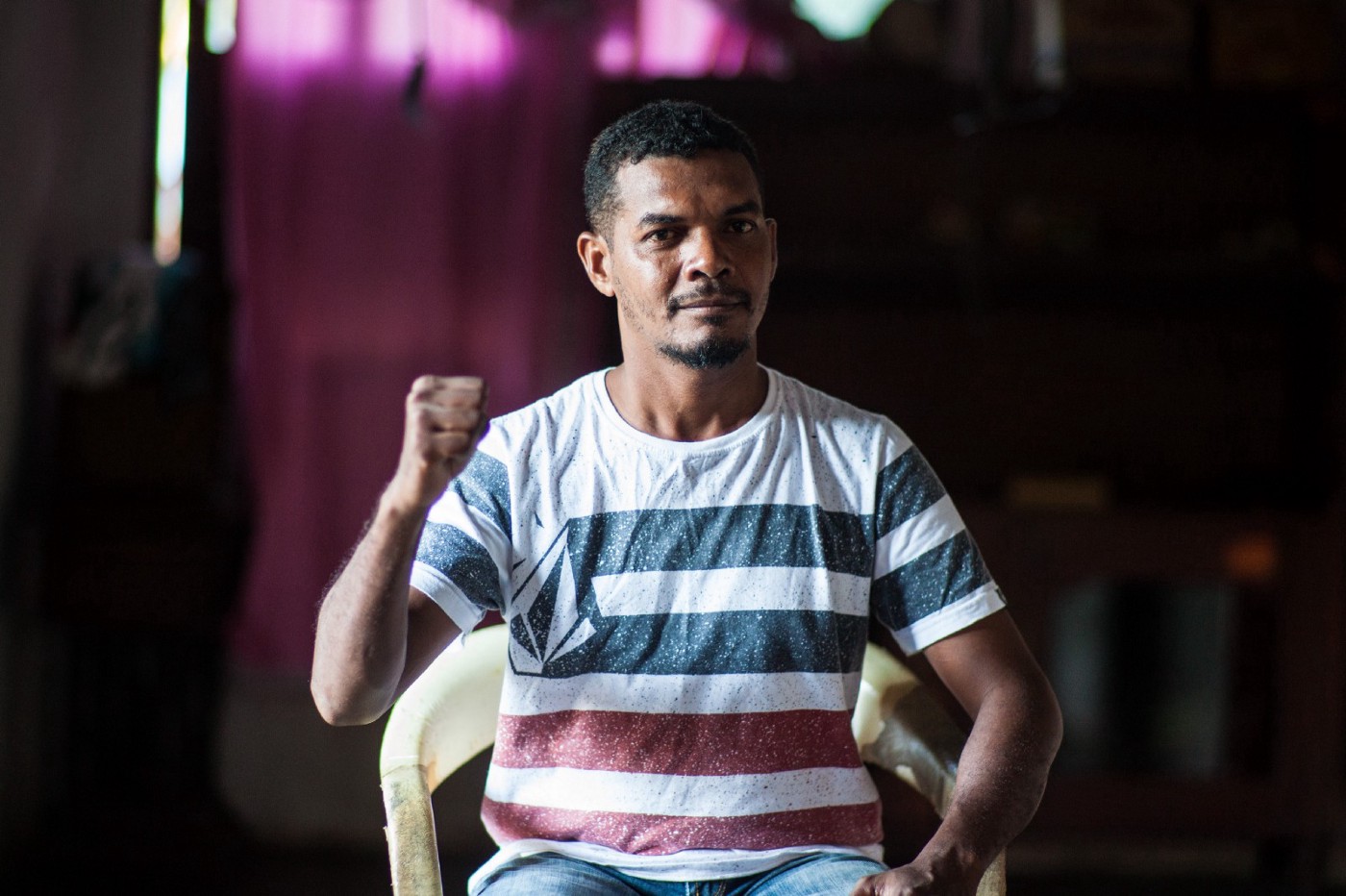
Mika Ganobal
“The company had so much support; they had the infrastructure, they had the security forces on their side and everything else,” Jacky said. “It would have been easy for them to destroy the people’s movement if they didn’t have strength in their identity. Strengthening their identity, strengthening their spirit as volunteers was our way of fighting these external forces.”
The harder they pushed back, the more they revealed about the system that sought to subjugate them. They exposed the brazen lack of process, the flawed science, the convergence of political and corporate interests, and the failure of the few legal safeguards meant to protect the fragile rights of Indonesia’s indigenous people. Still, it was only with this herculean effort, and the support of people from across Indonesia and the world, that they could kill the project.
On the same day that Zulkifli made his announcement, Mika’s wife gave birth to a baby boy. They named him Leisava — Lei, for lelaki, meaning “boy,” and Sava, for Save Aru. The Boy of Save Aru.
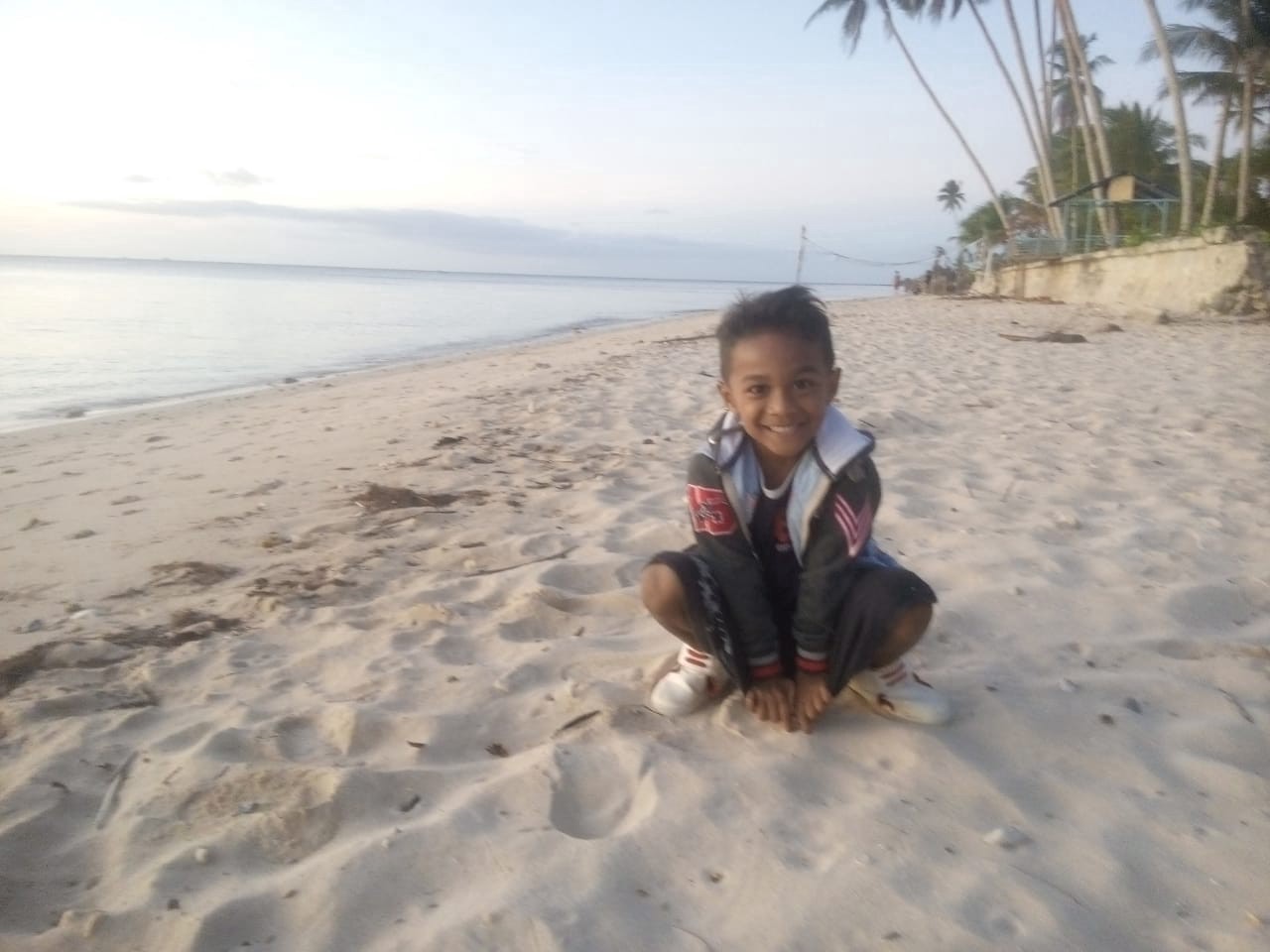
Leisava Christo Yanada Ganobal at Kora Evar Beach near Dobo
Epilogue
The Menara Group was pushed out of Aru. But in nearby Papua province, it was able to pursue an almost identical plan with barely any attention. There, it remains a minority shareholder in what could be the largest oil palm plantation in Indonesia, after selling off most of its rights to secretive investors. A previous investigation by Mongabay, Tempo, Malaysiakini and The Gecko Project revealed how some of the same characters who were confronted by the Aruese — Chairul Anhar and Dessy Mulvidas — were pushing through that project just as they were being cast out of Aru.
The parallels between the projects in Aru and Papua are striking: a vast scheme based on permits issued by a politician later jailed for corruption; a failure to consult with the people affected by the project; a suspect EIA process; and a close relationship with the local police and military. Unlike in Aru, however, no mass movement has consolidated in opposition to the plantation in Papua. While some indigenous communities have protested, placing sasis on their land and working with activists in Jakarta, they have yet to capture the attention of the wider world.
Today, the rainforest is falling in Papua, generating vast greenhouse gas emissions and pushing industrial-scale agriculture into one of the world’s last great expanses of wilderness. Chairul Anhar, meanwhile, enjoys a close relationship with the top echelons of the Indonesian and Malaysian political establishments. In February, his daughter married the son of Tjahjo Kumolo, Indonesia’s new interior minister, in a wedding witnessed by President Widodo.
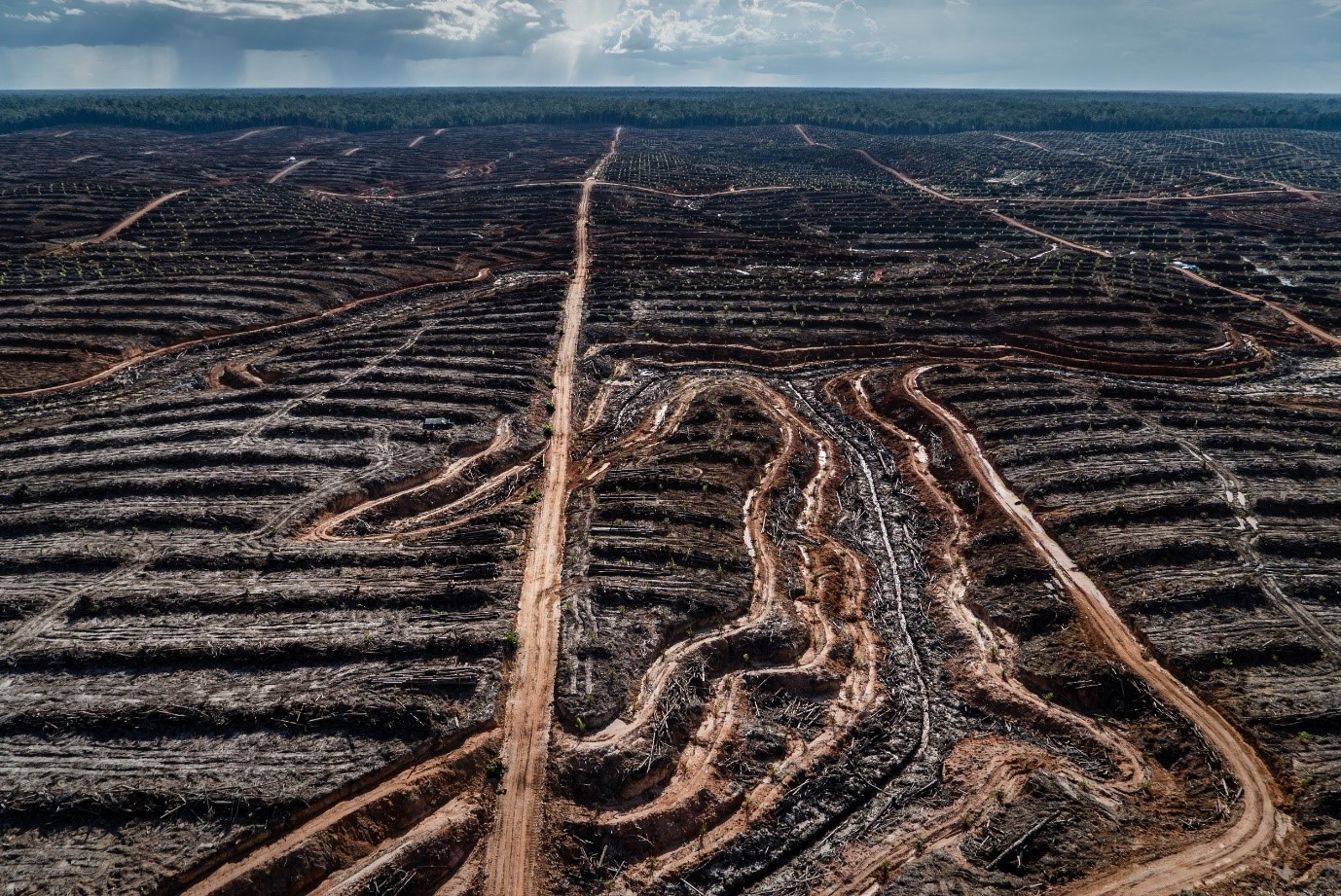
Forest clearance has already started in the Menara Group’s project in Papua. If the entire area licensed out for the plantation is bulldozed as planned, it will release more emissions than Belgium produces by burning fossil fuels each year
The conditions that allowed Menara to gain a foothold in both Aru and Papua remain largely unchanged. Since the Constitutional Court decision, President Widodo has formally recognised the rights of 55 indigenous communities to forests spanning, in total, 248 square kilometres. But AMAN has mapped more than 77,600 square kilometres of customary forests, a combined area almost as large as Ireland, it says belongs to 704 indigenous groups. Meanwhile the parliament stalls on a bill that would cement those rights in law.
The state continues to use its control to promote a development model driven by large-scale agribusiness projects that pay little heed to the views of the people most impacted. Since September, there have been sustained mass protests in cities across Indonesia, the largest since the fall of Suharto, in response to a push by the outgoing parliament to pass a raft of controversial bills that would, among other things, strengthen the hand of corporate natural-resource investors against rural communities and weaken the anti-corruption agency. Tens of thousands of people have flooded the streets, borrowing tactics from pro-democracy protesters in Hong Kong; at least two students have been shot dead by police, dozens of people hospitalised with injuries and hundreds arrested. The hashtag #DemocracyCorrupted has trended on Twitter.
In Aru, the zoning plan driven by Theddy Tengko that stripped much of the archipelago of protected status remains unchanged. Until the conservation status of its forests is restored, more permits could be issued, in a lingering legacy of Theddy’s administration.
So it was that in October 2017, a businessman named Andi Syamsuddin Arsyad, better known as Haji Isam, arrived in Aru in a private plane, with the minister of agriculture, Andi Amran Sulaiman, in tow. The two men are reportedly cousins, from the same part of the Indonesian island of Sulawesi. Isam made his name in the coal mining industry of southern Borneo; Amran’s first company was founded with a patent for rat poison, and he has since diversified into plantations and mining.
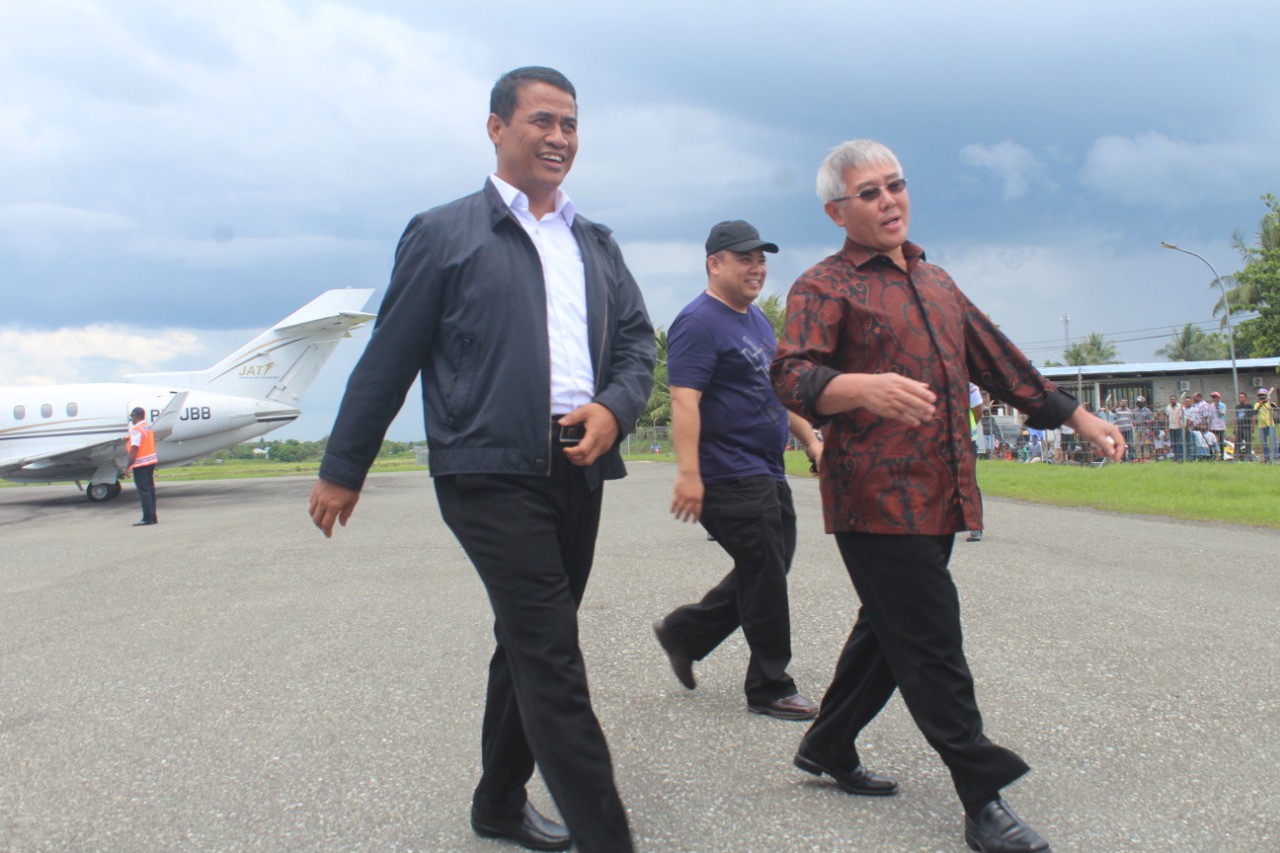
Agriculture minister Amran Sulaiman, left, strides down the tarmac in Dobo with Johan Gonga, right, and businessman Haji Isam, second from right
They came to Aru to pitch a cattle project, for which the first round of permits were issued, by Aru’s new bupati, Johan Gonga, in July. It falls across the lands of Anatje Siarukin and Dolfince Gaelagoe, among the matriarchs of the Save Aru movement. In August, the two women were the lead signatories on a letter to the president’s chief of staff, Komnas HAM and the Ministry of Environment and Forestry, alleging the bupati had violated their rights by issuing the permits.
The Aruese are still striving to improve their lot — for raised incomes, better infrastructure, greater access to education and health care. But the Save Aru veterans maintain a belief that there exists a form of development predicated on the lives they already lead, one that might lift them up without destroying what they already have. “We need something far more promising for the lives of the Aruese people, that doesn’t harm the environment,” Collin Leppuy said. As the natural world retreats elsewhere, finding a way to strike that balance has never been more pressing.
